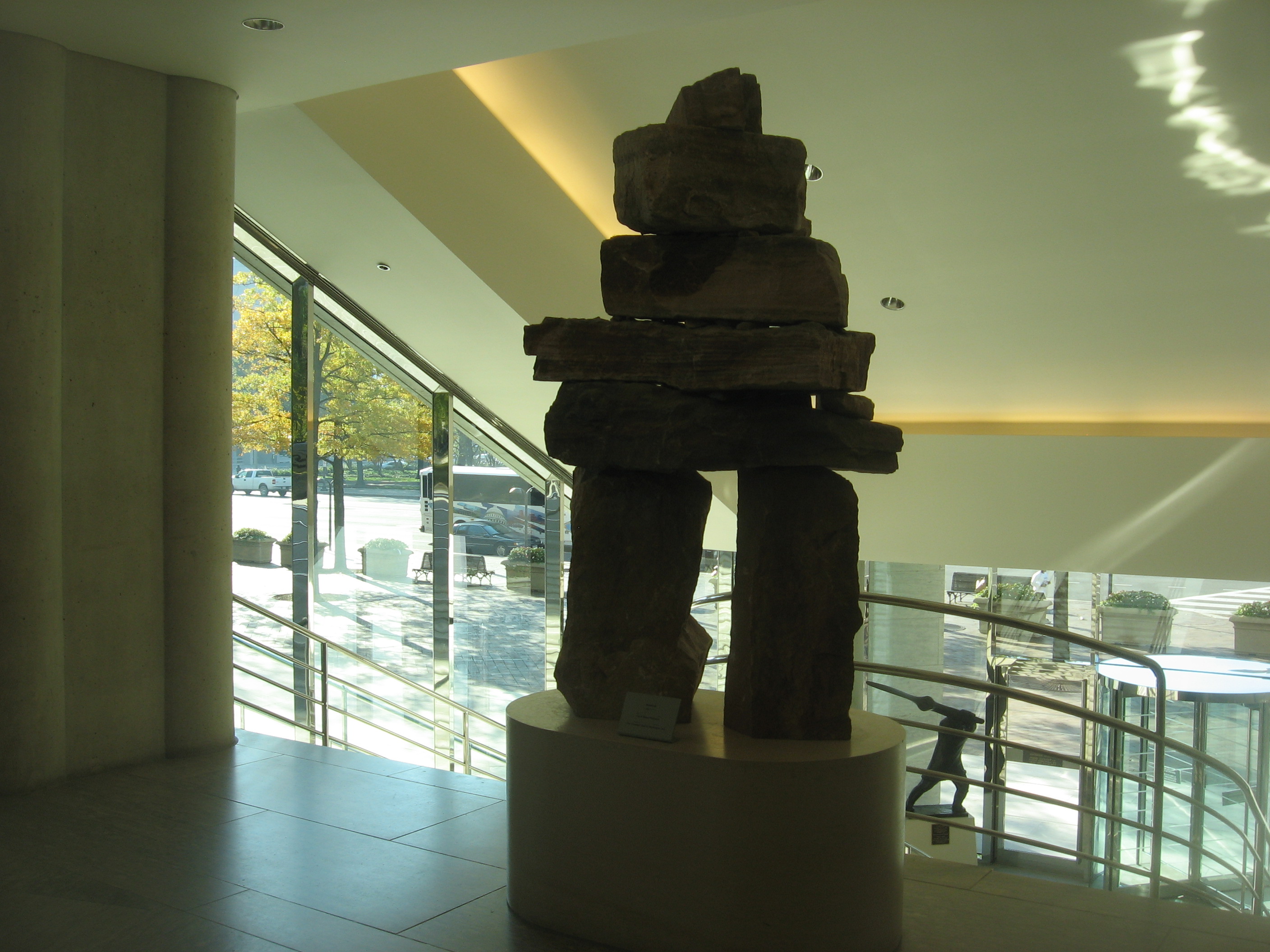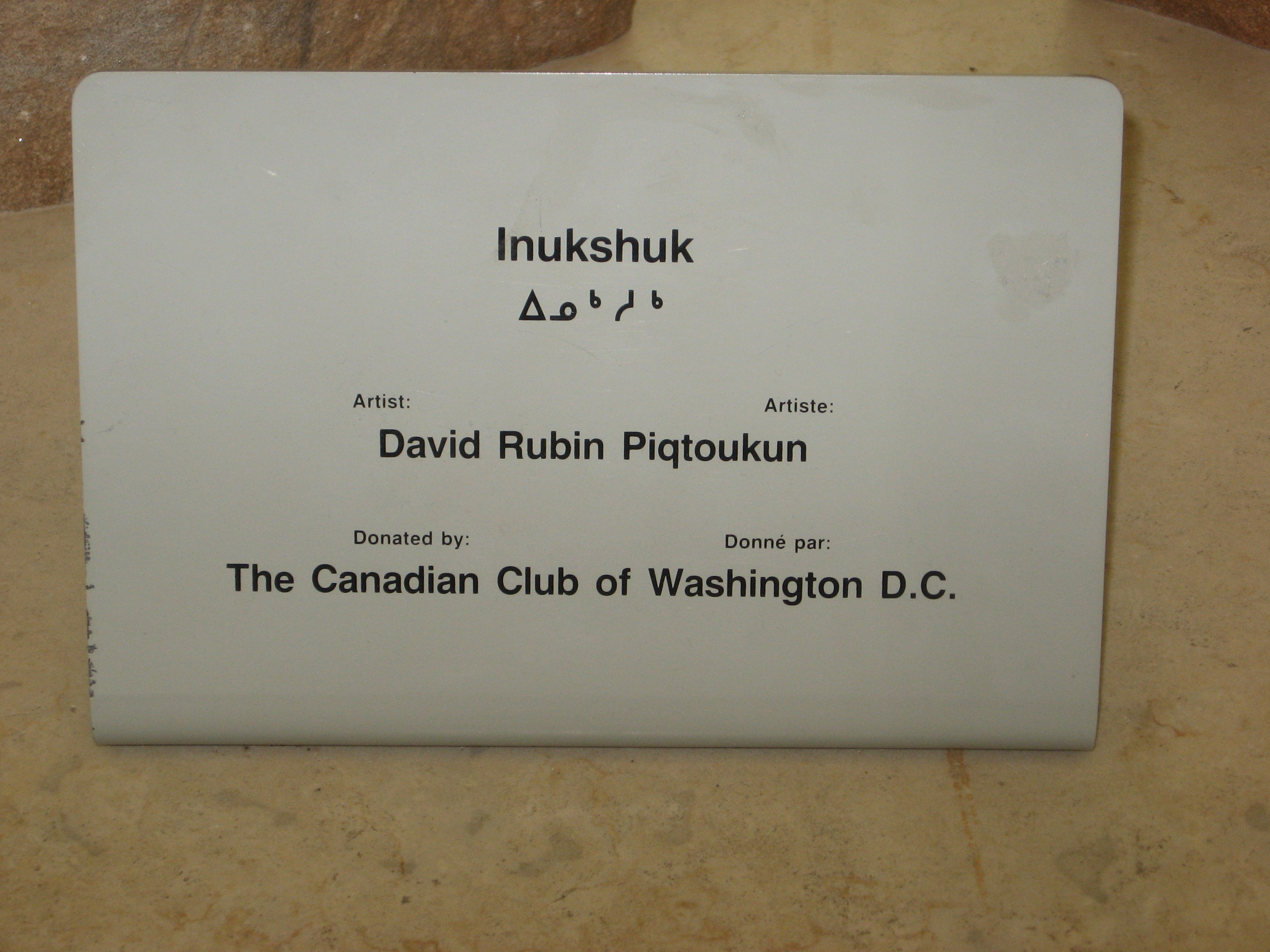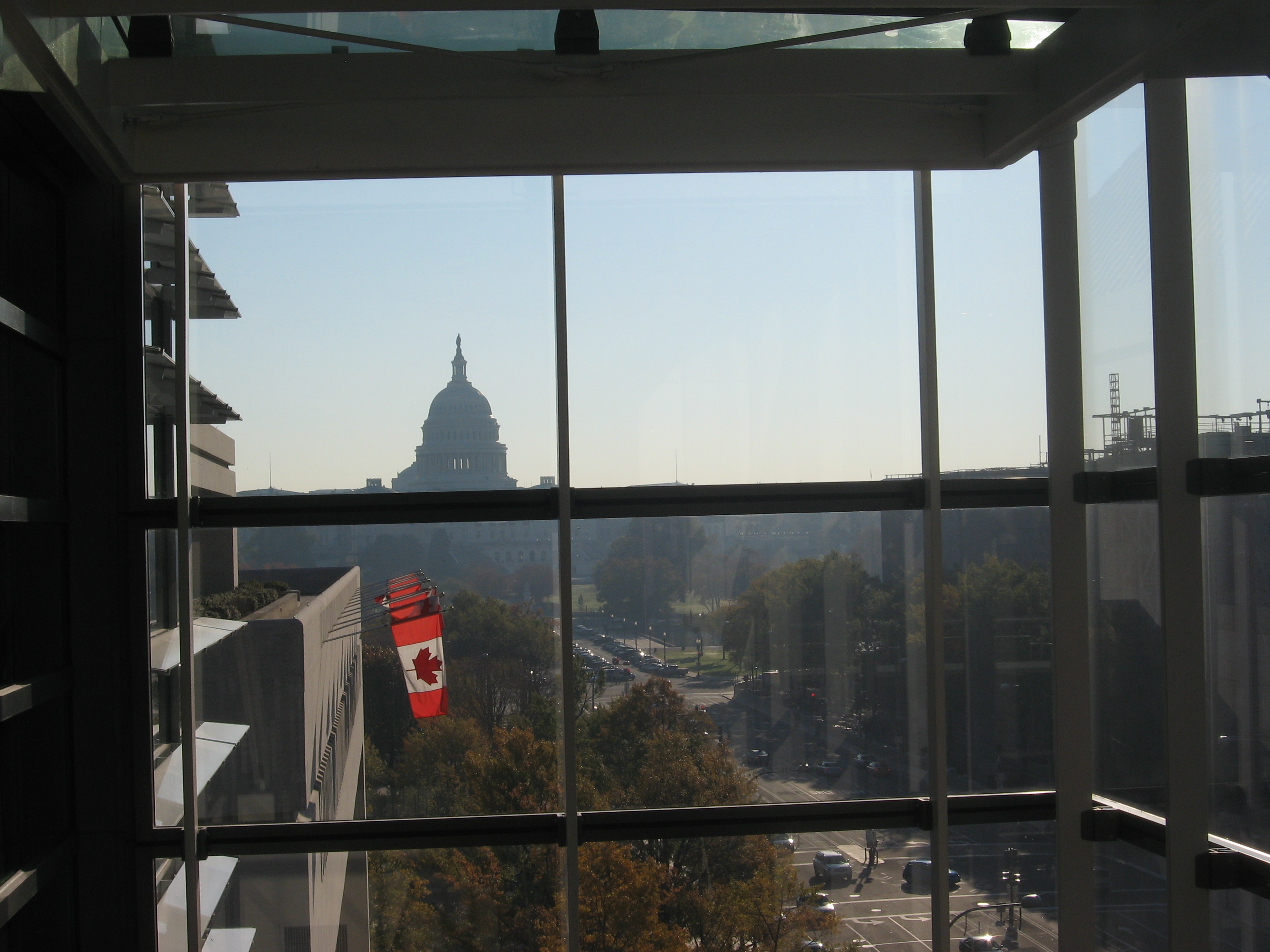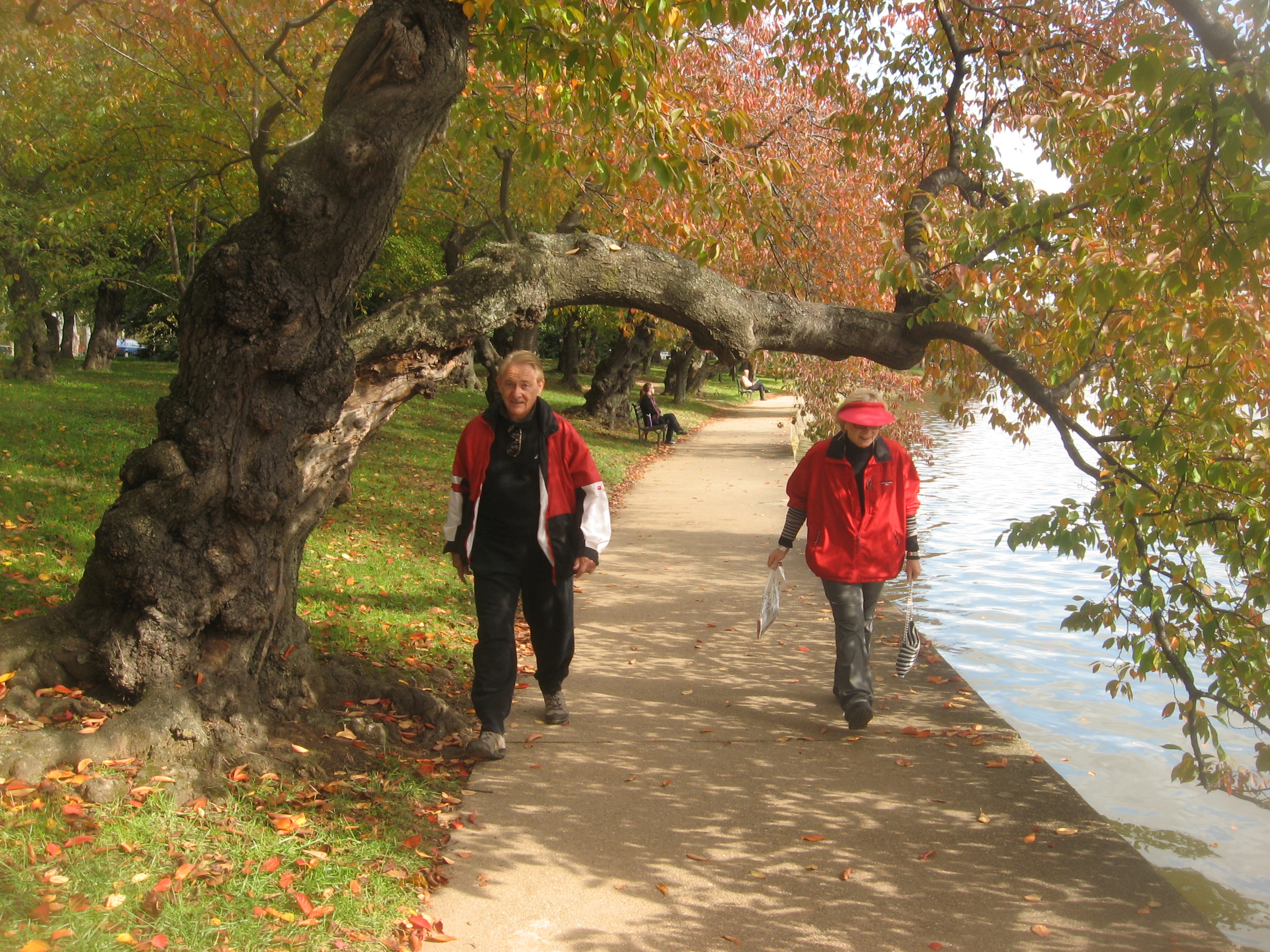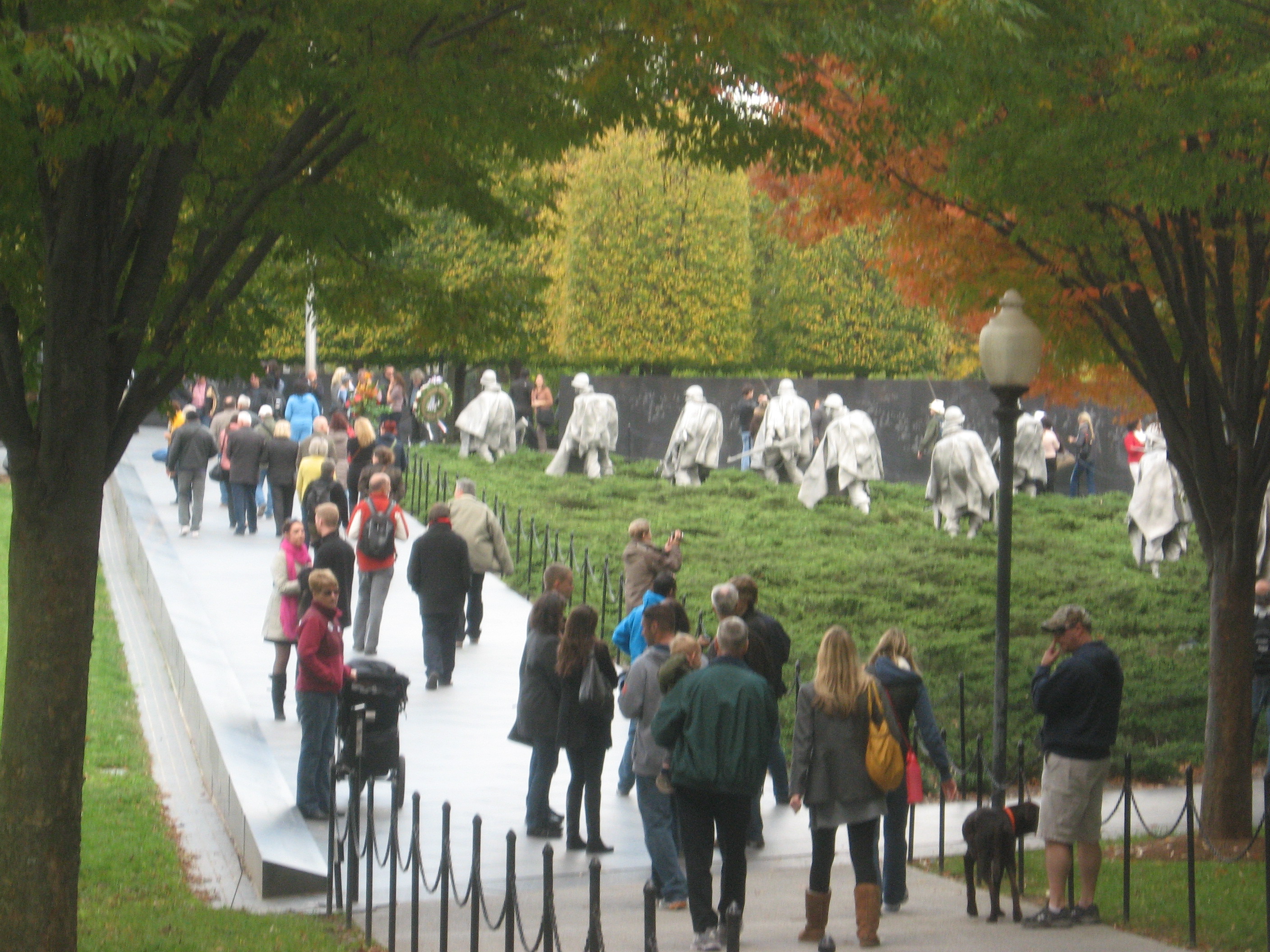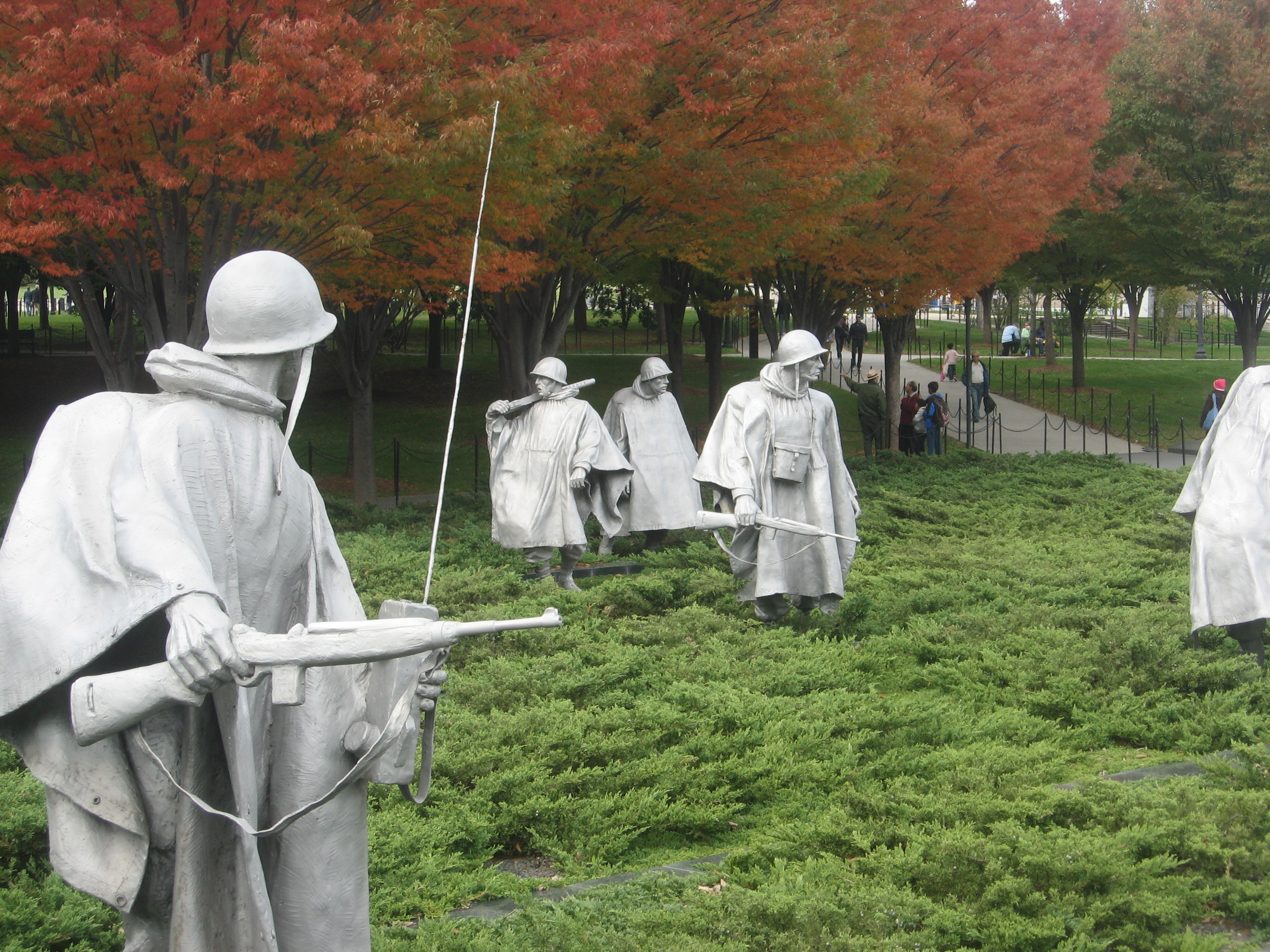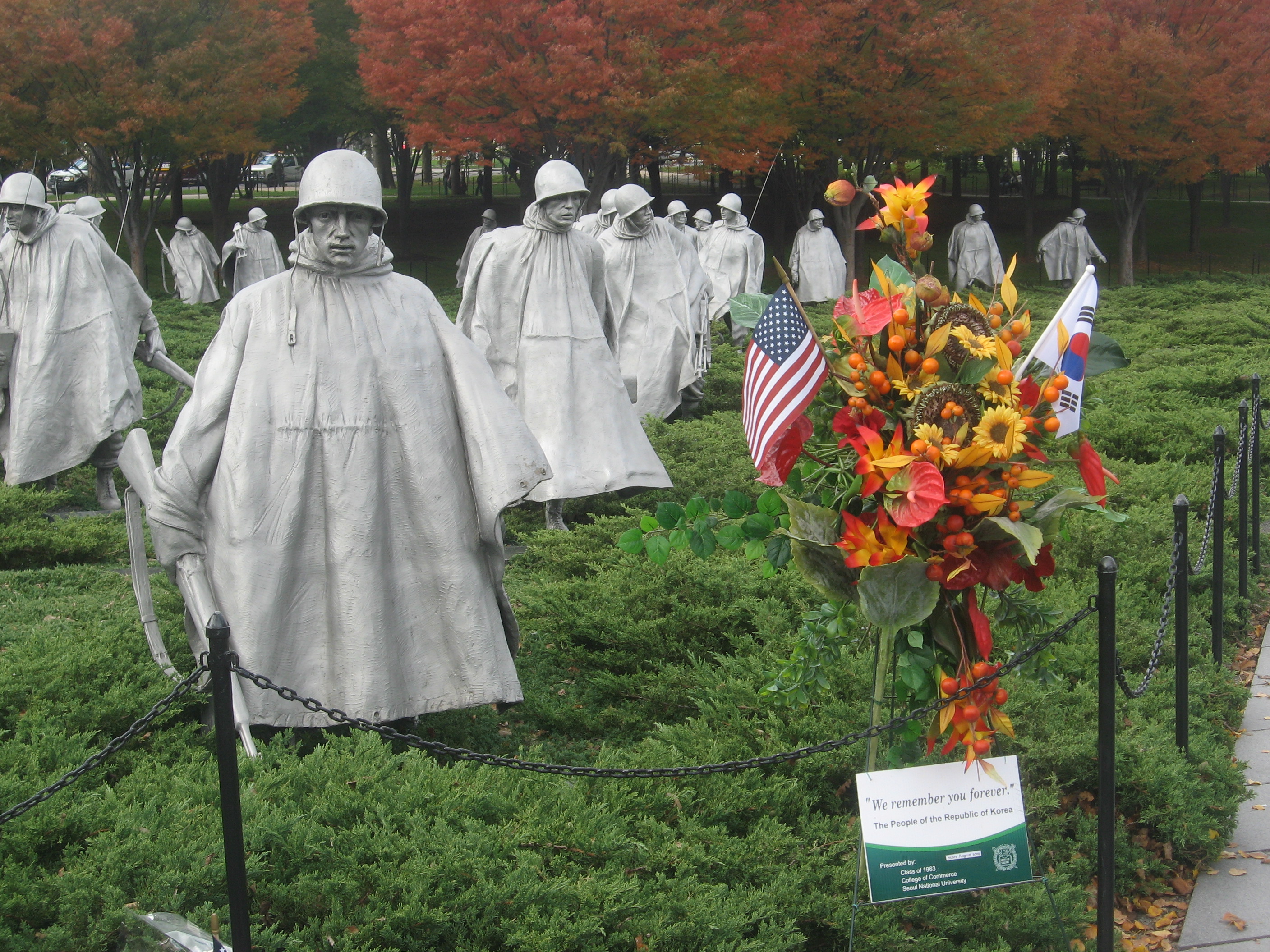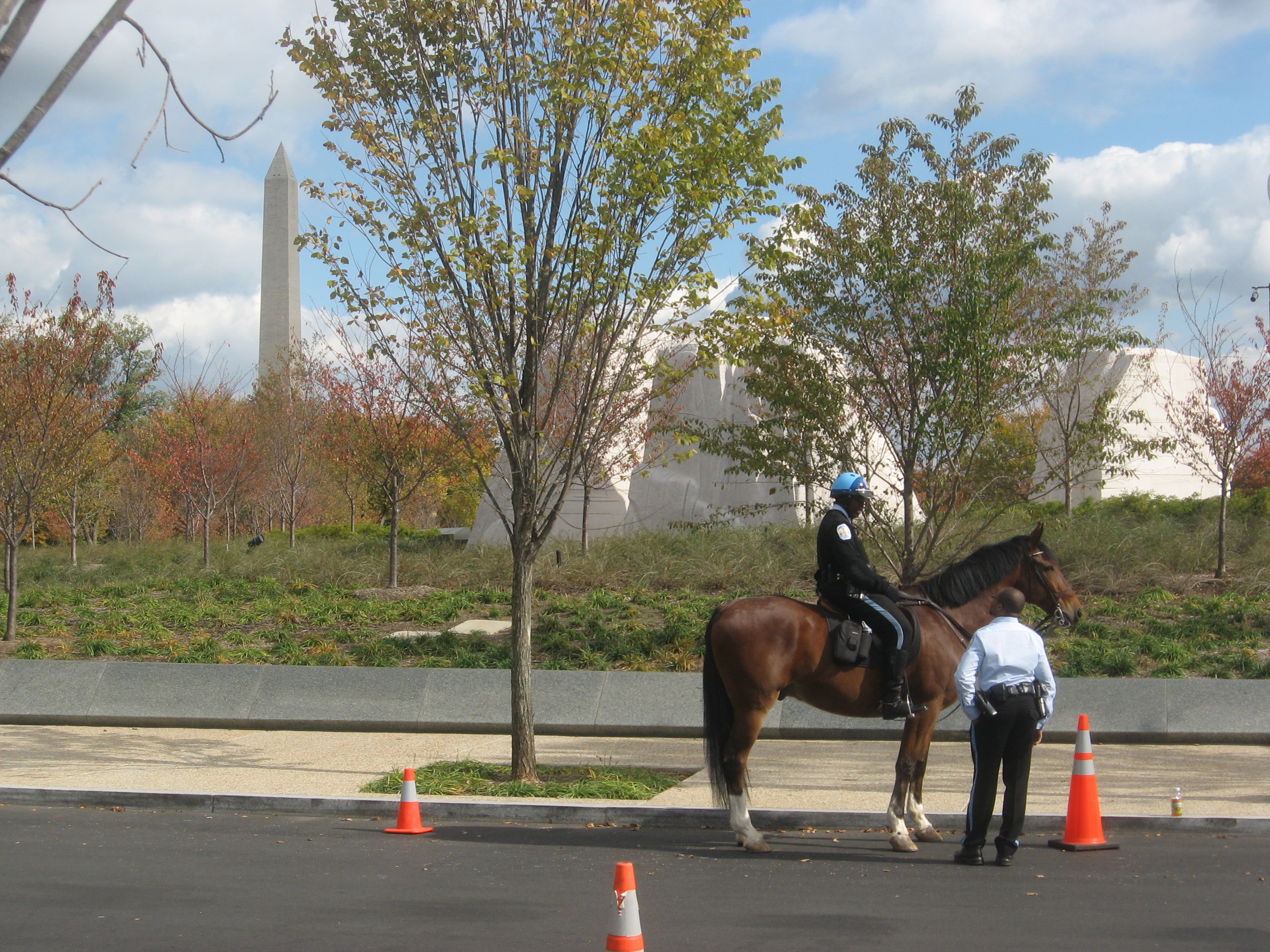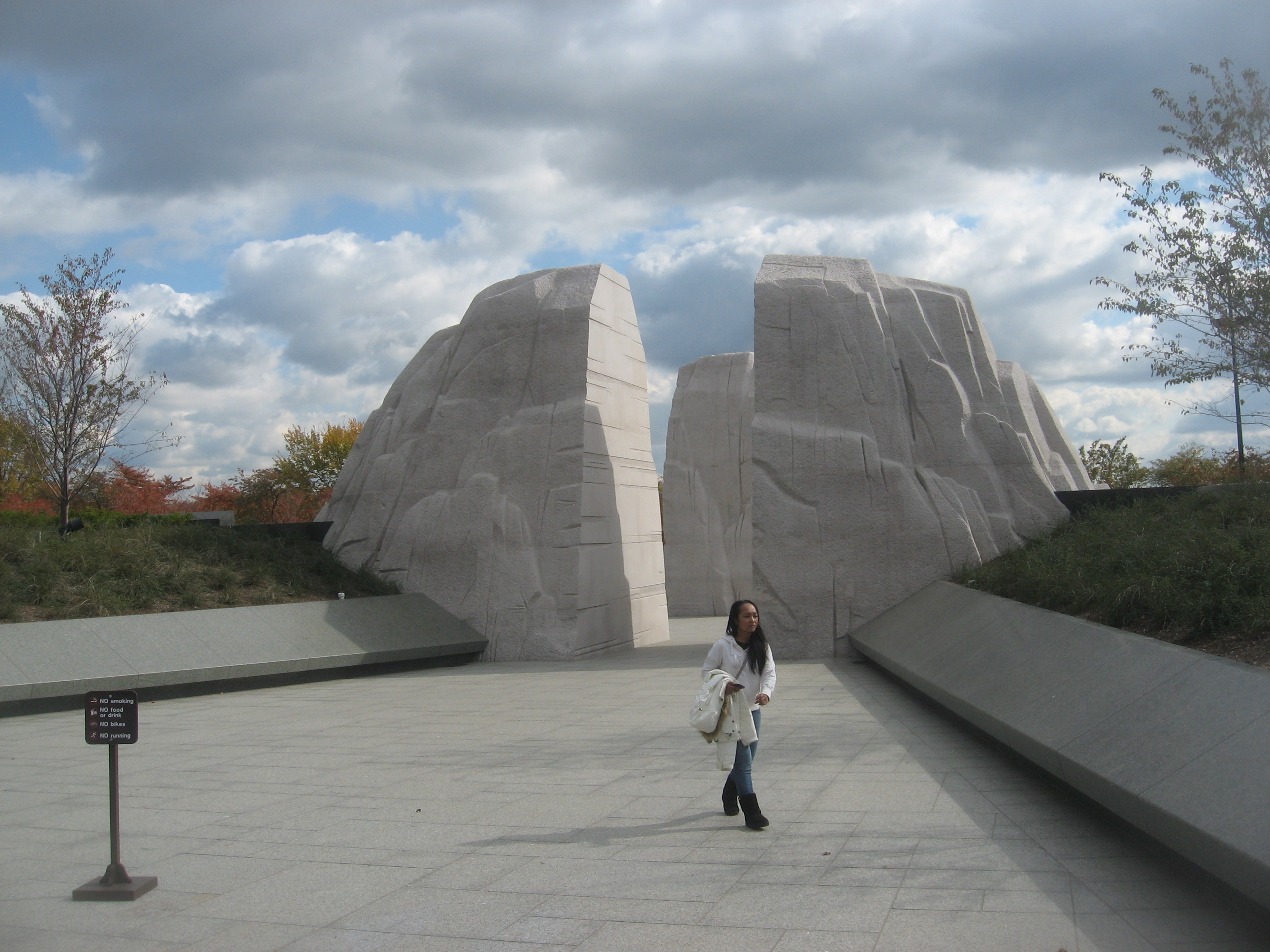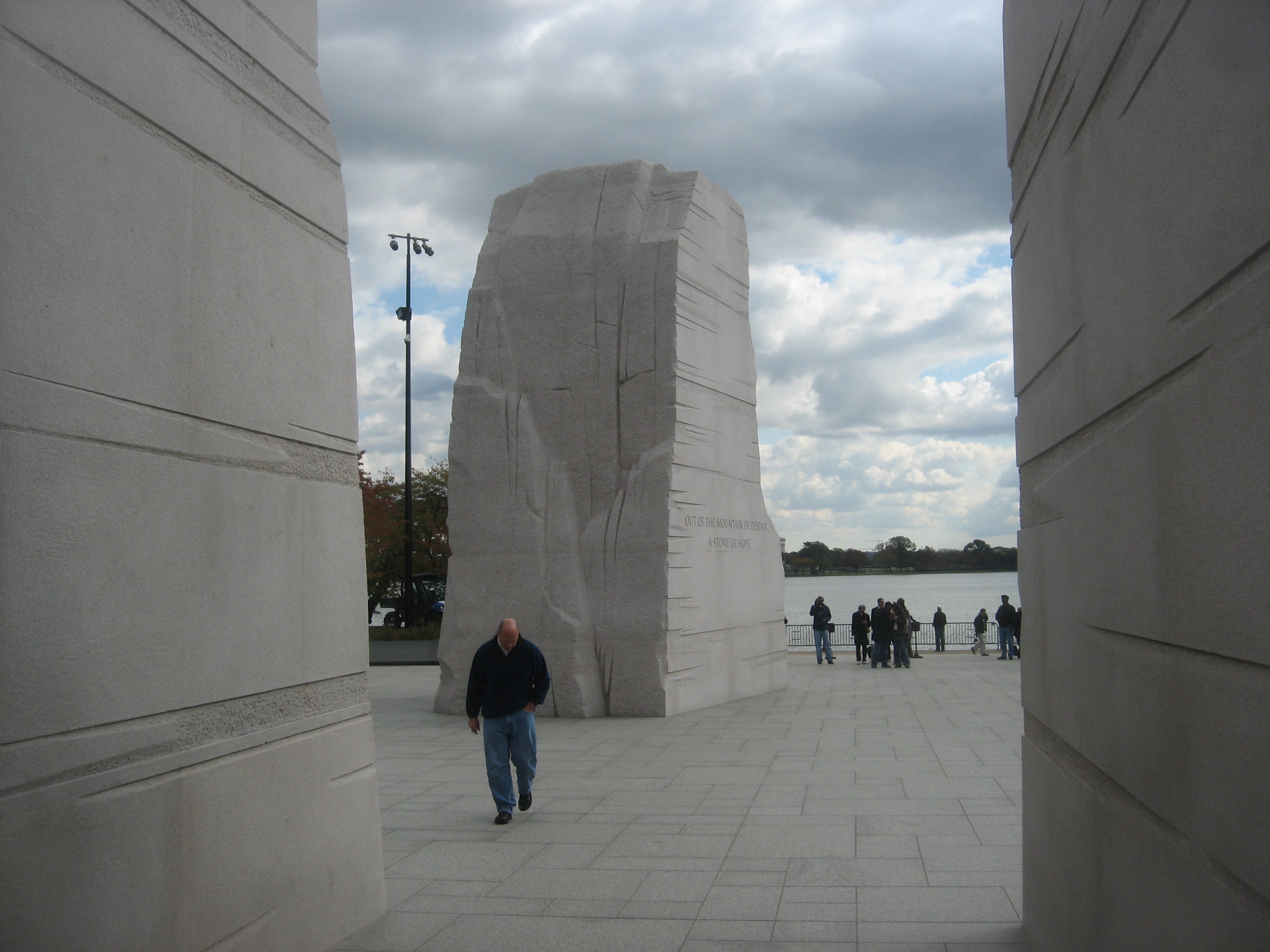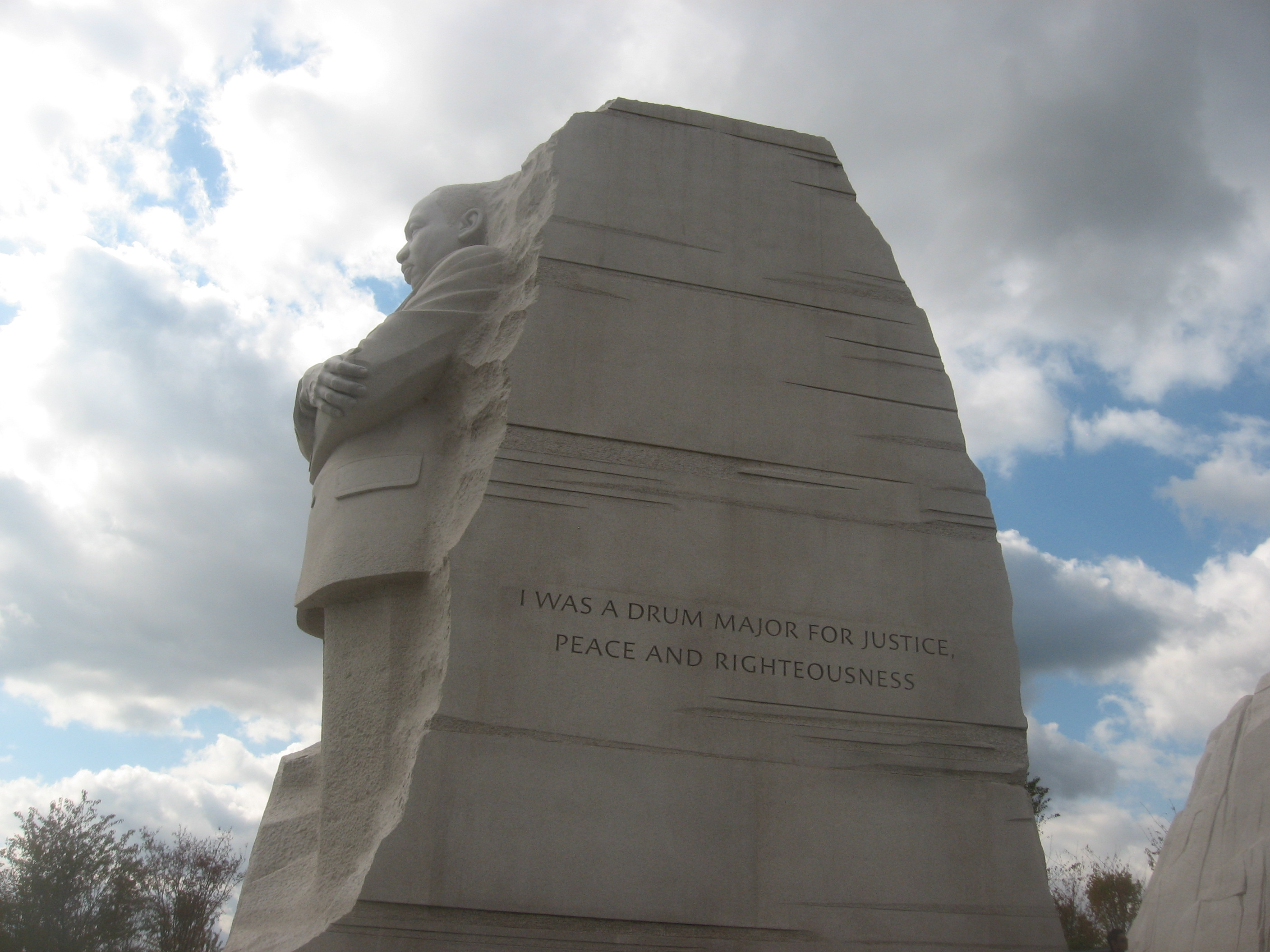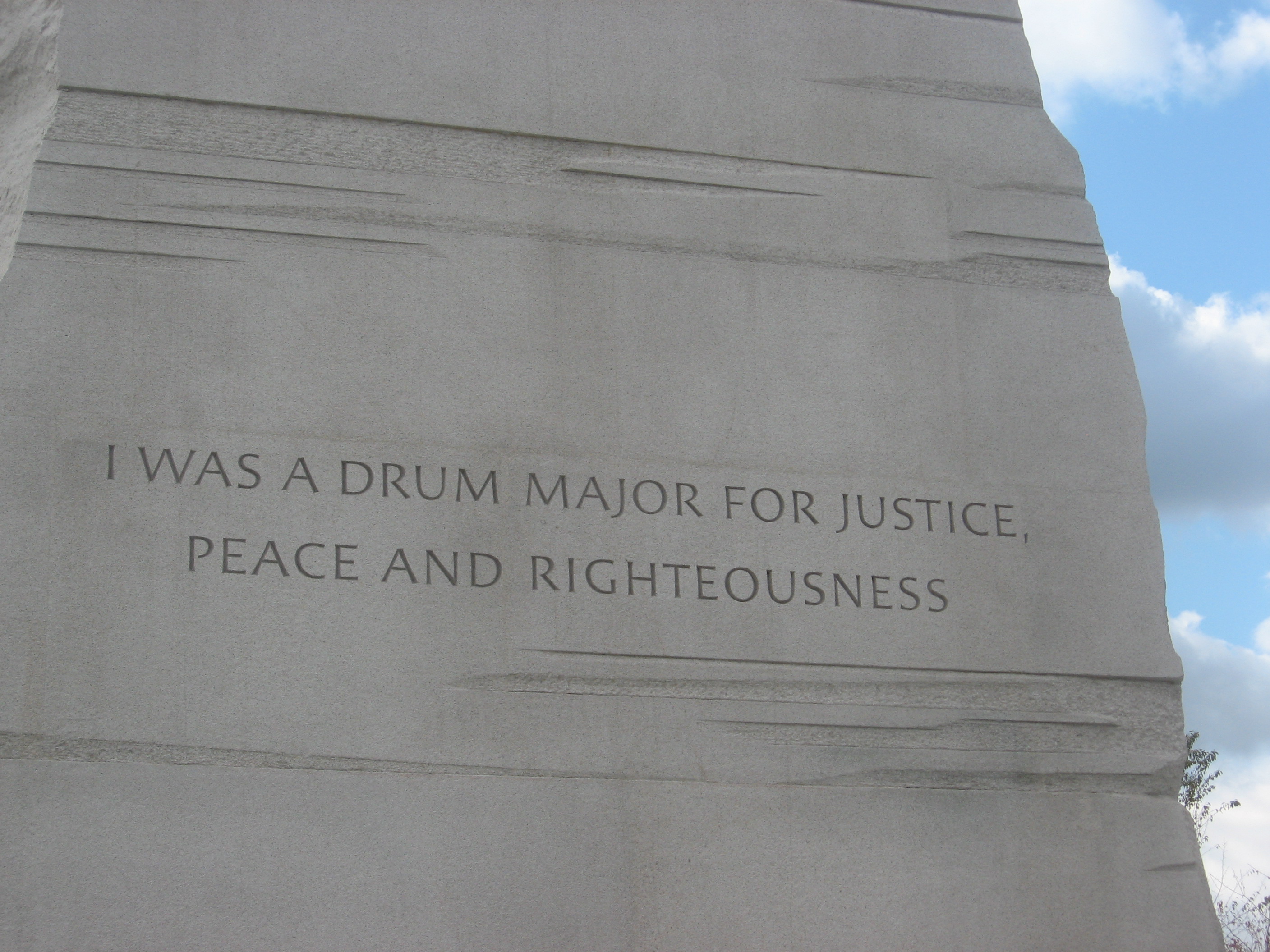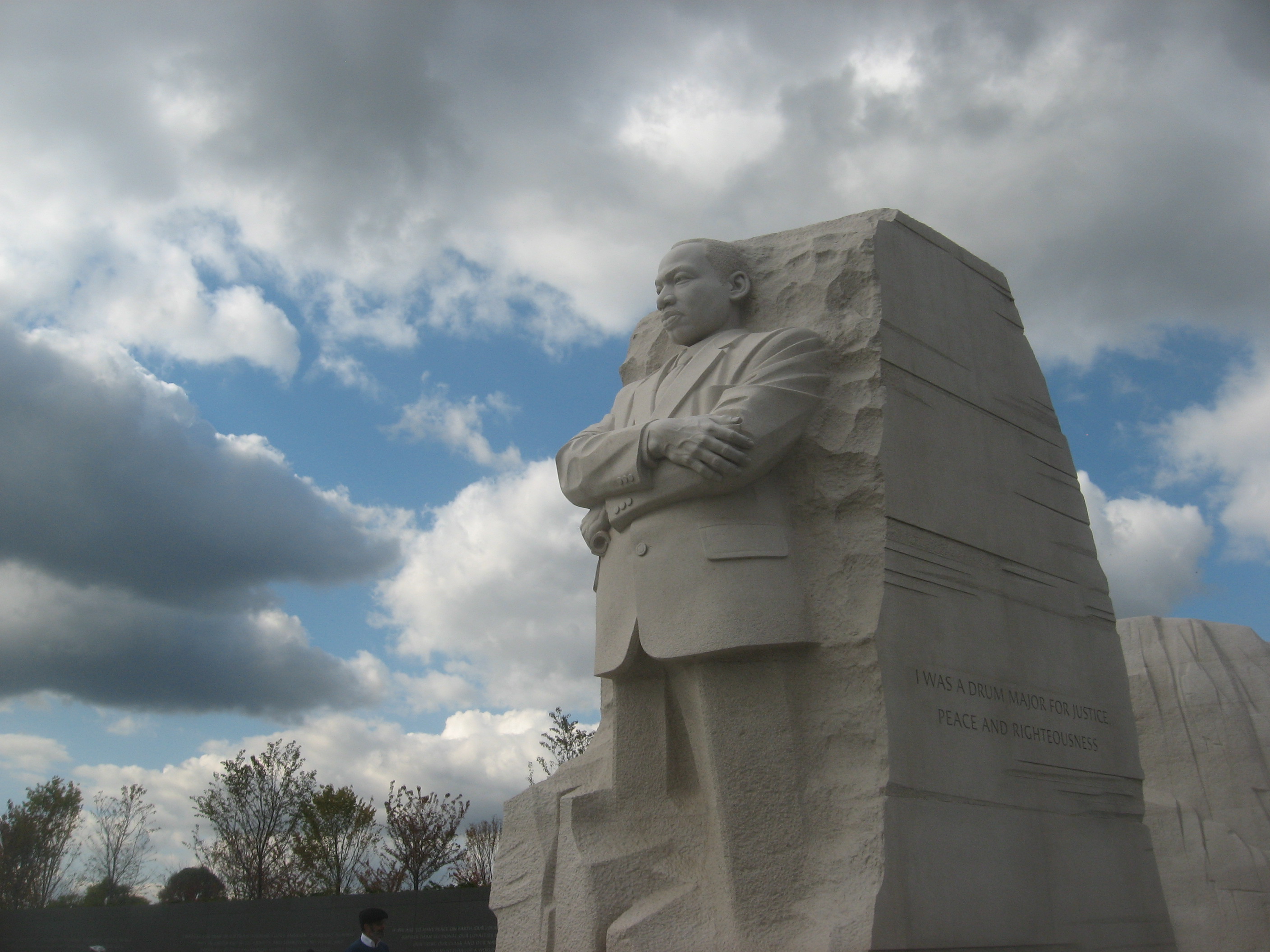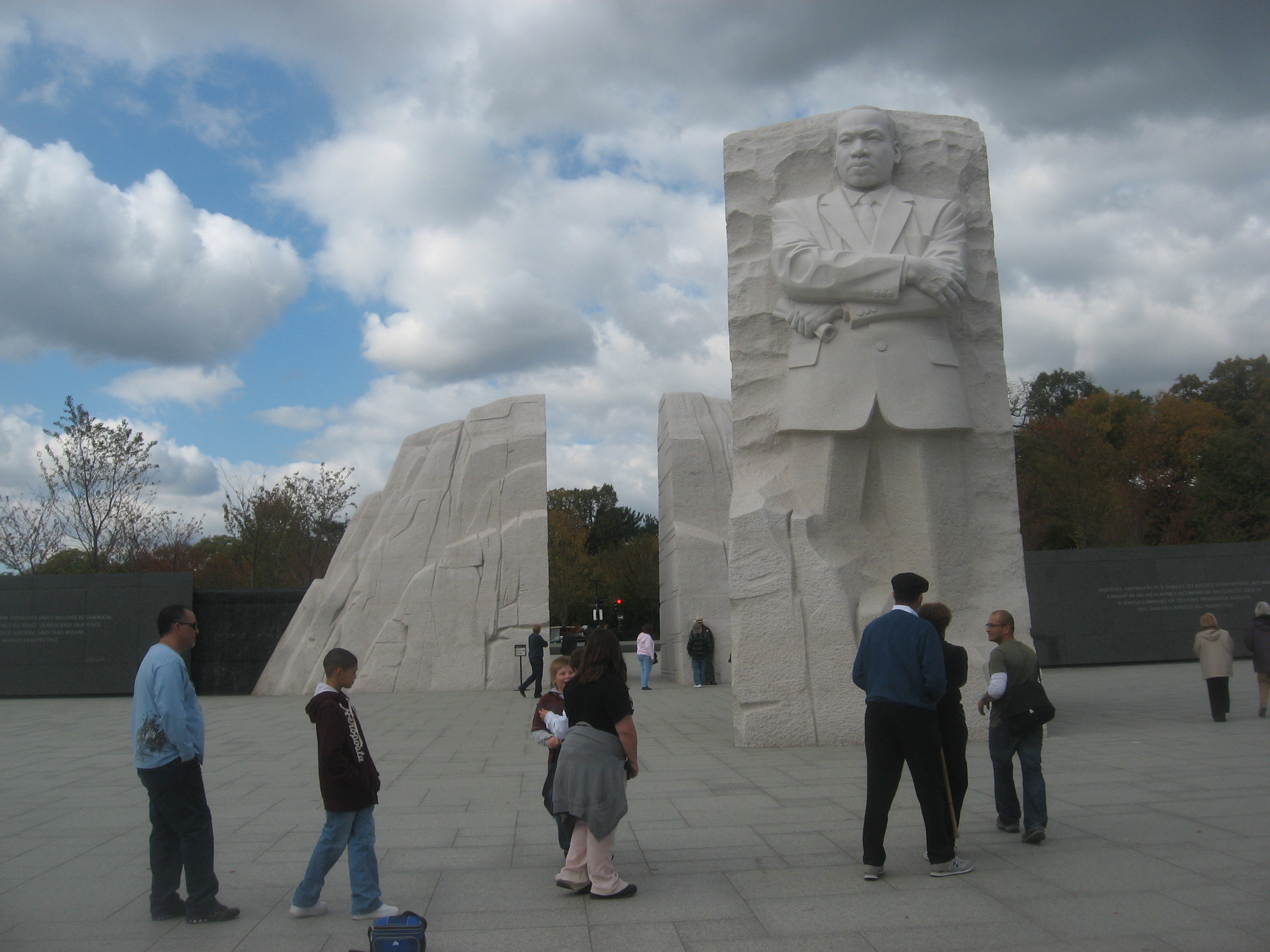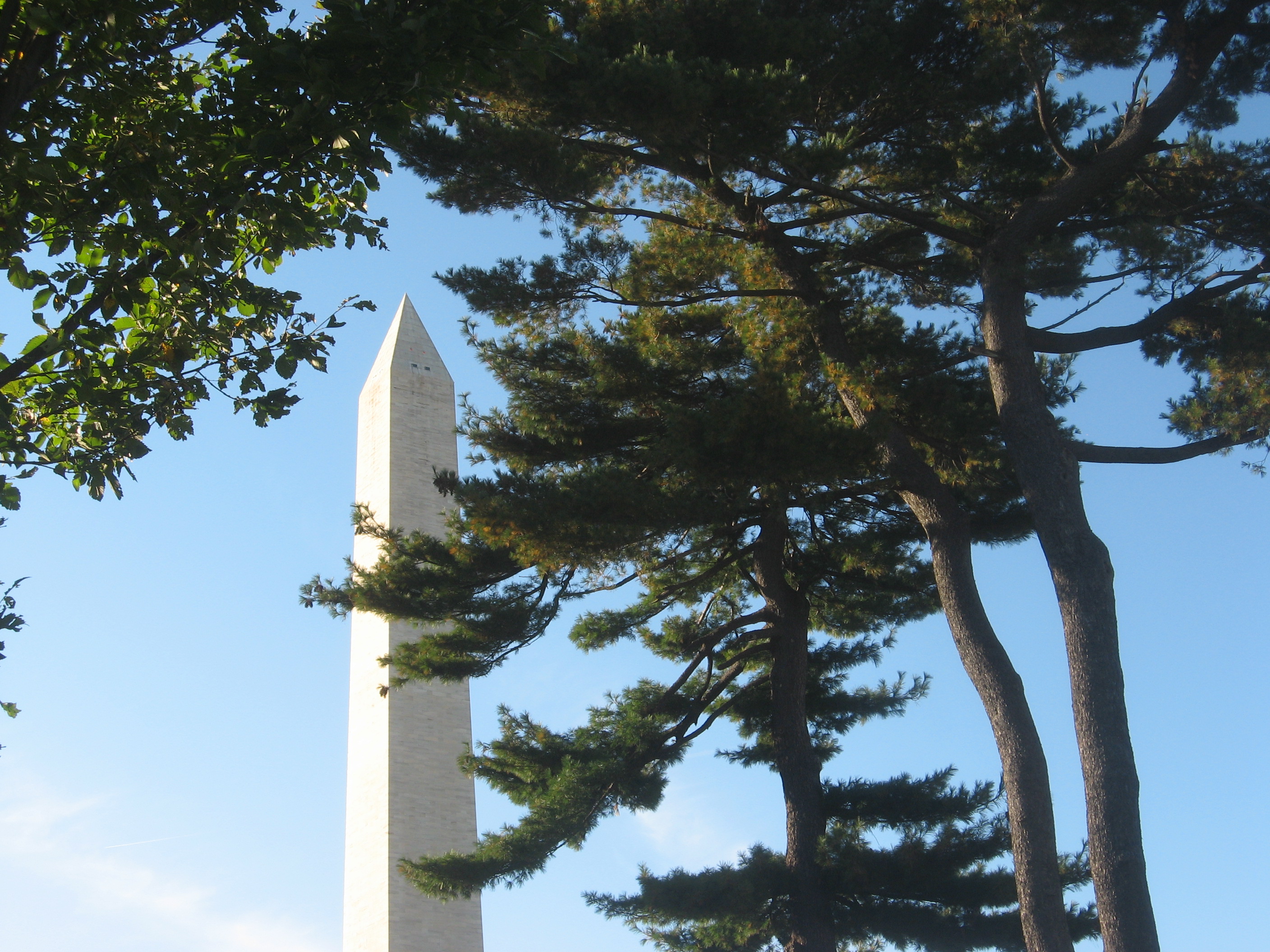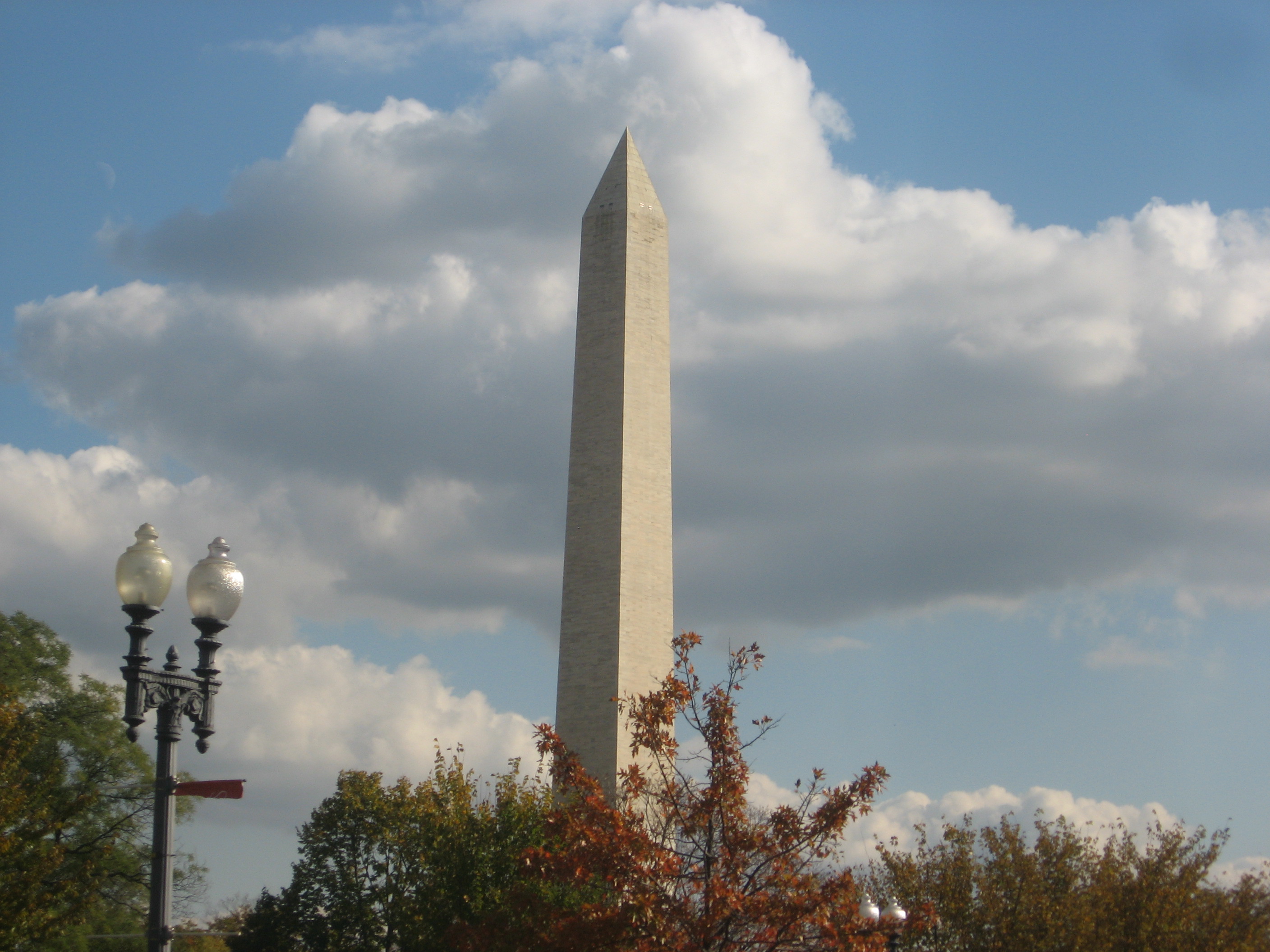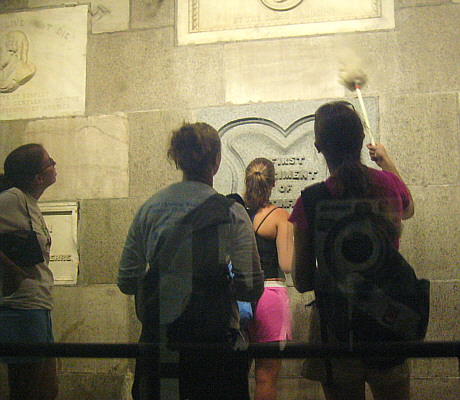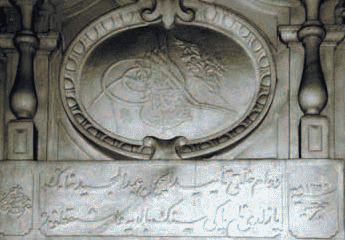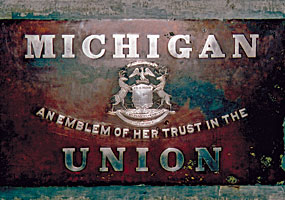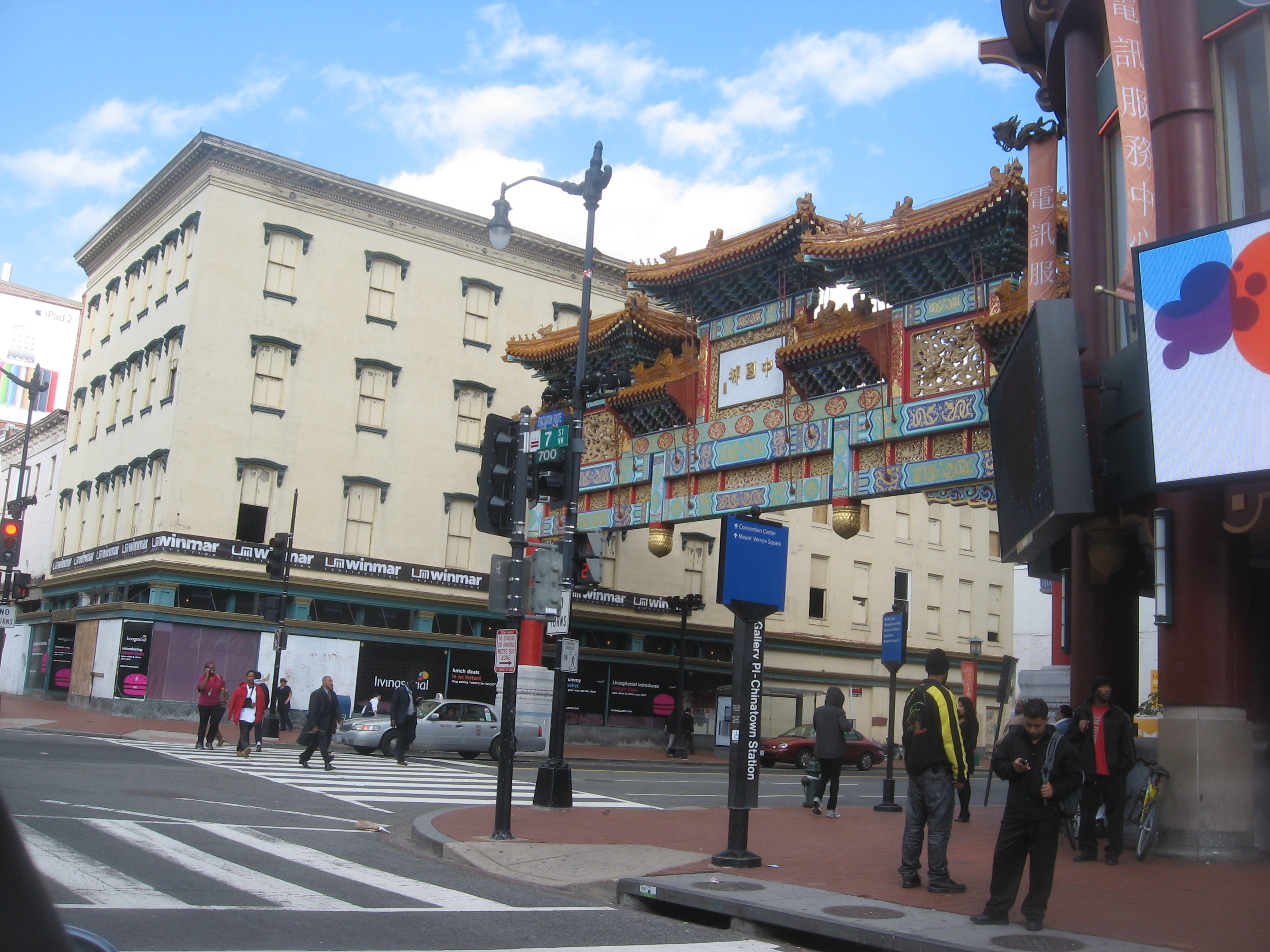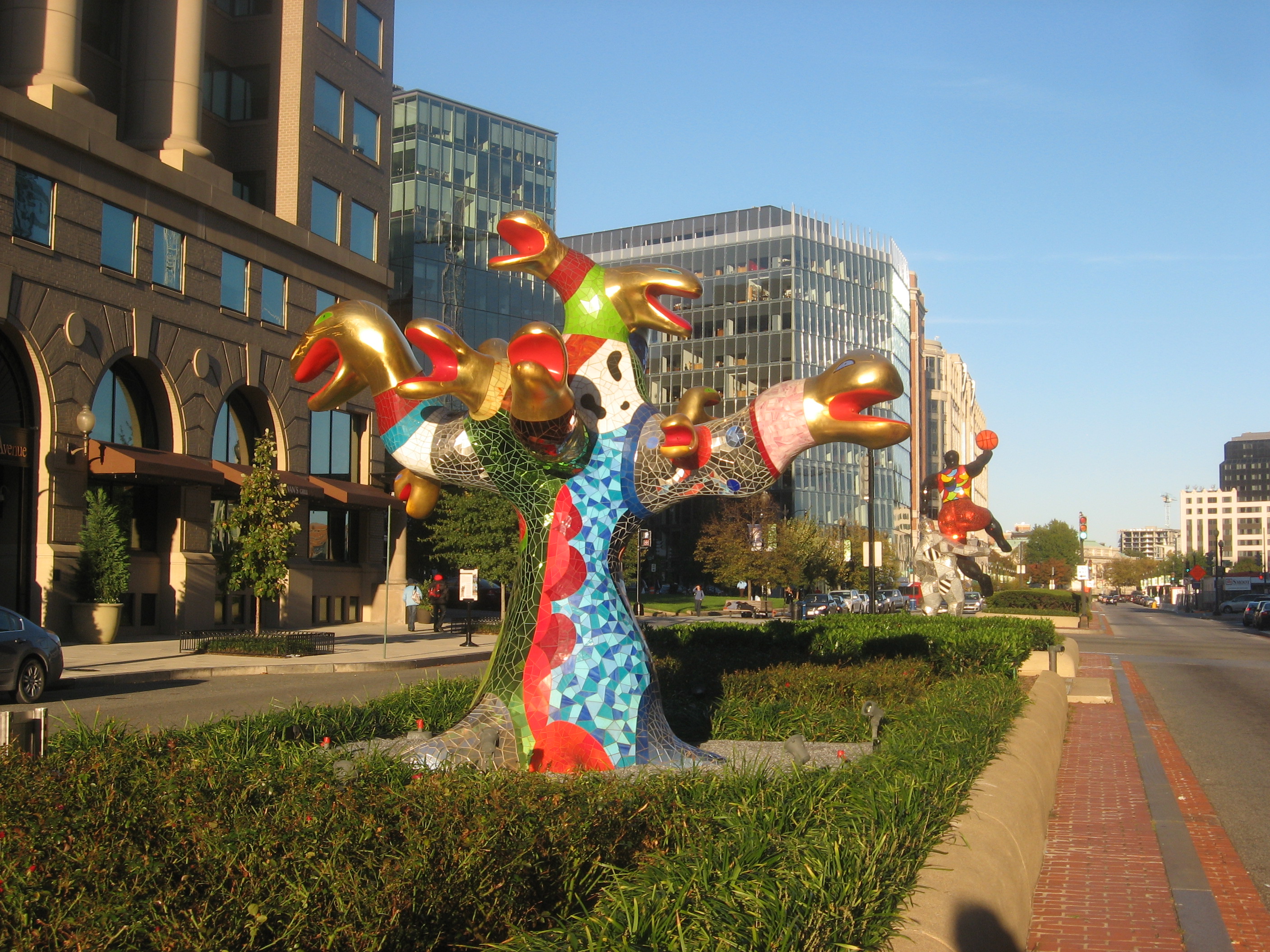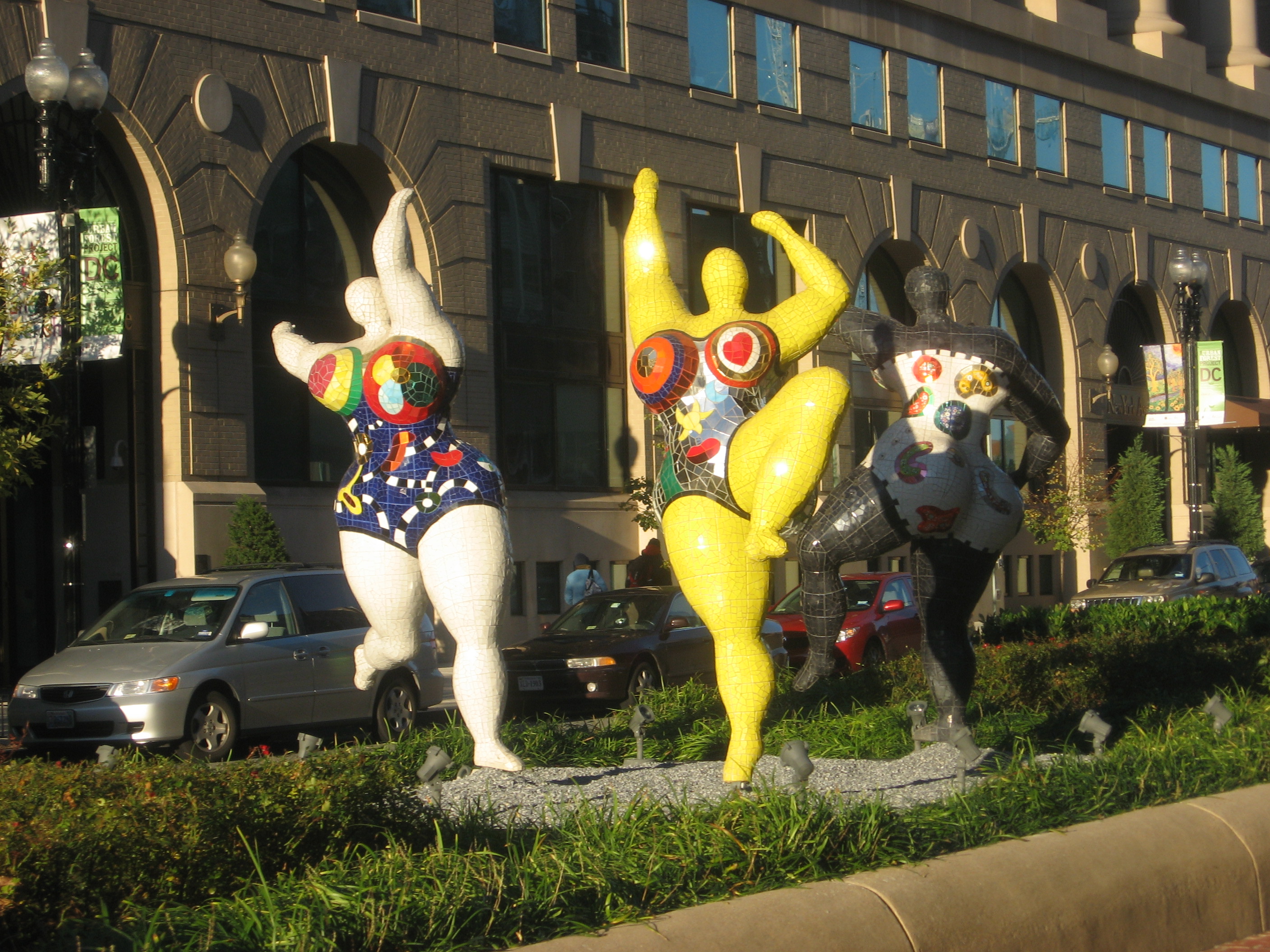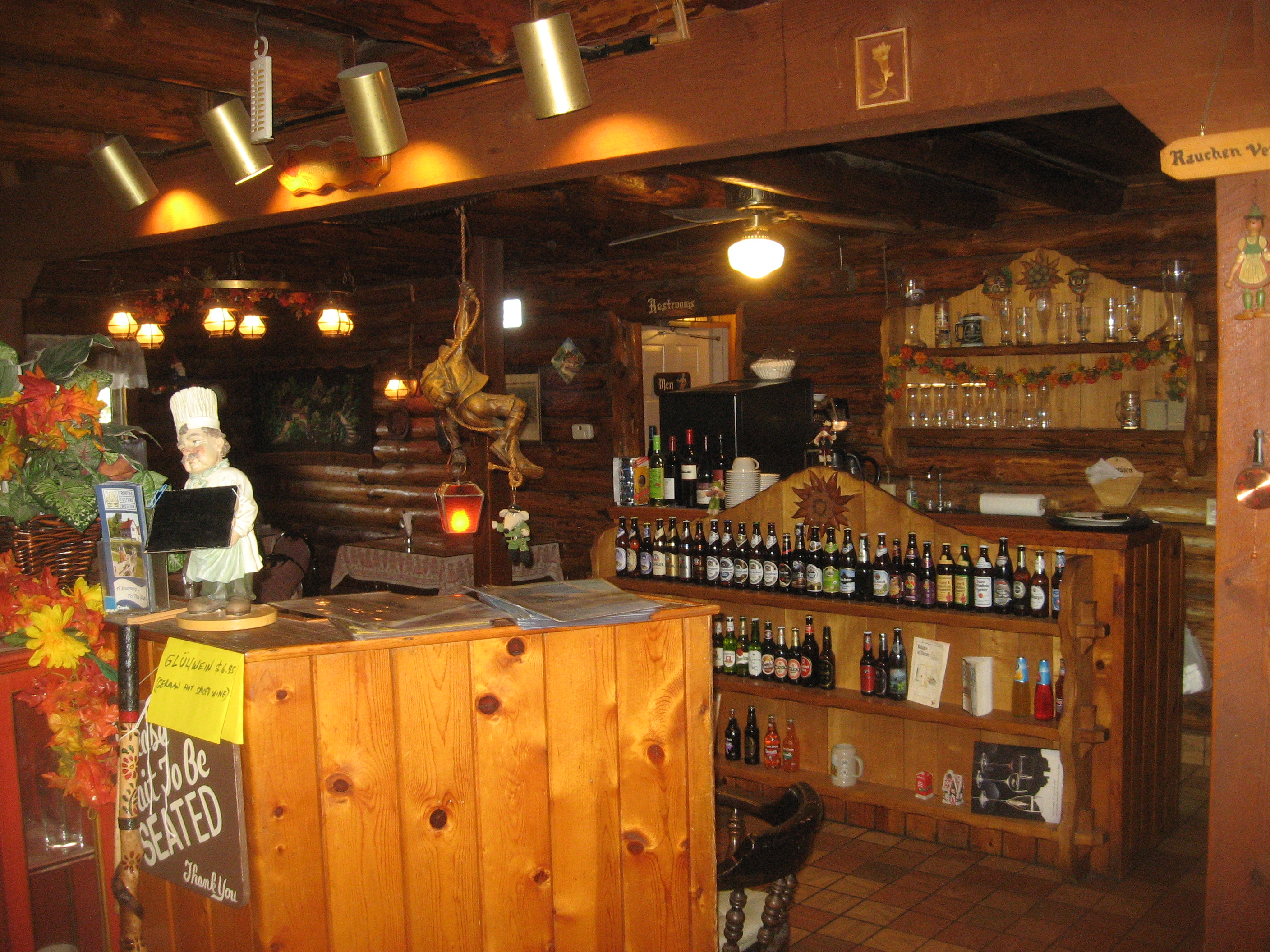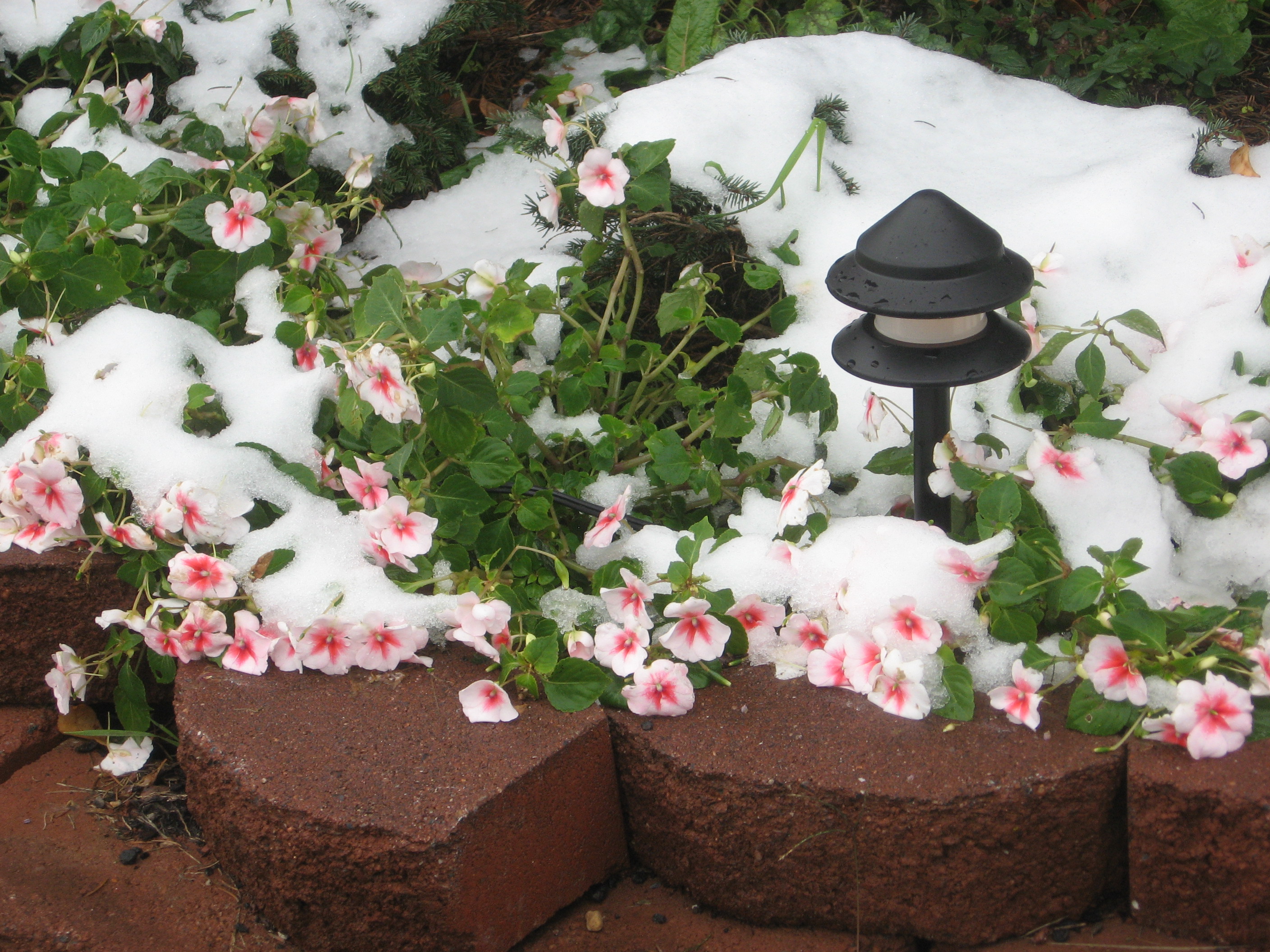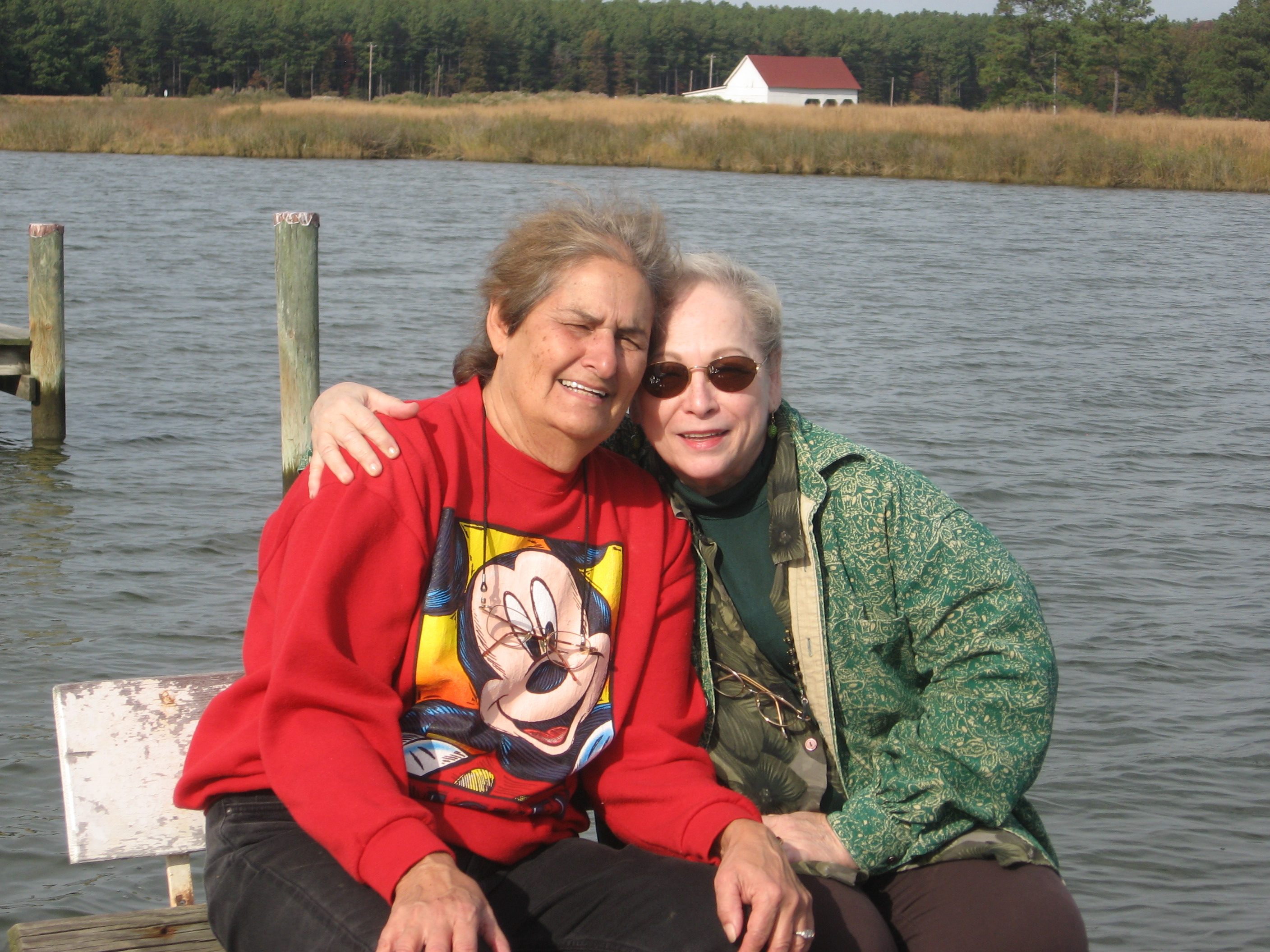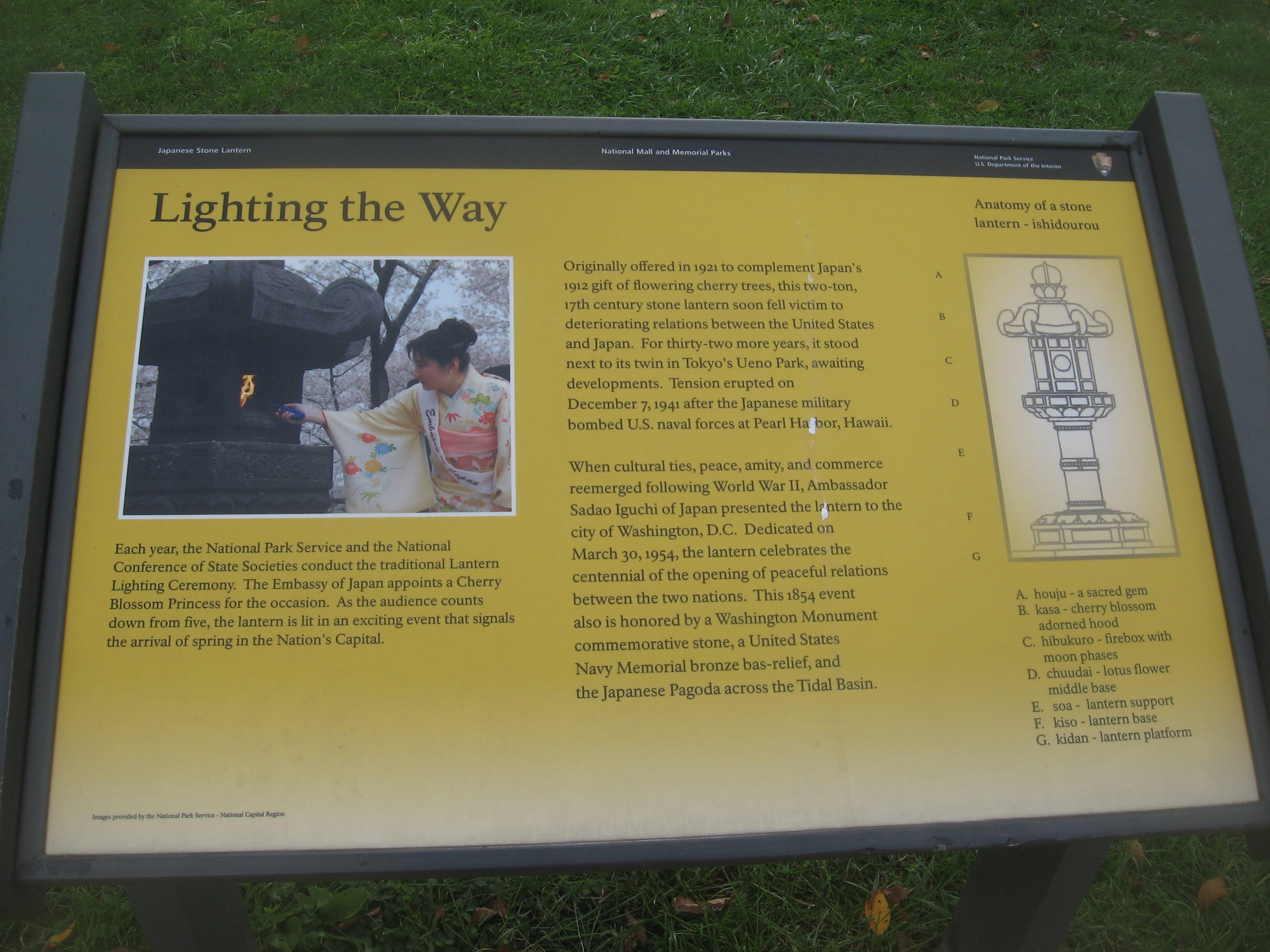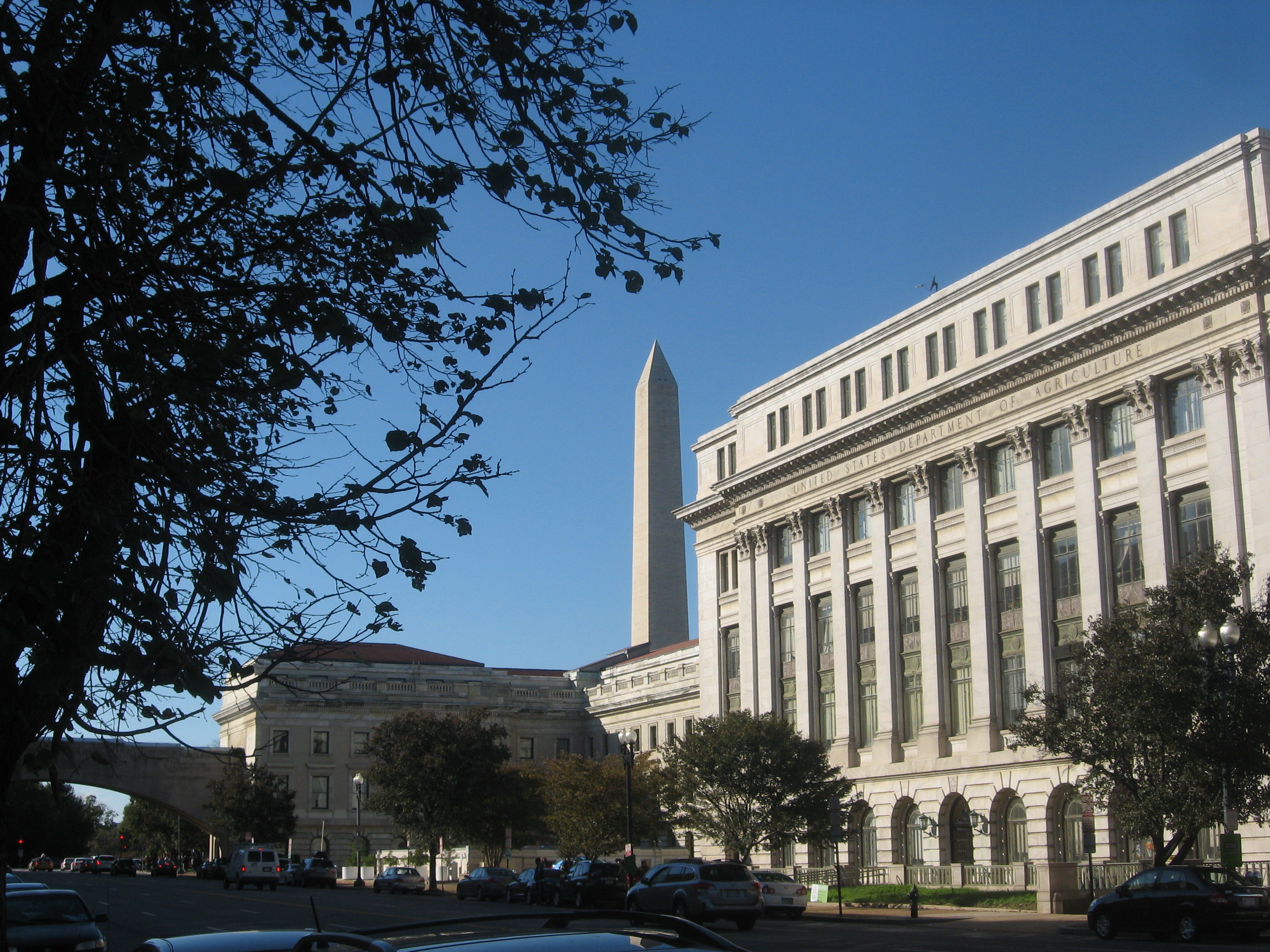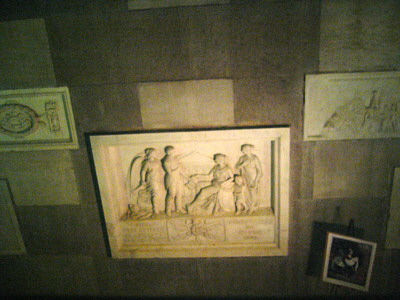Photo Gallery - Washington, DC
Schera and I drove 1,330 miles in order to spend four days in Washington, DC, Oct. 29-Nov. 2, 2011. While she operated a booth at the annual convention of the American Public Health Association (APHA), I was able to visit a dozen sites of peace monument and museum interest. These are listed alphabetically below.
Right click any image to enlarge.
Lincoln Memorial
I've been returning here ever since 1950. Still inspiring. Still crowded with tourists. Absolutely unchanged. Except the tourists now come in every hue and nationality. /// Lincoln's second inaugural address is carved into one wall. It ends, "...to do all which may achieve and cherish a just and lasting peace among ourselves and with all nations." /// I stood again where MLK stood when I saw him deliver his "I have a dream" speech in 1963 (just a few days before I left for Rwanda). An inscription is carved into the step. Few tourists seemed to take notice. /// King's view of the Washington Monument is temporarily spoiled while workers drive 2,000 pilings to bedrock in order give the reflecting pool a leak-proof floor (using some of the "recovery" money which Republicans say was ill-spent).The memorial still has a little bookshop. I bought "Monument Wars: Washington, DC, the National Mall, and the transformation of the memorial landscape" by Kirk Savage (2005, pp. 390). It uses phrases like "victim monument" and "therapeutic memorial" for the Vietnam and Holocaust memorials but doesn't, so far as I can find, ever use the phrase "peace monument," despite there being several examples on the Mall.
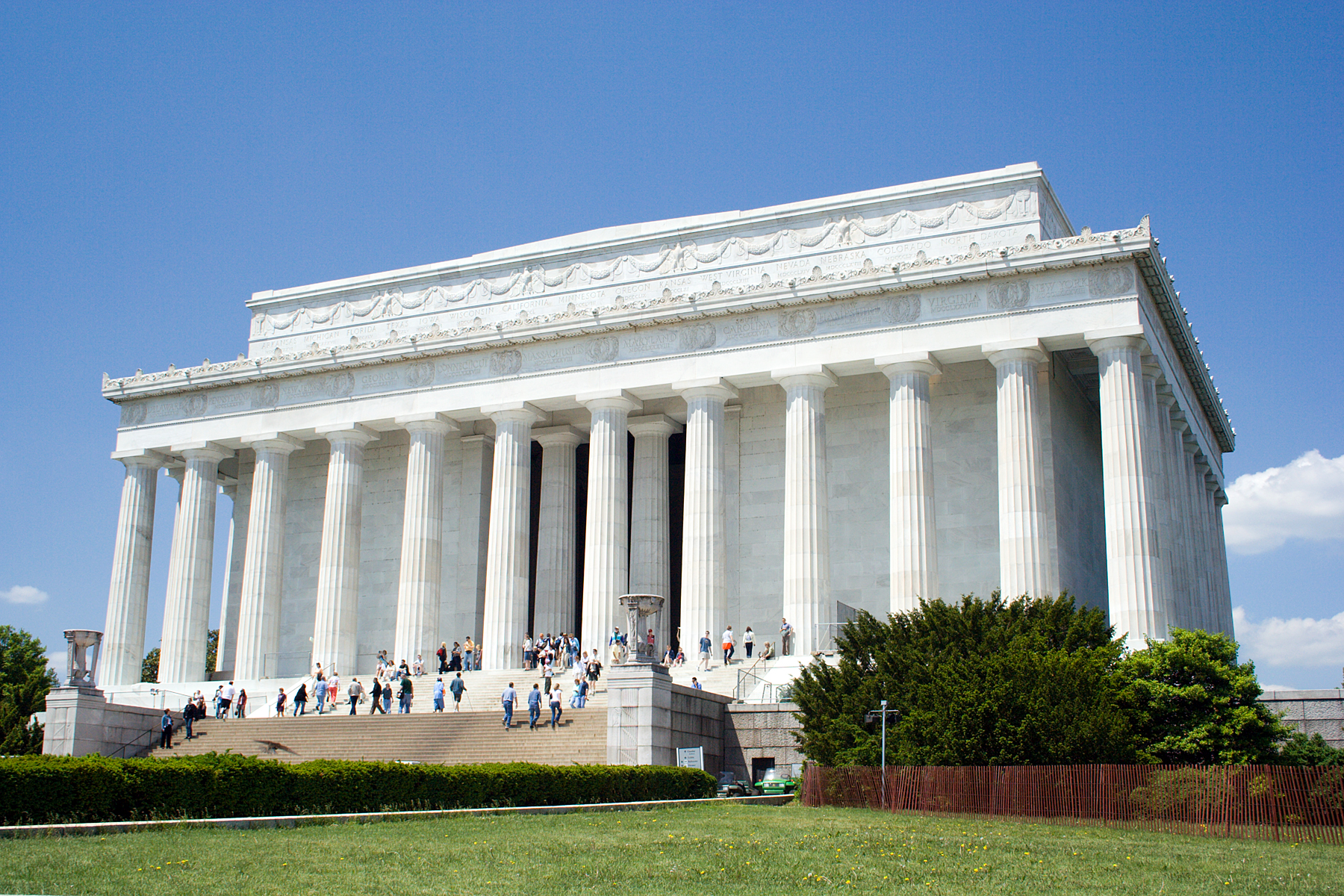
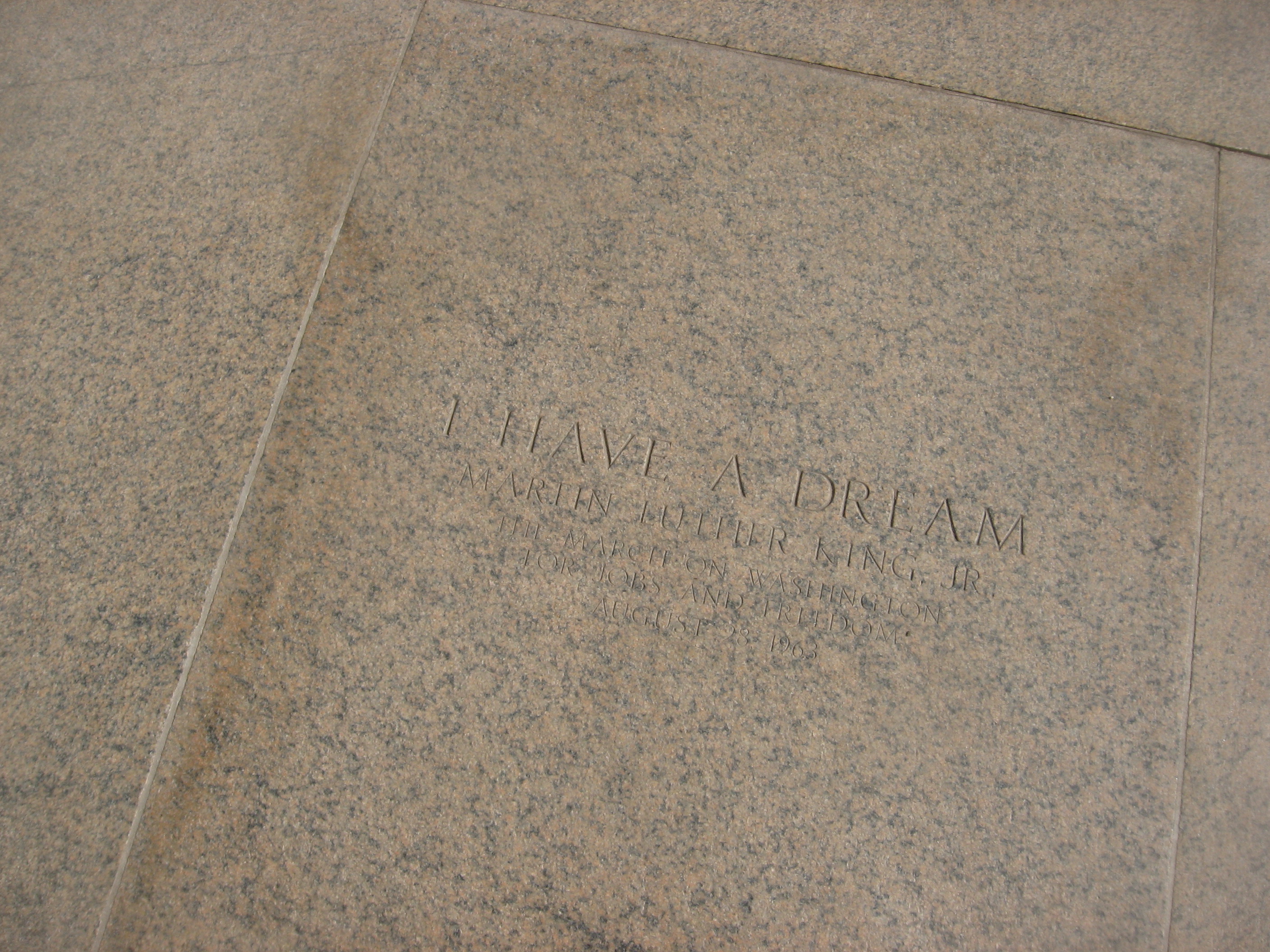
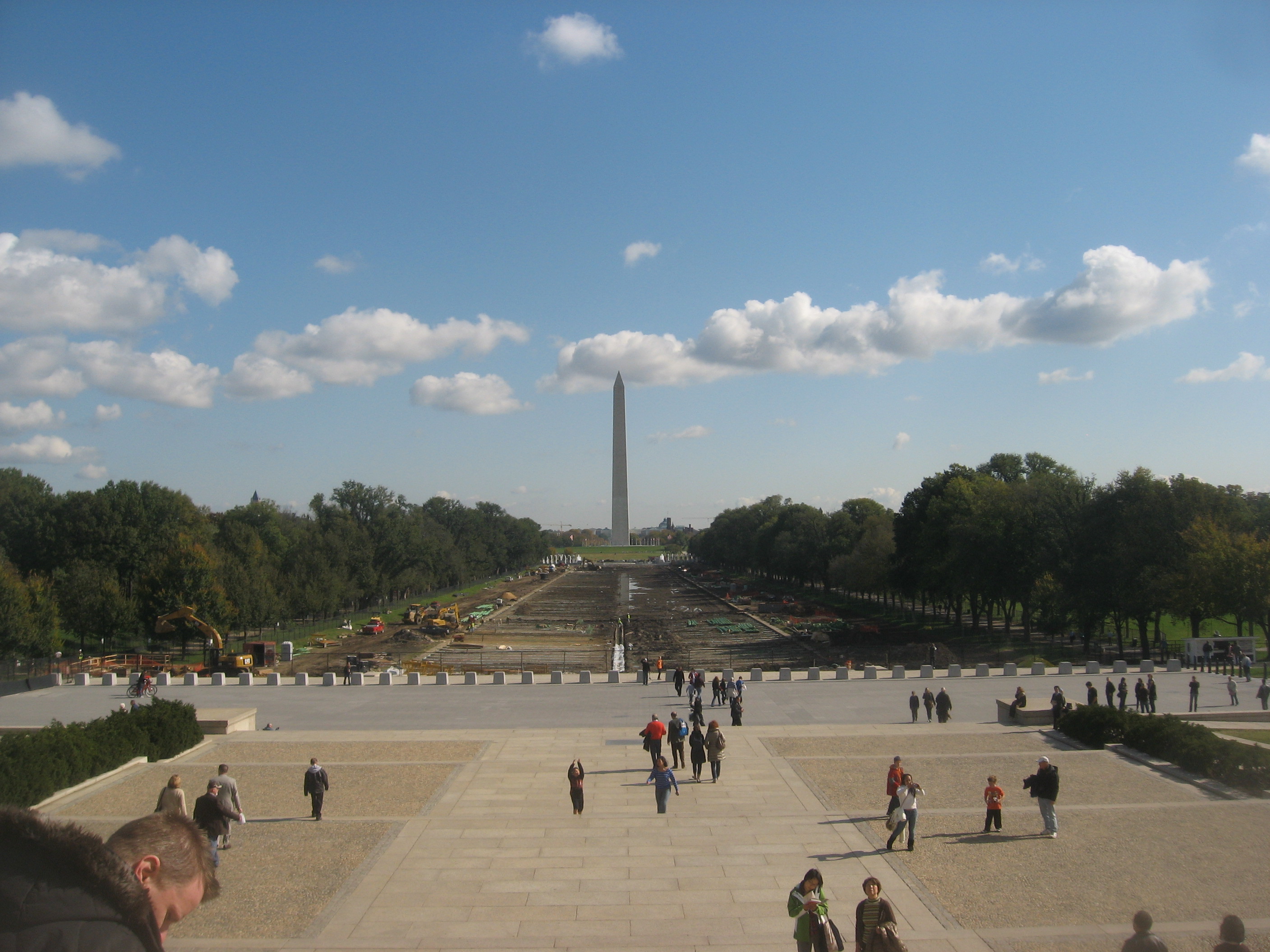
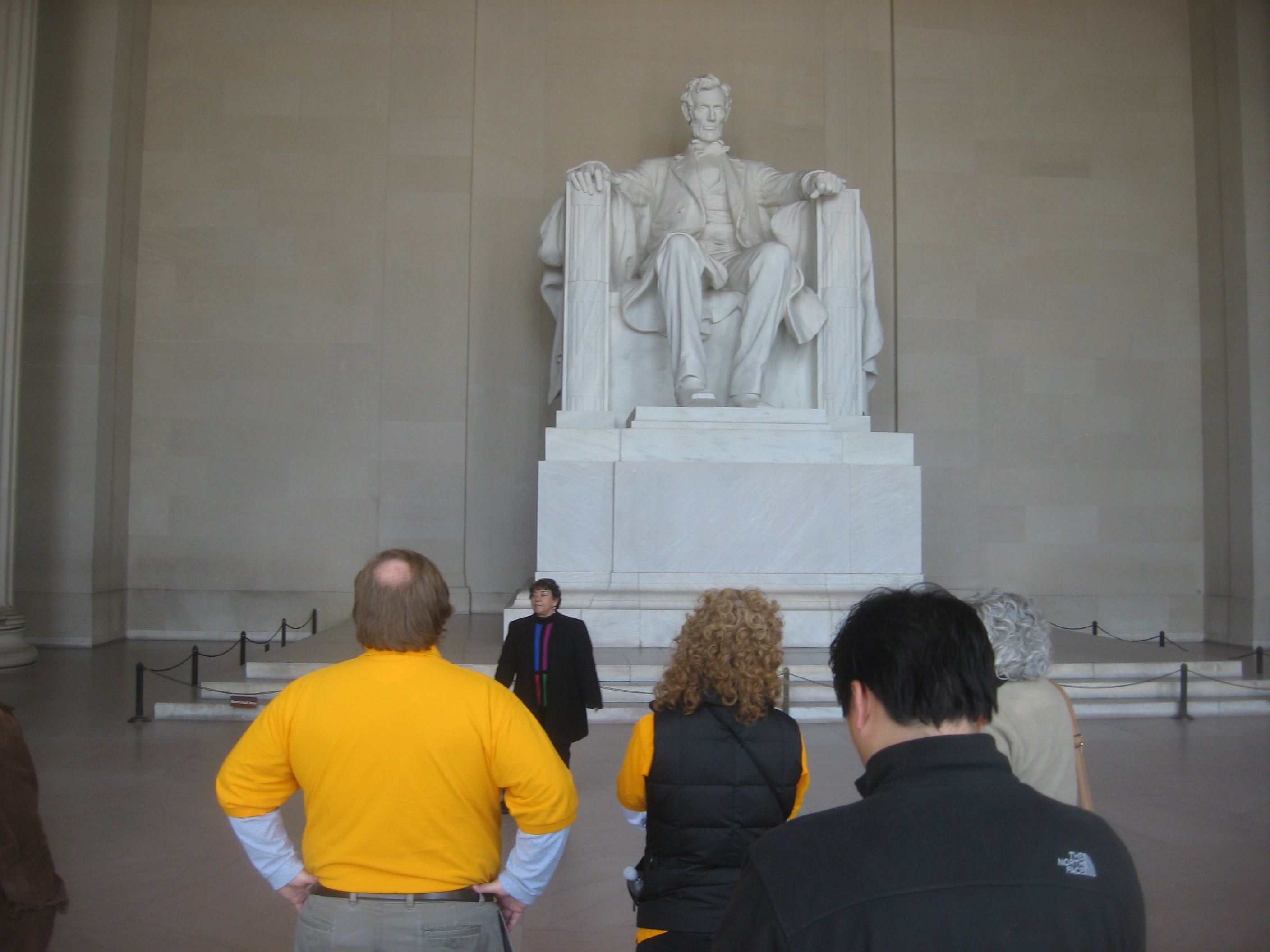
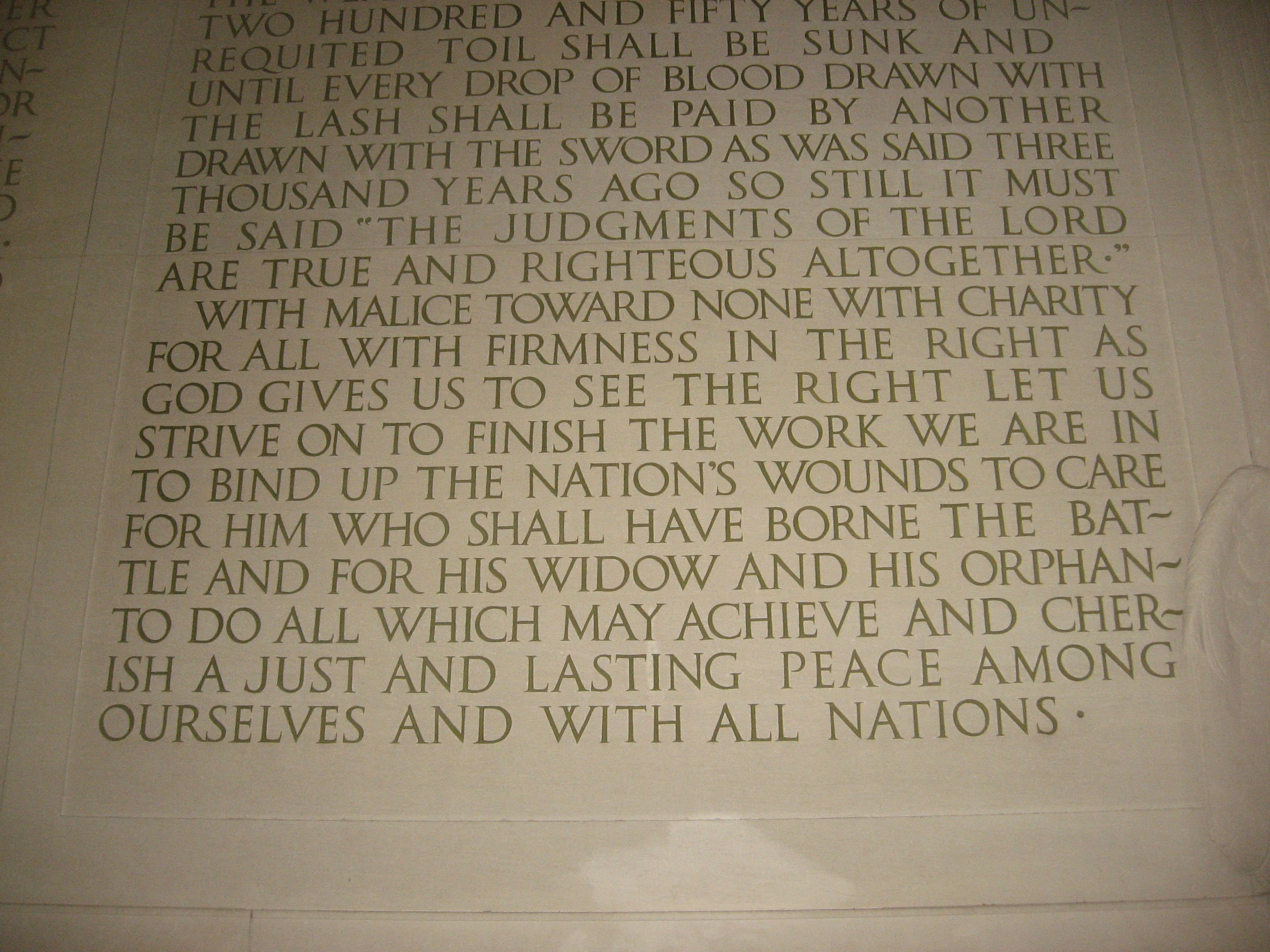
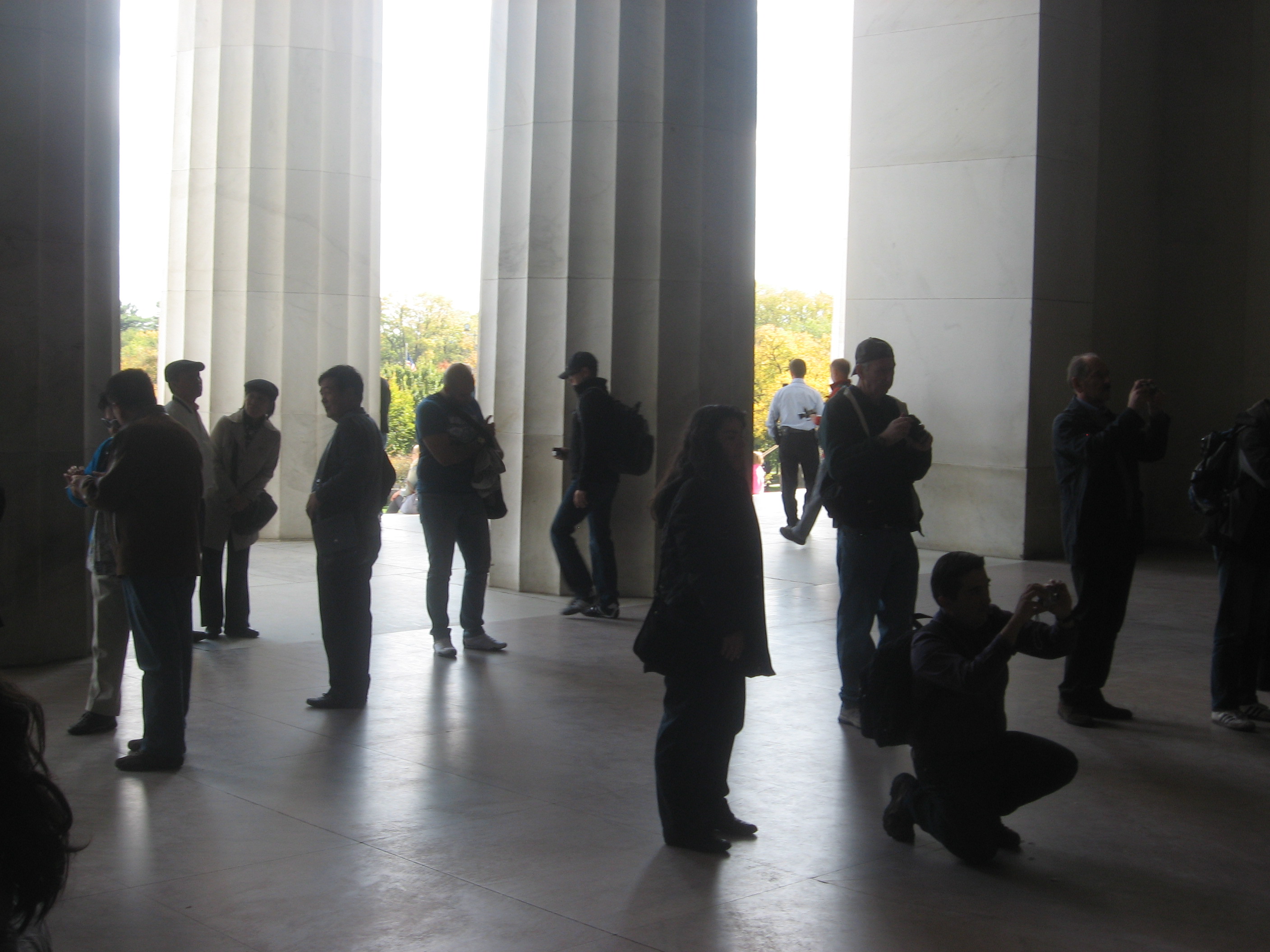



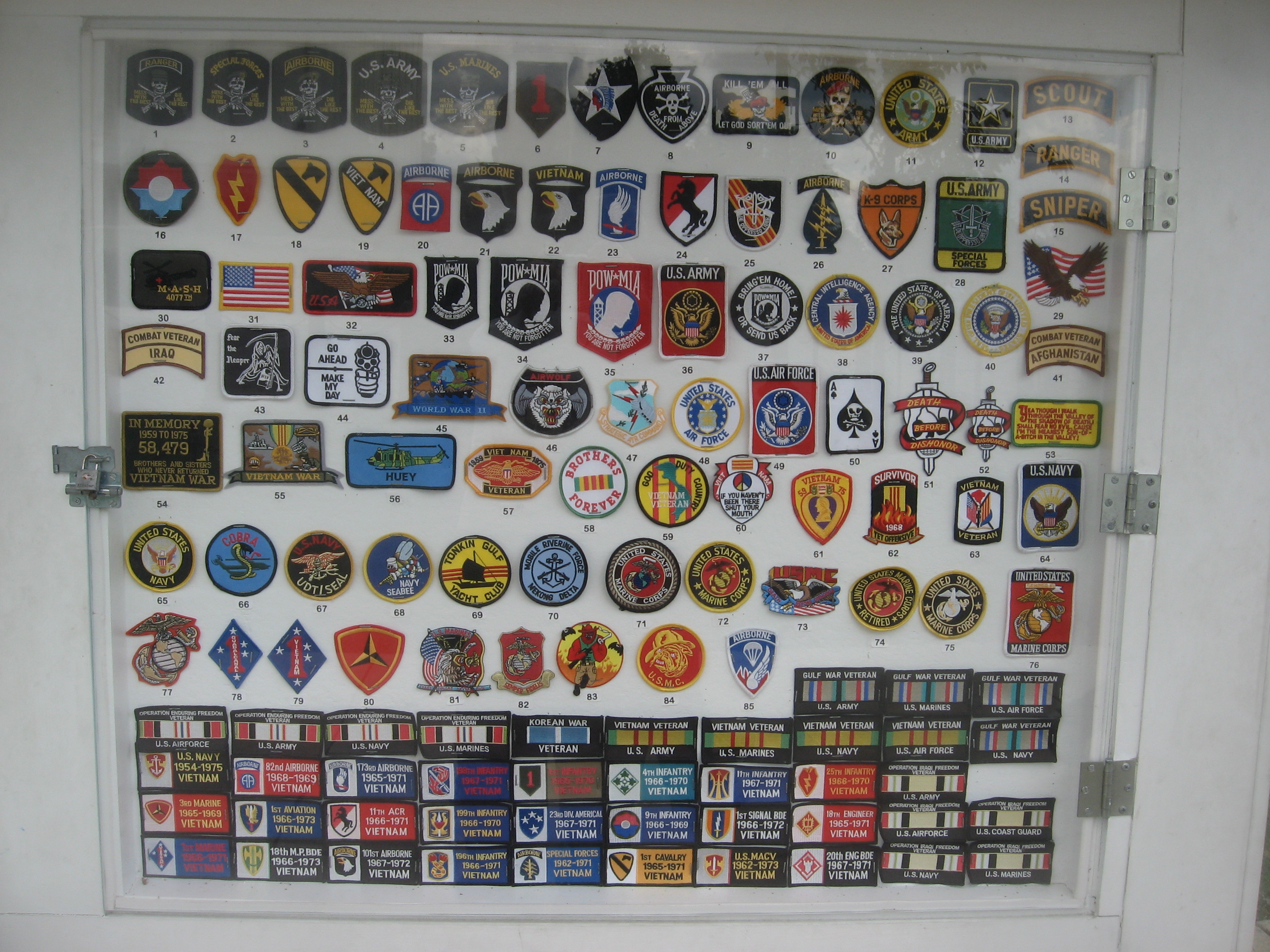
I made images 2-6 and 10. The two murals are "Emancipation of a Race" & "Unification" by Jules Guerin [1866-1946], respectively above the texts of the Gettysburg address & the second inaugural address. /// The last image is one of several displays of US military insignia being sold in front (and slightly to one side) of the memorial. A ranger told me that that the National Park Service had given in to political pressure to allow this private "concession."
|
National World War II Memorial Has straddled the Mall since 2004 (59 years after the war), and I'd seen it from afar but not up close. /// When I walked across it last week, a large crowd of Japanese Americans was assembled for a brief ceremony (performed by the Army's ceremonial unit based at Fort Myer, Virginia). I learned from Mr. Mas Takano of Alameda, California, that the crowd was composed of veterans from the 100th Batallion, 442nd RCT, and the Military Intellience Service (MIS), their families, and friends, who were in Washington to attend the awarding of the Congressional Gold Medal Award to the veterans who served in WW-II. According to Mr. Takano, the 100th/442 RCT fought throughout Europe - is/was the most decorated unit in the history of the US, and was awarded the most Presidential citations....an enviable record. The MIS were trained and secretly deployed throughout the Pacific as interpreters, translators - General MacArthur predicted that they shortened the war in the Pacific 'by one or two years...never has any army had so much knowledge of their enemy before each battle, as we did, because of the MIS.'" Families were deported from their homes and interned in remote camps. Mr. Takano introduced me to Ikuko (Cookie) Takashita, his sister and widow of one of the WW-II soldiers. Mr. Takano and Mrs. Takashita were interned during the war at the Amache internment camp, the lonely ruins of which Schera and I visited just outside of Granada, Colorado, in 2009. (See last entry in http://peace.maripo.com/p_japs.htm.) She was there from age 12 to age 16. Meeting Mr. Takano and Mrs. Takashita put names and faces on the ghosts we had imagined in 2009, and I was very moved.
Monuments continue to evolve. I read a news account just yesterday about a congressman who wants to add the text of FDR's D-Day prayer to this monument.
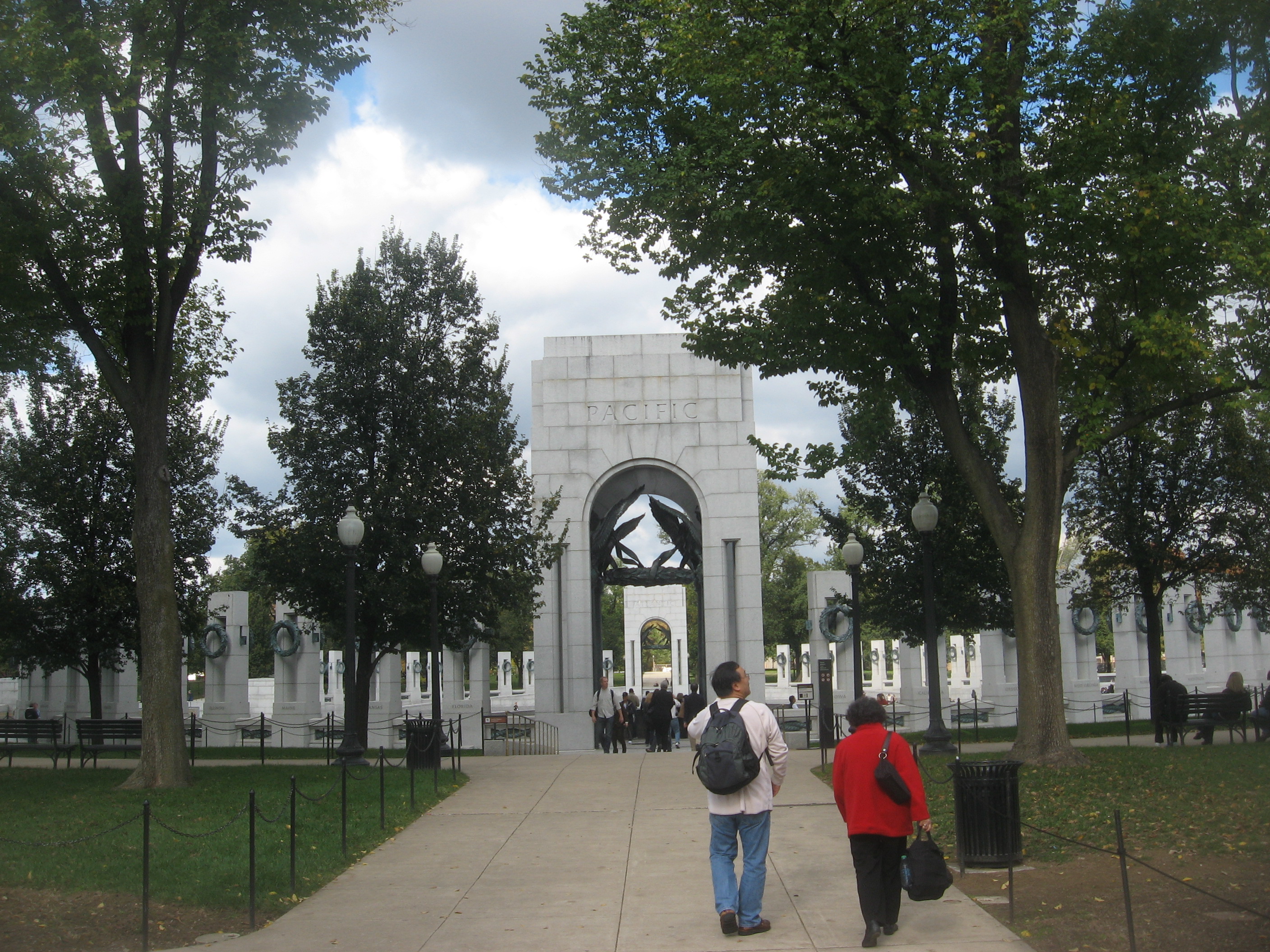
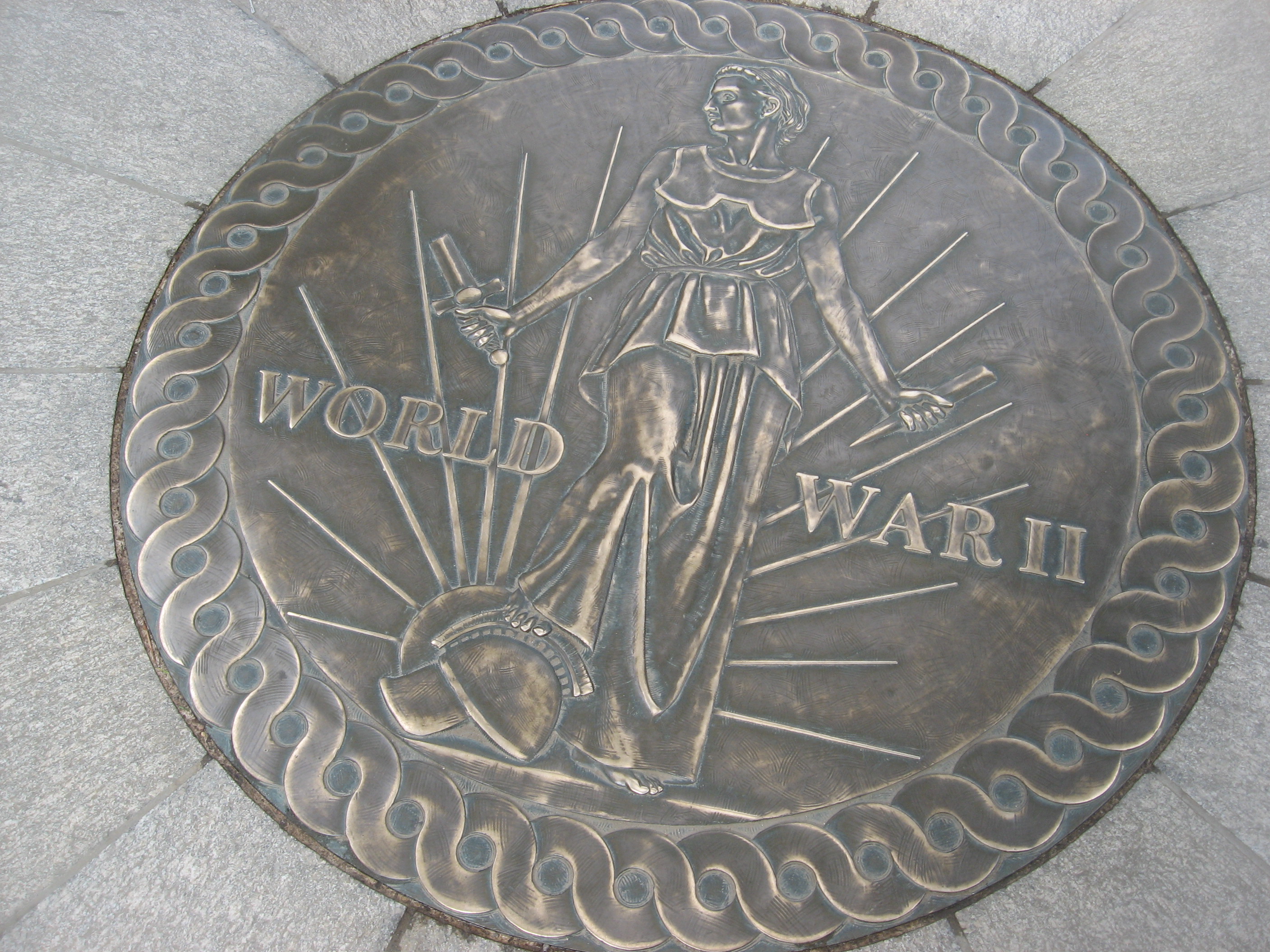
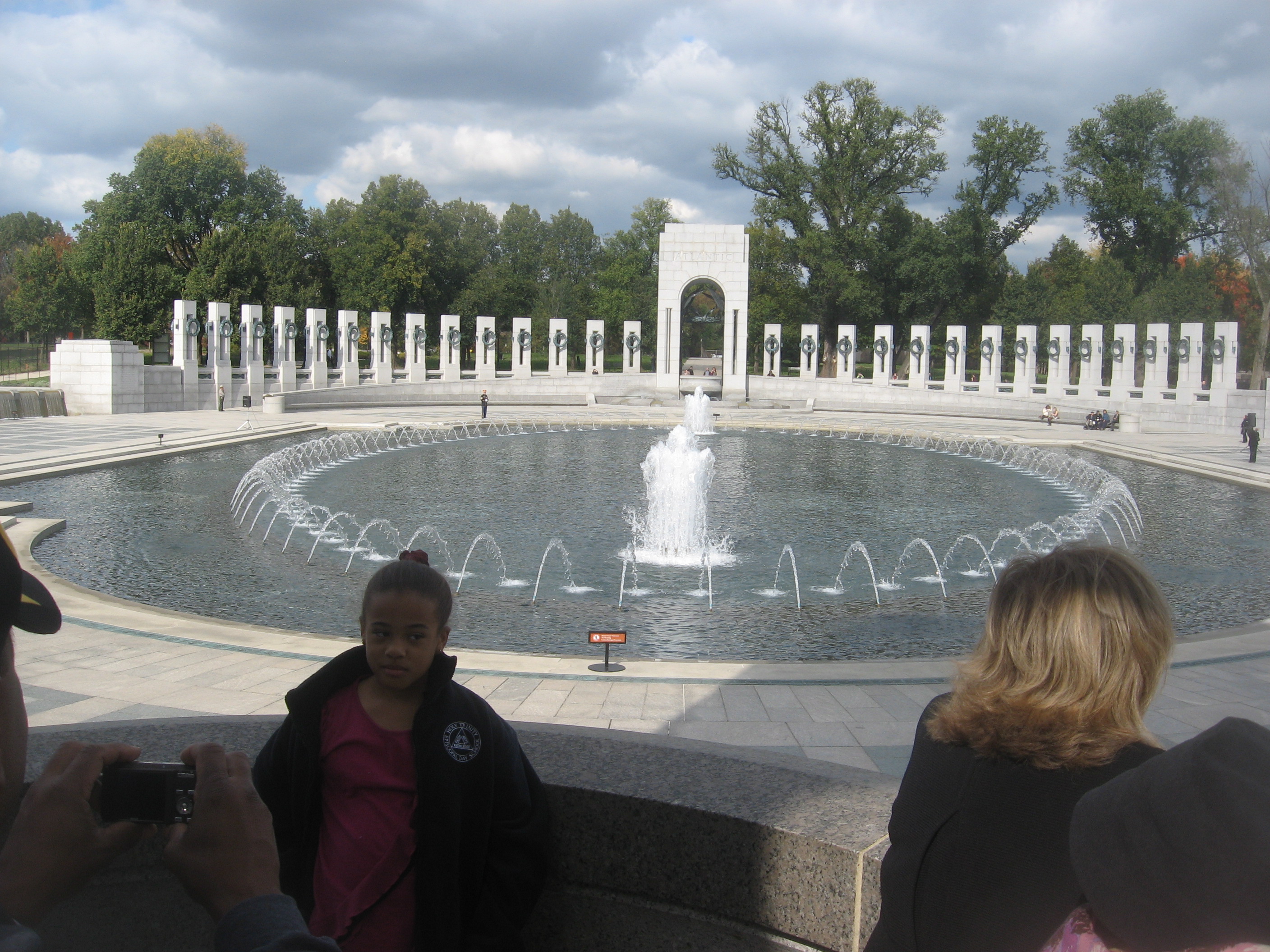
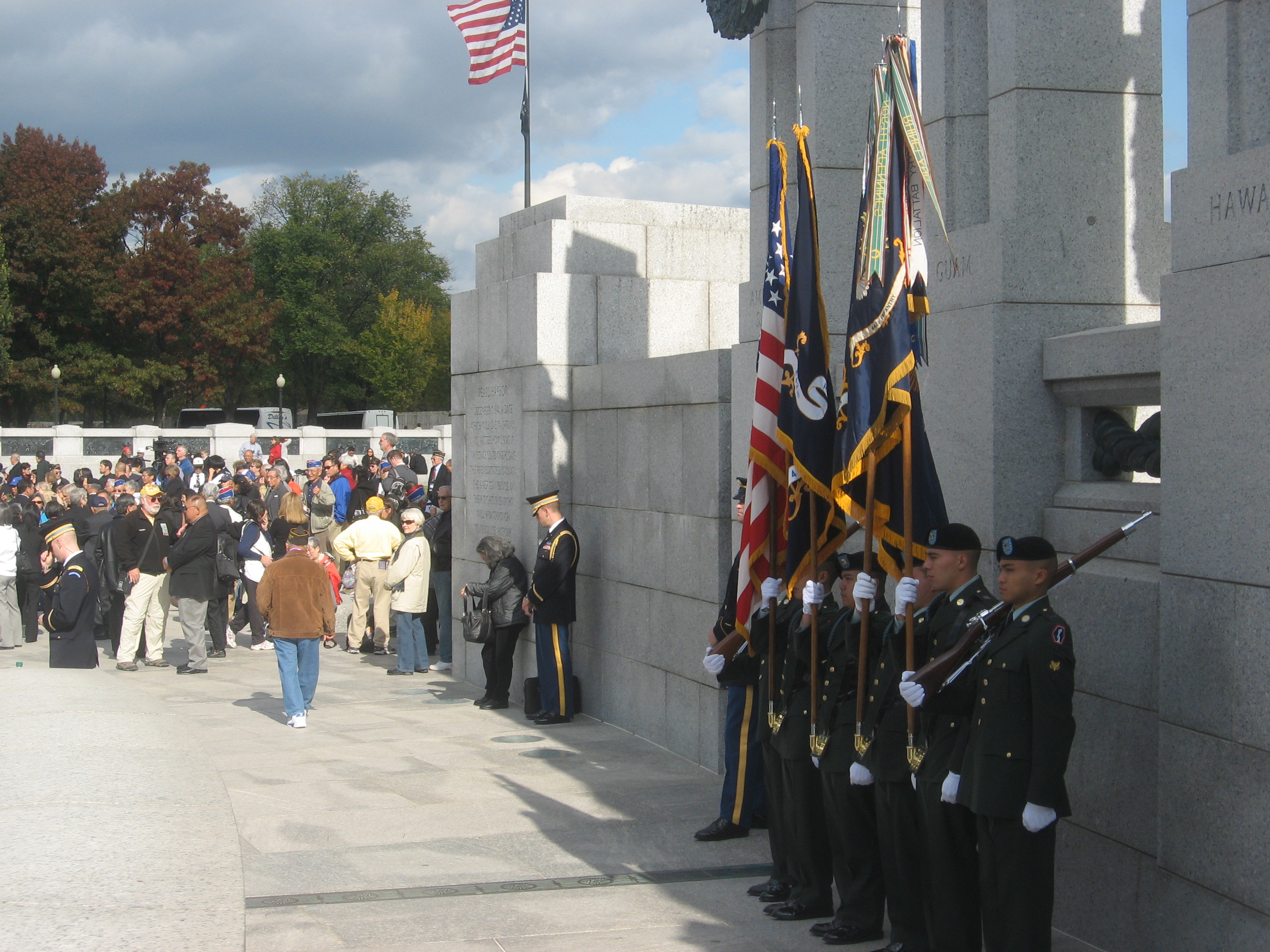
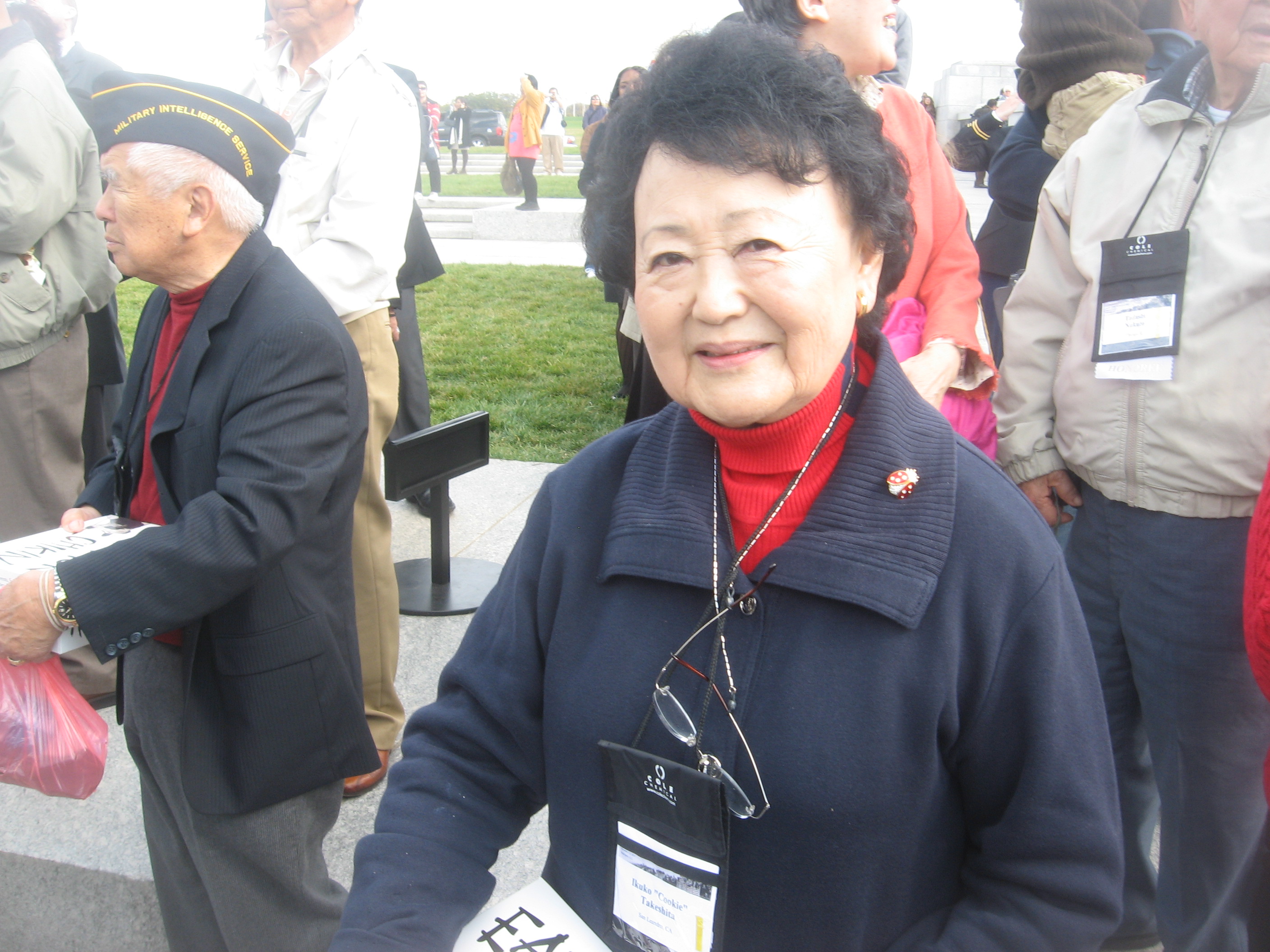
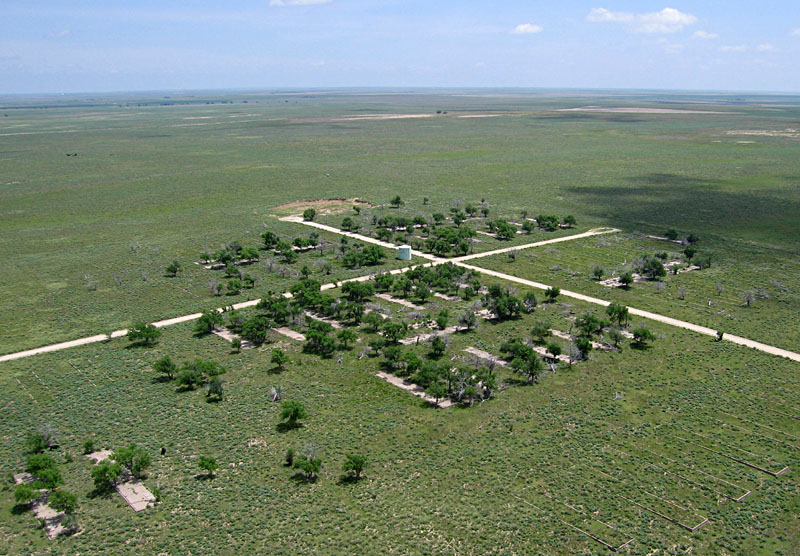

Second image is large medalion under the arch in first image. An alegorical figure holds a broken sword. I've seen this symbol in certain peace monuments but wonder how often it's used in war monuments like this one. /// Third from last image is Mrs.Ikuko (Cookie) Takashita. Next to last image shows the ruins of the Amache Internment Camp from the air -- note many building foundations in foreground, not just among the trees. Last image shows our van during our visit in 2009 -- note cactii in foreground.
|
Newseum Cost me $17.25 for a senior ticket. Helpful green shirted guides outnumbered visitors. I asked two employees in an elevator how many people work here. Their mouths said "only 175," and their bodies said that they feel the need for many more. Thinking of Dayton, I said some museums wish they had even one full-time employee. /// This museum encircles a five story atrium with glass, steel, and illuminated television screens absolutely everywhere. Cost a fortune. Not evident who paid. Lots of lip service to the first amendment (freedom of the press), but otherwise just a hodge podge of diff*erent exhibits -- Berlin Wall, TV antenna from the World Trade Center (WTC), Pulitzer Prize photos, journalists killed in the line of duty, newspaper front pages from all states and around the world for the current date, world map coloring countries for press freedom, things for kids, HUGE projection screen made in Norway (or was it Denmark?) suspended on a block and tackle above the atrium. /// I was very disappointed. I'm no long sure that the Newseum "qualifies" as a peace museum (as does, for example, the National Liberty Museum in Philadelphia).
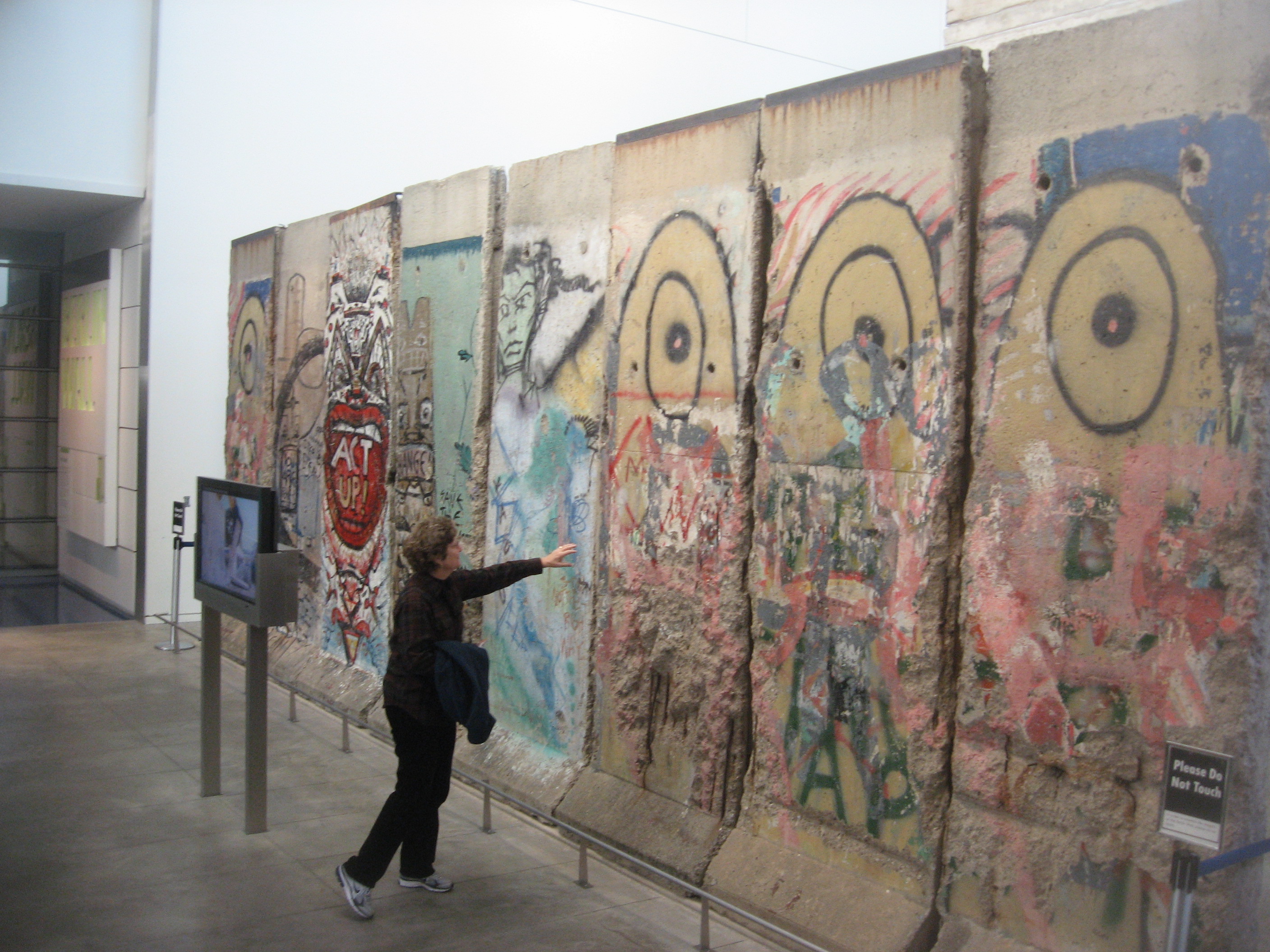
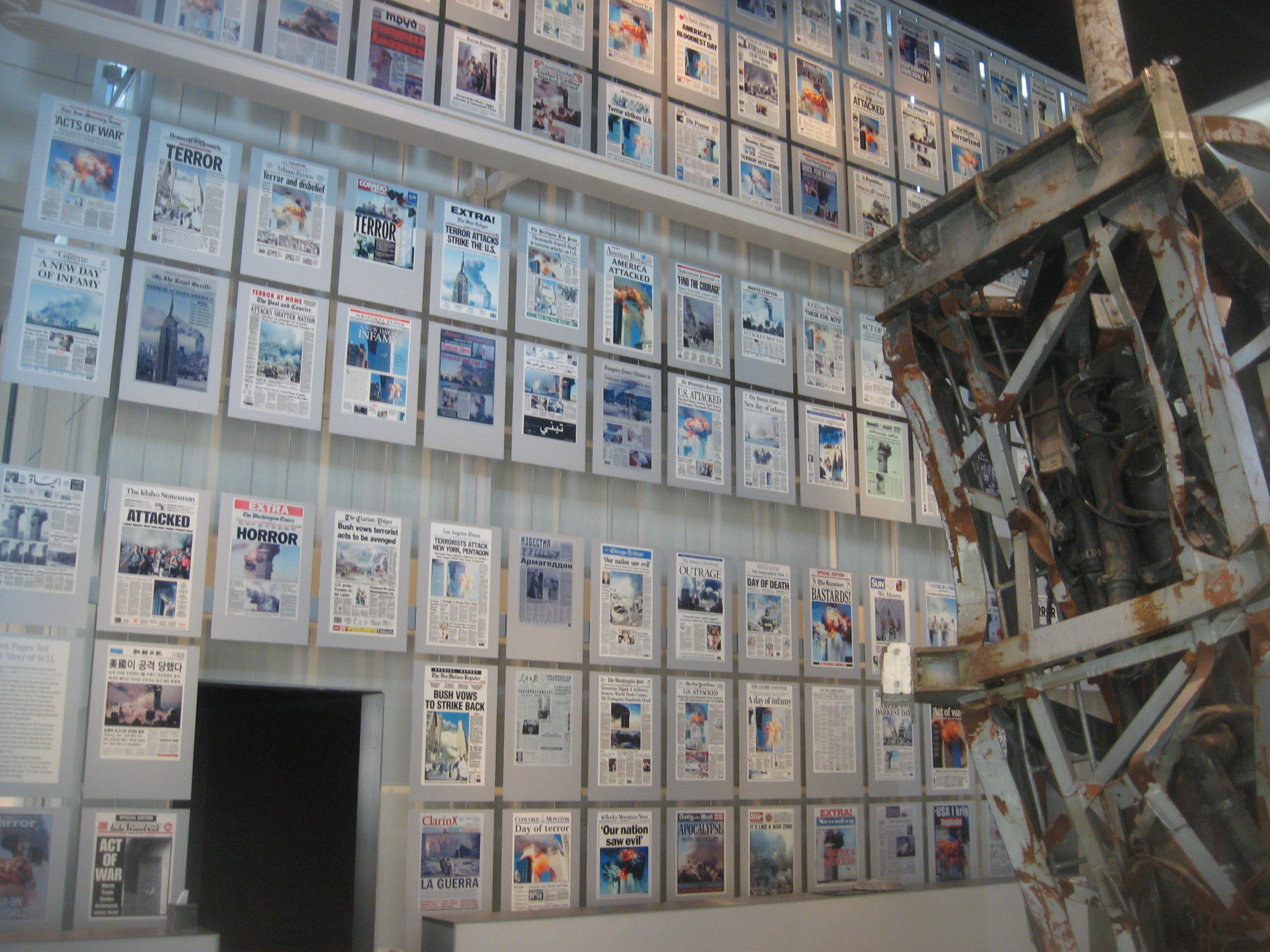
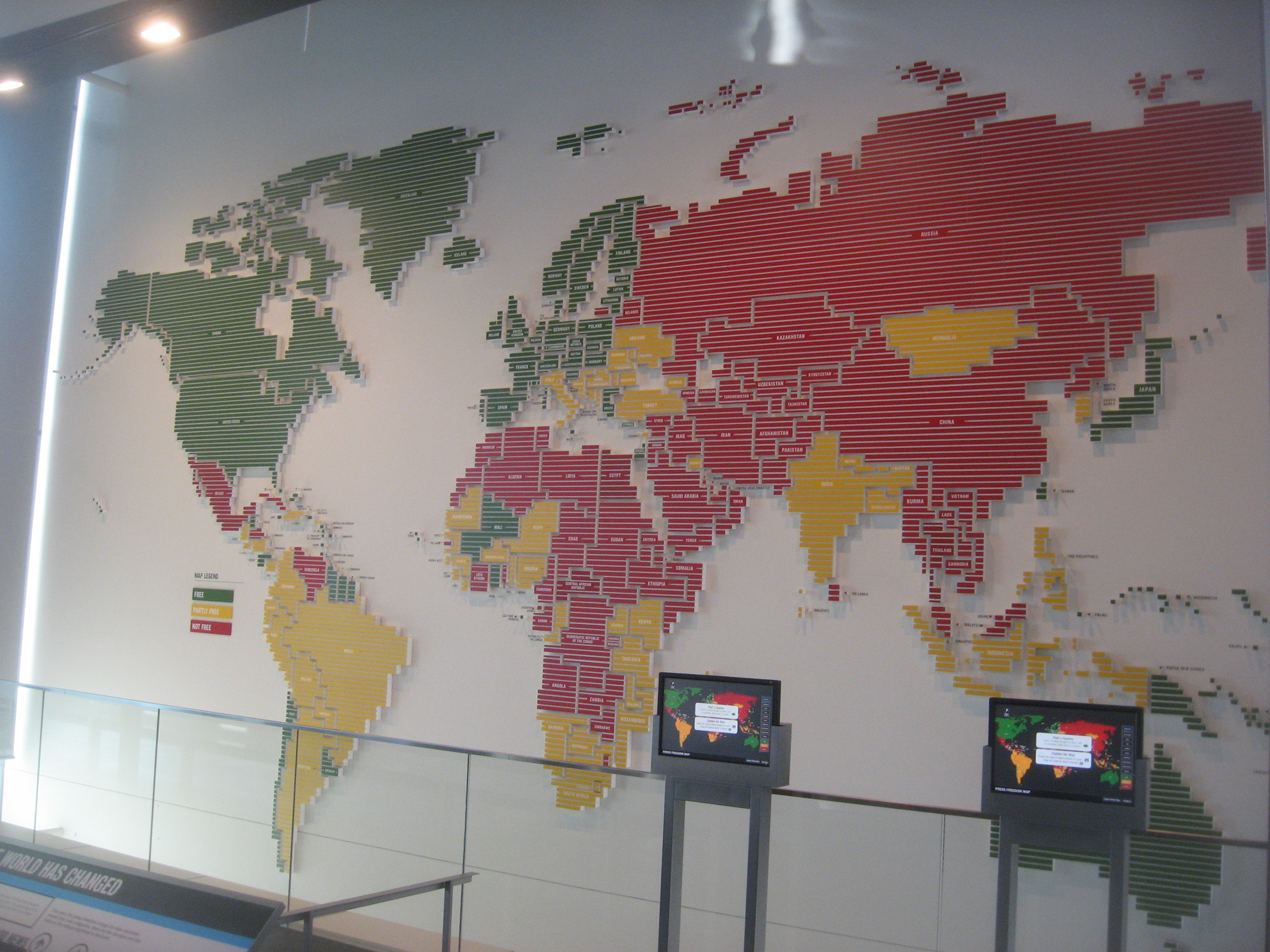
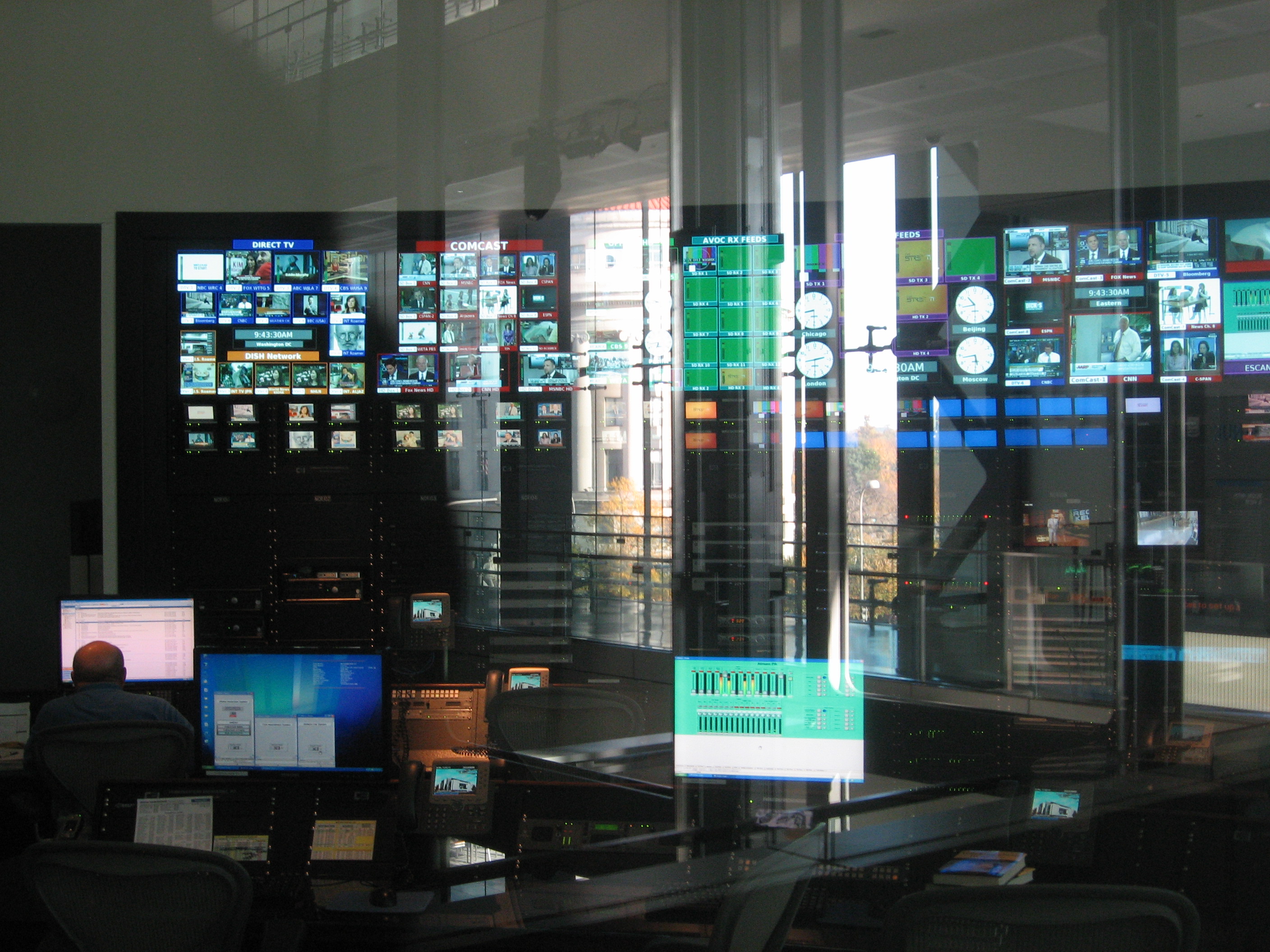
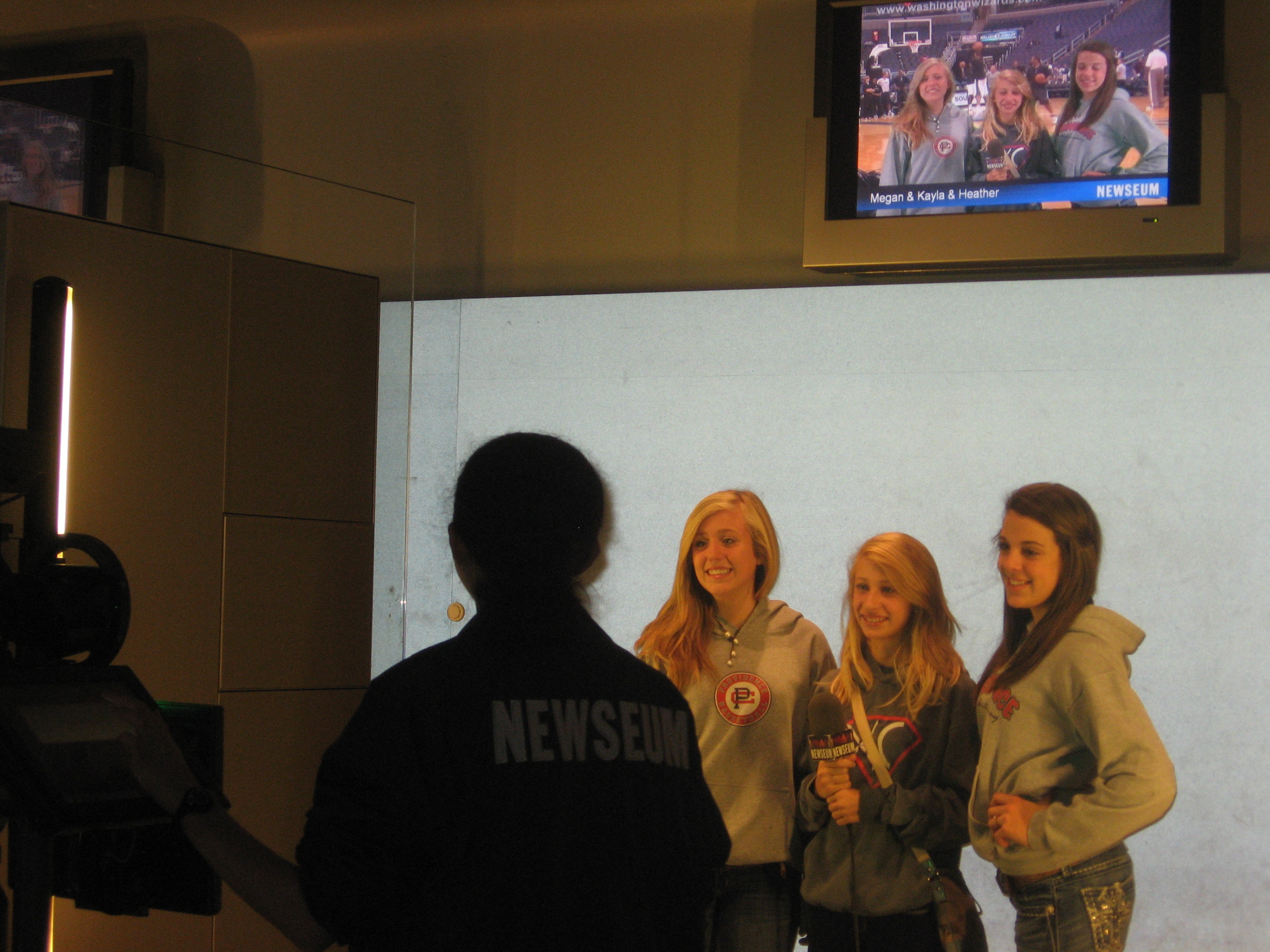 First image is Berlin Wall. Second is WTC antenna and wall of front pages from 9/11. Third is world map of press freedom. Fourth is control room for the Newseum's many TV monitors and for receiving programs and images from around the world. Last image shows TV cameraman photographing three museum visitors and superimposing their image over that of a basketball arena. First image is Berlin Wall. Second is WTC antenna and wall of front pages from 9/11. Third is world map of press freedom. Fourth is control room for the Newseum's many TV monitors and for receiving programs and images from around the world. Last image shows TV cameraman photographing three museum visitors and superimposing their image over that of a basketball arena.
|
Occupy Washington, DC Every US city now has at least one "Occupy" encampment. I walked through one of three in downtown DC. The lady I talked to was buoyant, although some occupiers left recently because the weather is beginning to get cold. She said the group has a permit to protest for four months, provided there are no tents or cooking, both of which were ample evidence. I did not see any Guy Fawkes masks which I've read are becoming a symbol of the Occupy movement.
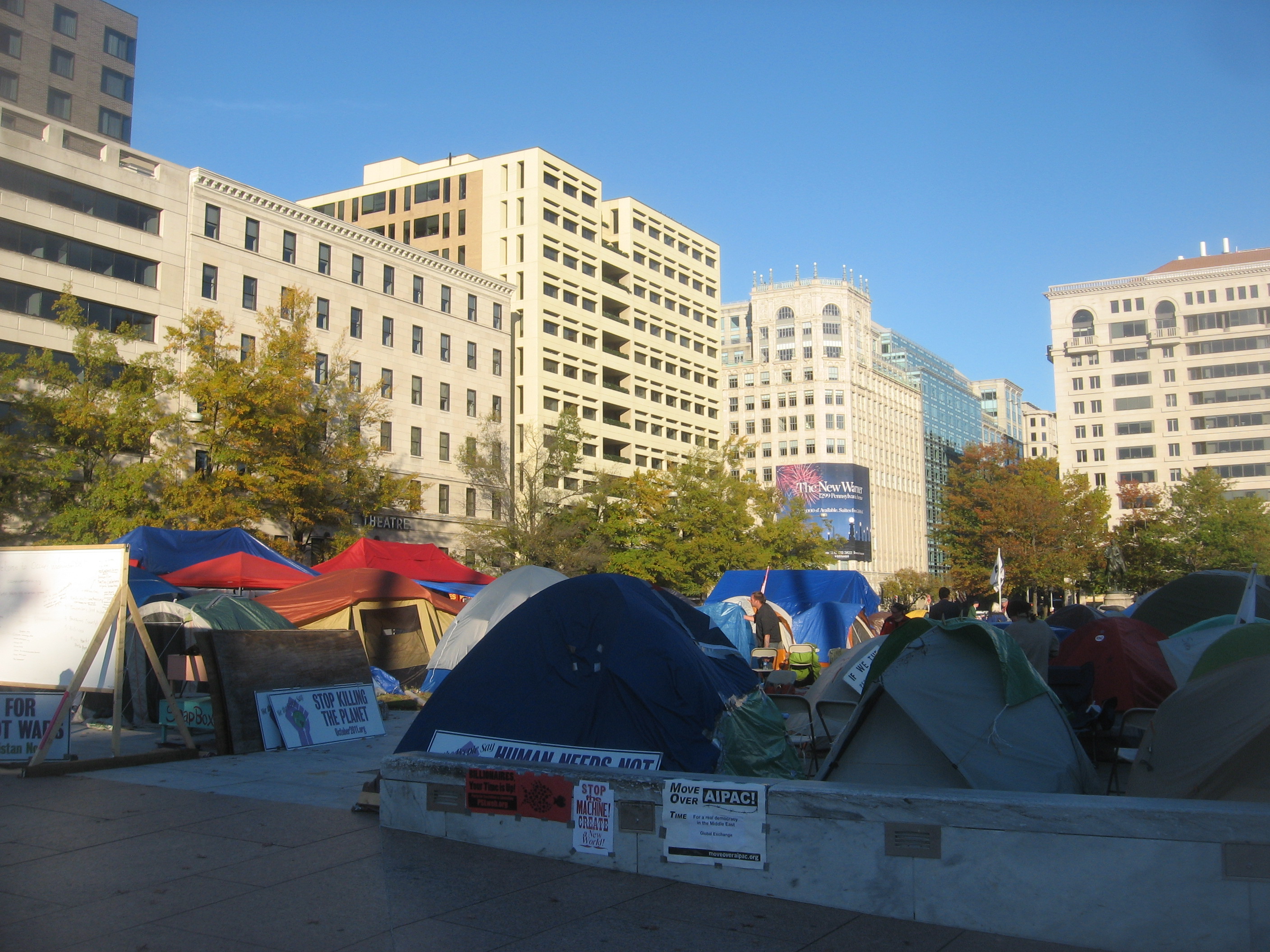
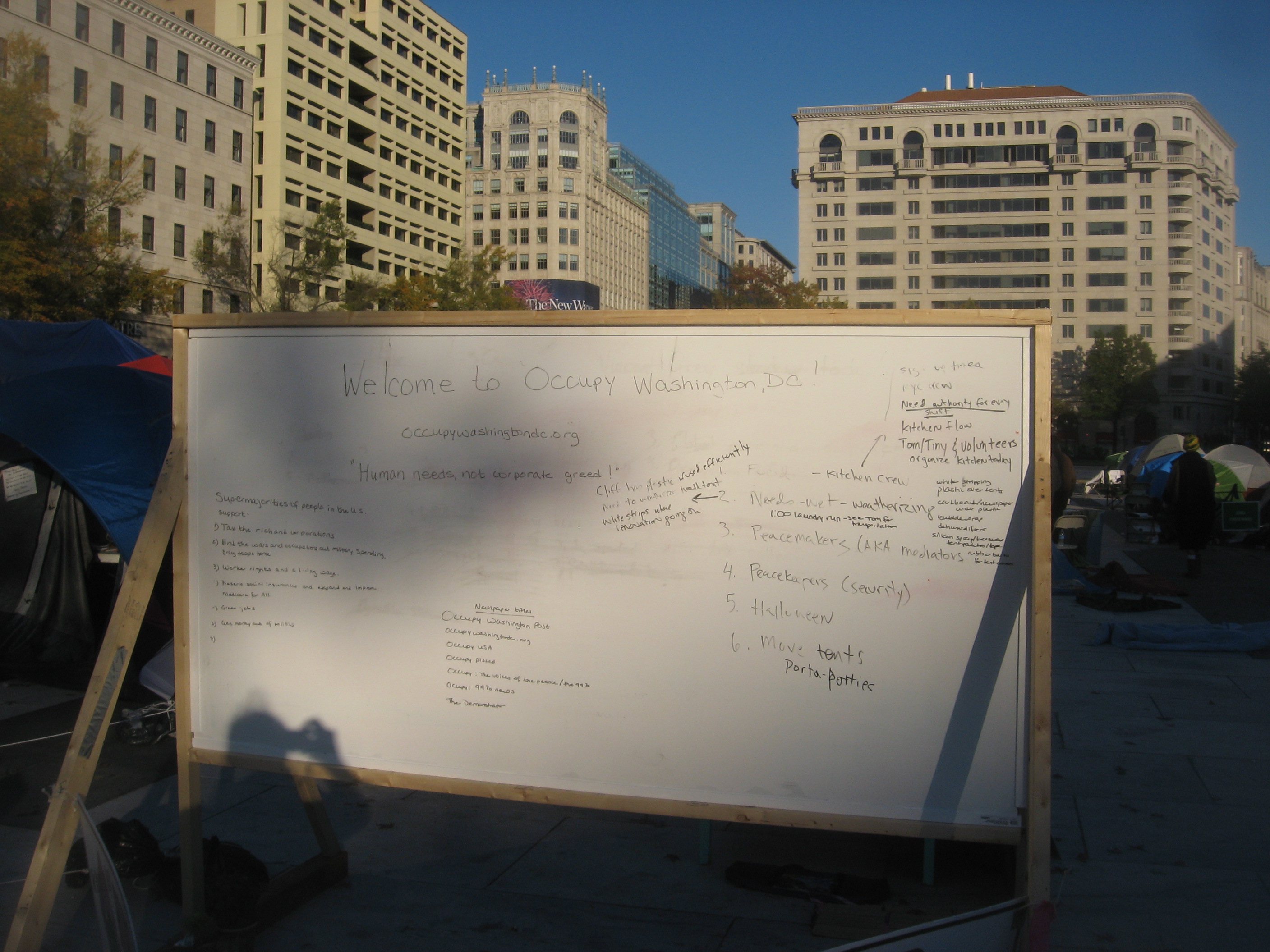
|
Organization of American States (OAS) I've walked by the OAS building a zillion times but never attempted to go inside until last week. No problem. Minimal security. No other visitor in sight. The inside of the building seems totally unchanged in 101 years (except for growth of the many trees in the Tropical Court). Old fashioned architecture. Many statues and busts of Latin American heroes. Turn of the 20th century reproductions of Aztec and Inca art. It's a real time warp. Should be better known to the public. The OAS, its Carnegie connection, and reason why the Pan American Union was once thought necessary for peace (as were other institutions in Europe) seem totally off the public radar screen.
Two Spanish speaking guards asked, "just want to look around?" I said I wanted to see the Peace Tree, and one guard, Carlos M. Franconi, pealed off to be my guide. Actually, the tree is directly behind the guards' desk in the "Tropical Court" around which the entire building is constructed, and there no doubt about its identity because it bears a sign labeled "Peace Tree" in English, and there are two, not just one, enlargements of the photo of Andrew Carnegie, President Taft, and others planting the tree during the building's dedication on April 26, 1910. (The same photo is on my web page for DC.) Somewhere I read (perhaps here) that President Obama planted a second Peace Tree last year when the OAS celebrated the building's centennial, but Senor Franconi insisted that Obama has never set foot inside the building. He asked me sarcastically if I saw a second peace tree, and I did not. The 1910 tree is about a foot thick near its base, but its many large leaves brush against the sliding glass roof about three stories above the floor. The guard/guide said that its branches have to be pruned periodically to keep it inside.
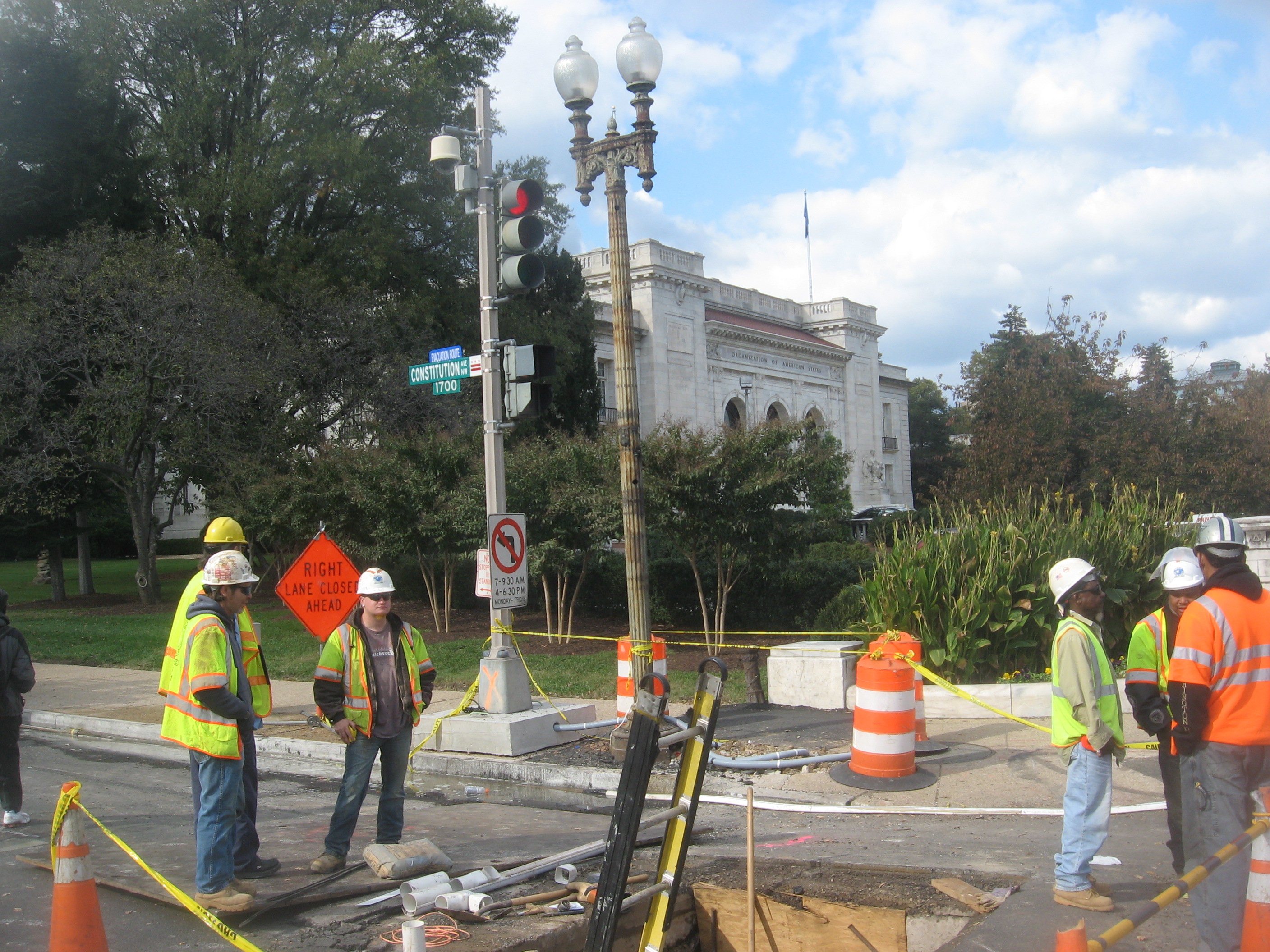
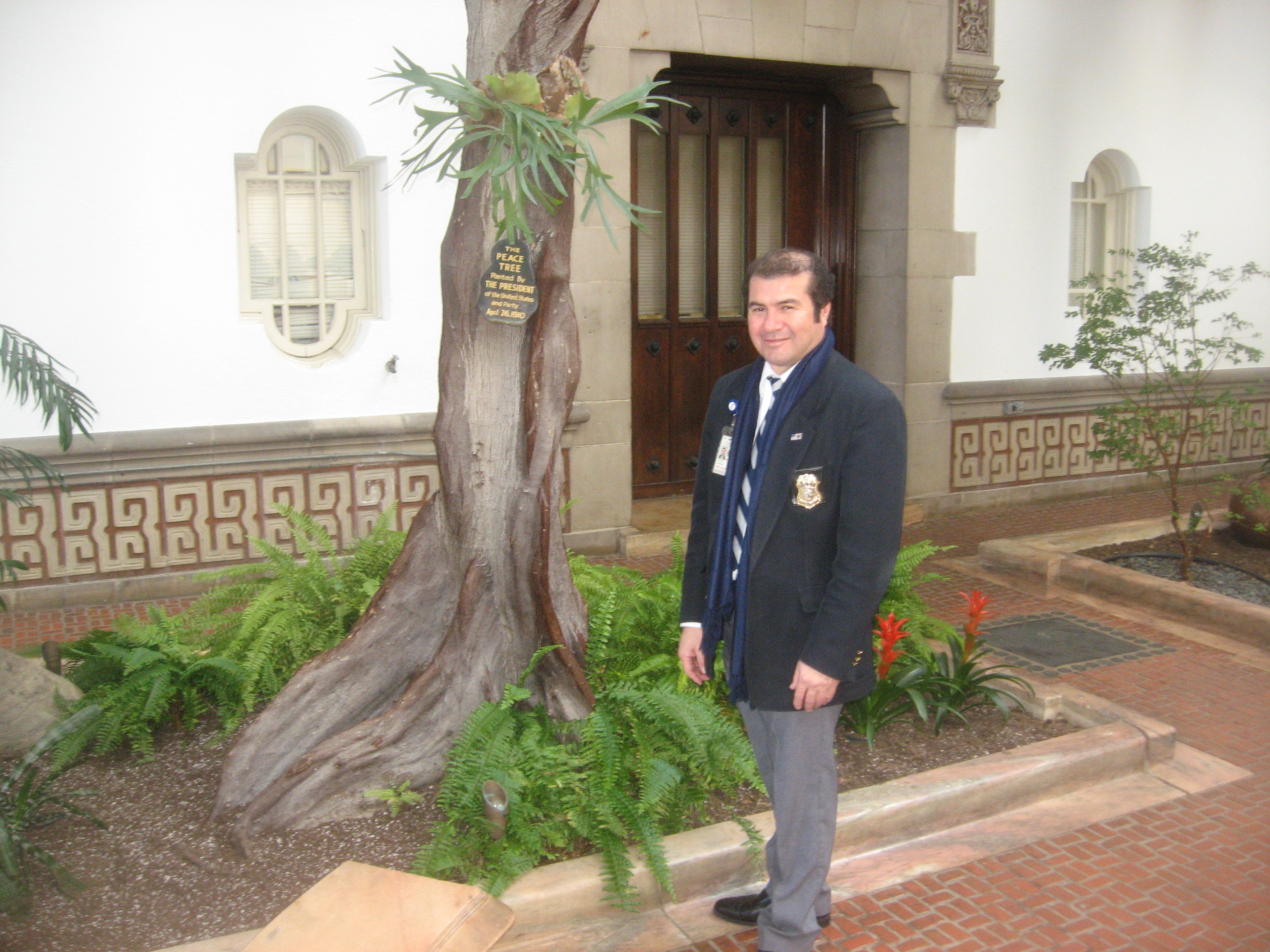
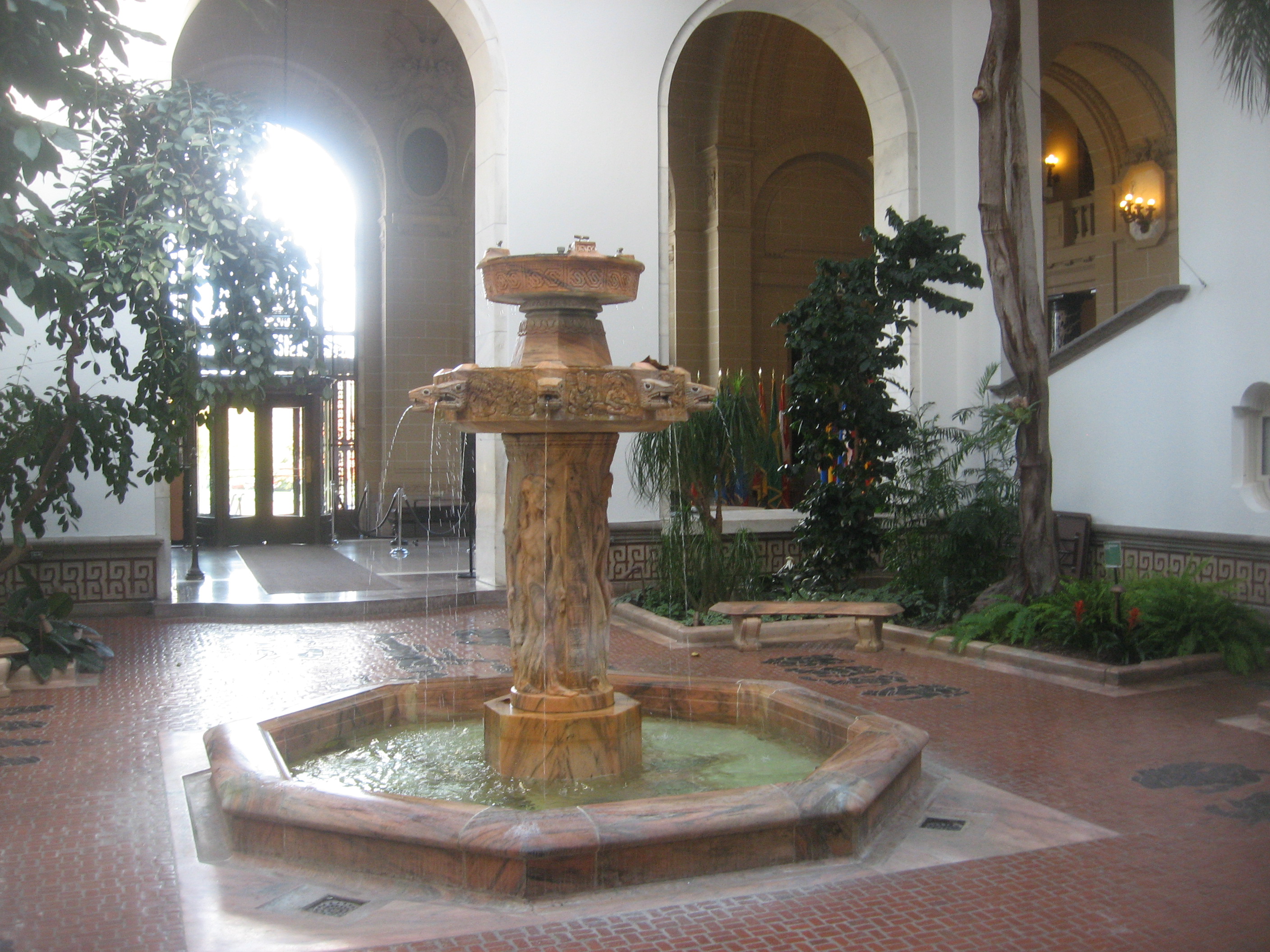
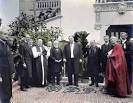

A large alcove off of the Tropical Court contained an unimaginative display of papers from the OAS' Columbus Memorial Library about the huge Columbus Lighthouse (El Faro de Colon) in the Dominican Republic. It had been planned in 1931 but not constructed until 1986 in time for the 500th anniversary of the discovery of America in 1992.
Senor Franconi showed me a book about the history of the OAS building and Andrew Carnegie. I didn't take a very good look because I decided to buy a copy. To do so, my guide led me to the office of Senora Colomar O'Brien, Directora de Protocolo, on the second floor. Senora O'Brien's secretary, Valena Lopez (from Chile), was willing to sell me a copy of the book for $35.00 but only if I could tender a check which I could not. My offers of cash or credit card were refused. Senorita Lopez had no card but kindly wrote our her name, phone number (202-458-3718), email address (vlopez@oas.org), and price of the book ($35.00) so I could obtain it by mail. Senora O'Brien brushed by on her way out of her large office. She is obviously the person to contact about the history of the OAS.
Next, I asked to see the world's widest mural in the utility tunnel which connected the main OAS building to its annex more than a block away. My guide pushed me toward the tunnel just as a charming lady from Chile appeared heading in the same direction. She and I walked from one end to the other some 200 feet away and back again. The OAS website says the mural is "Raices de la Paz / The Roots of Peace" by Uruguayan artist Carlos Paez Vilaro and that it "depicts various themes of peace and development in the Americas," but we never saw the word peace or paz. What we saw was a terribly long 8-foot high ribbon of red paint festooned with a complicated array of Picassoesque heads and other abstract images. At the far end, the mural was marked with three dates, the beginning and end of the original work (Dec. 1960-Nov. 1975) and of its restoration by Roberto Arce (2002). On the north side of the tunnel, five or six feet away from the mural, was an array of 4-5 huge utility pipes.
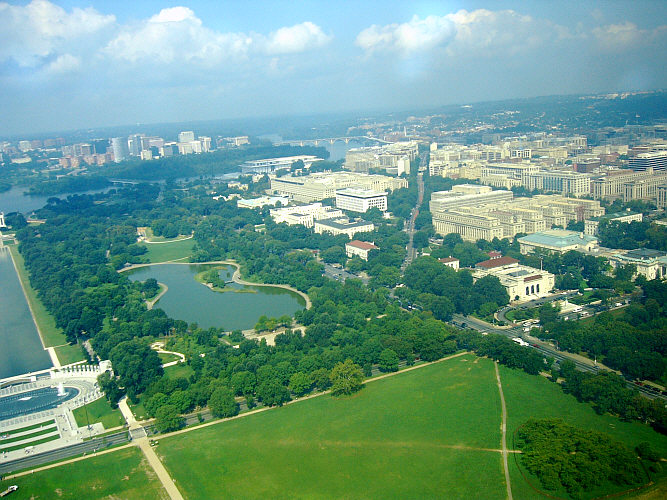
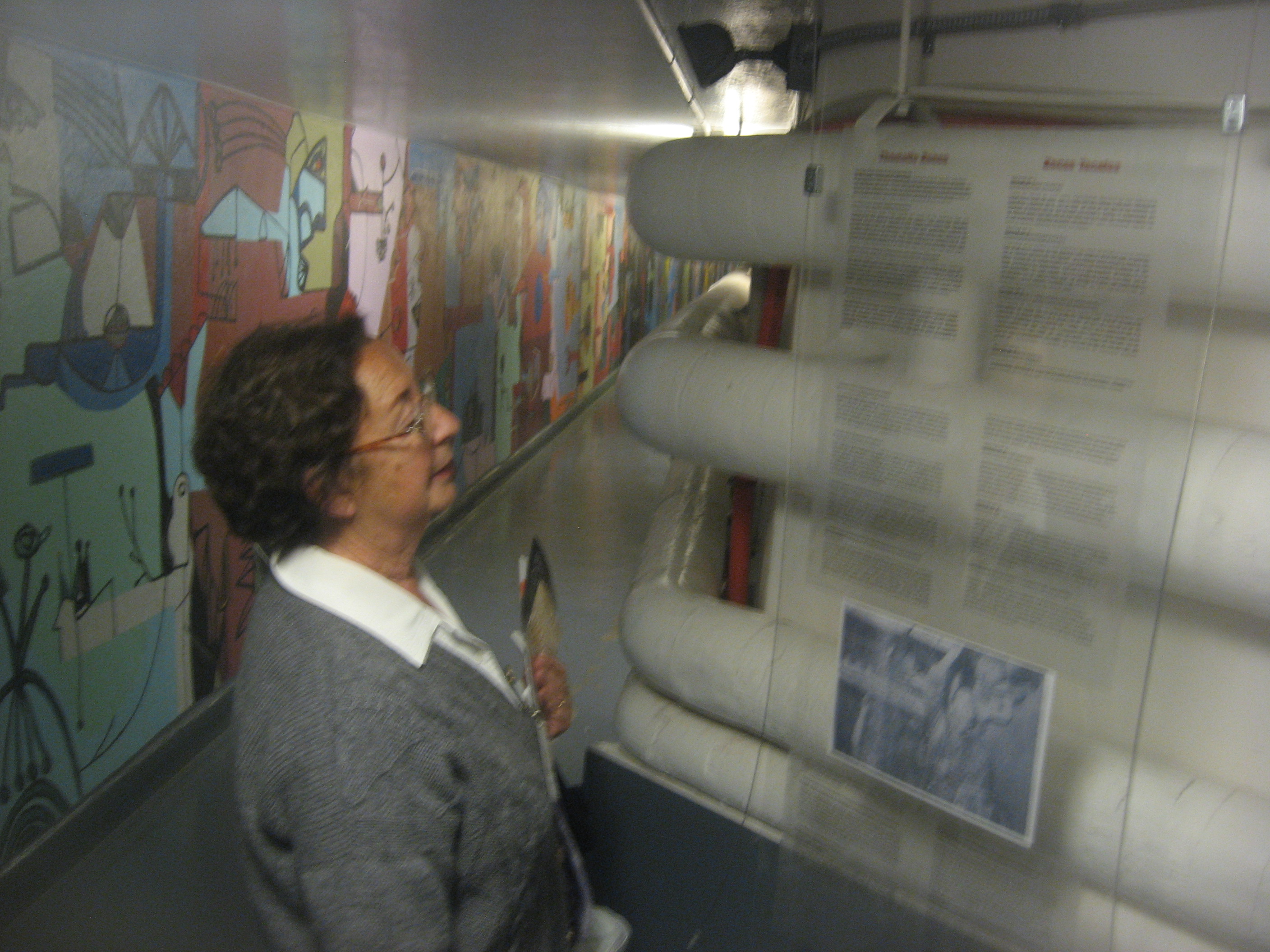
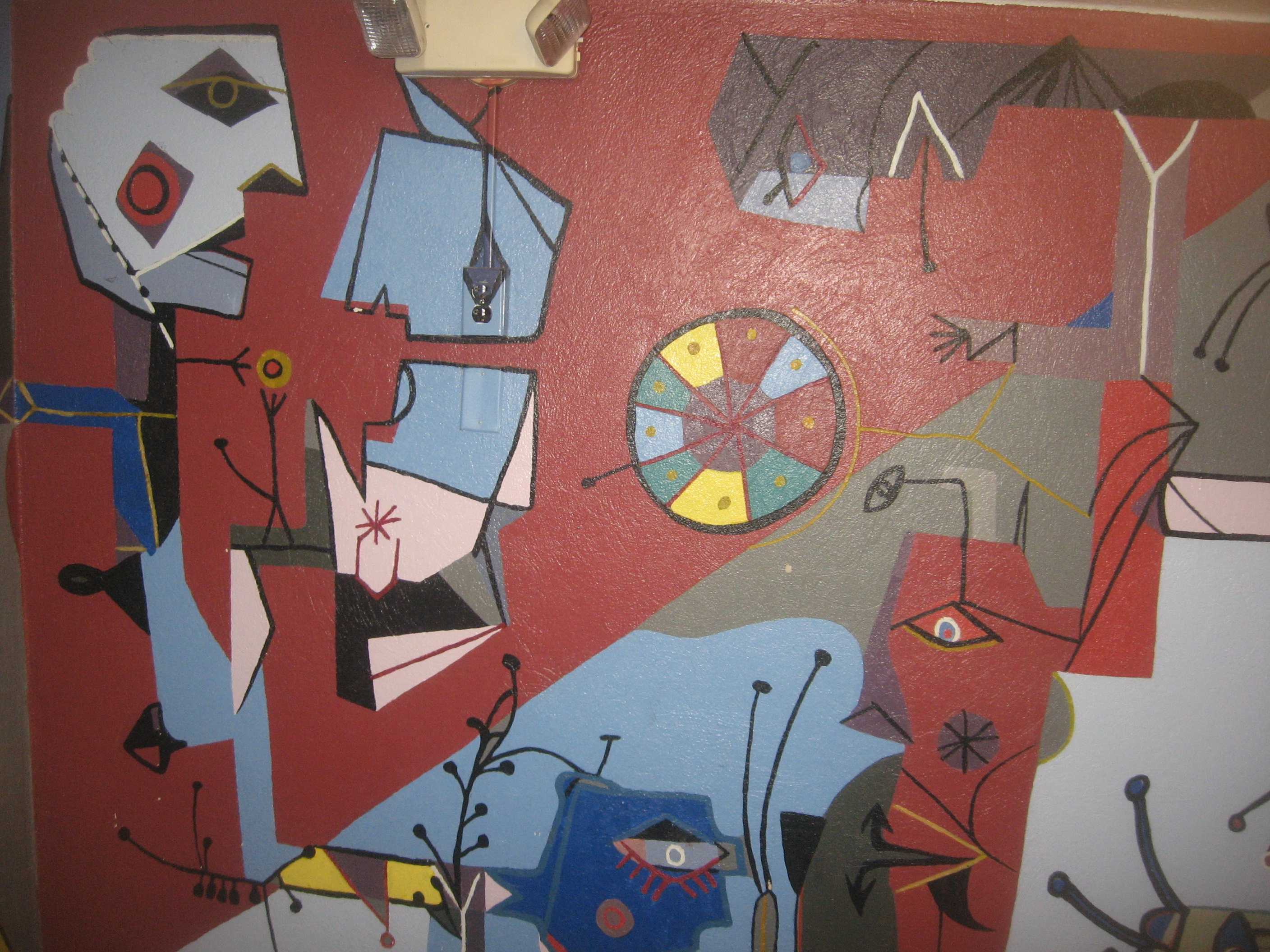
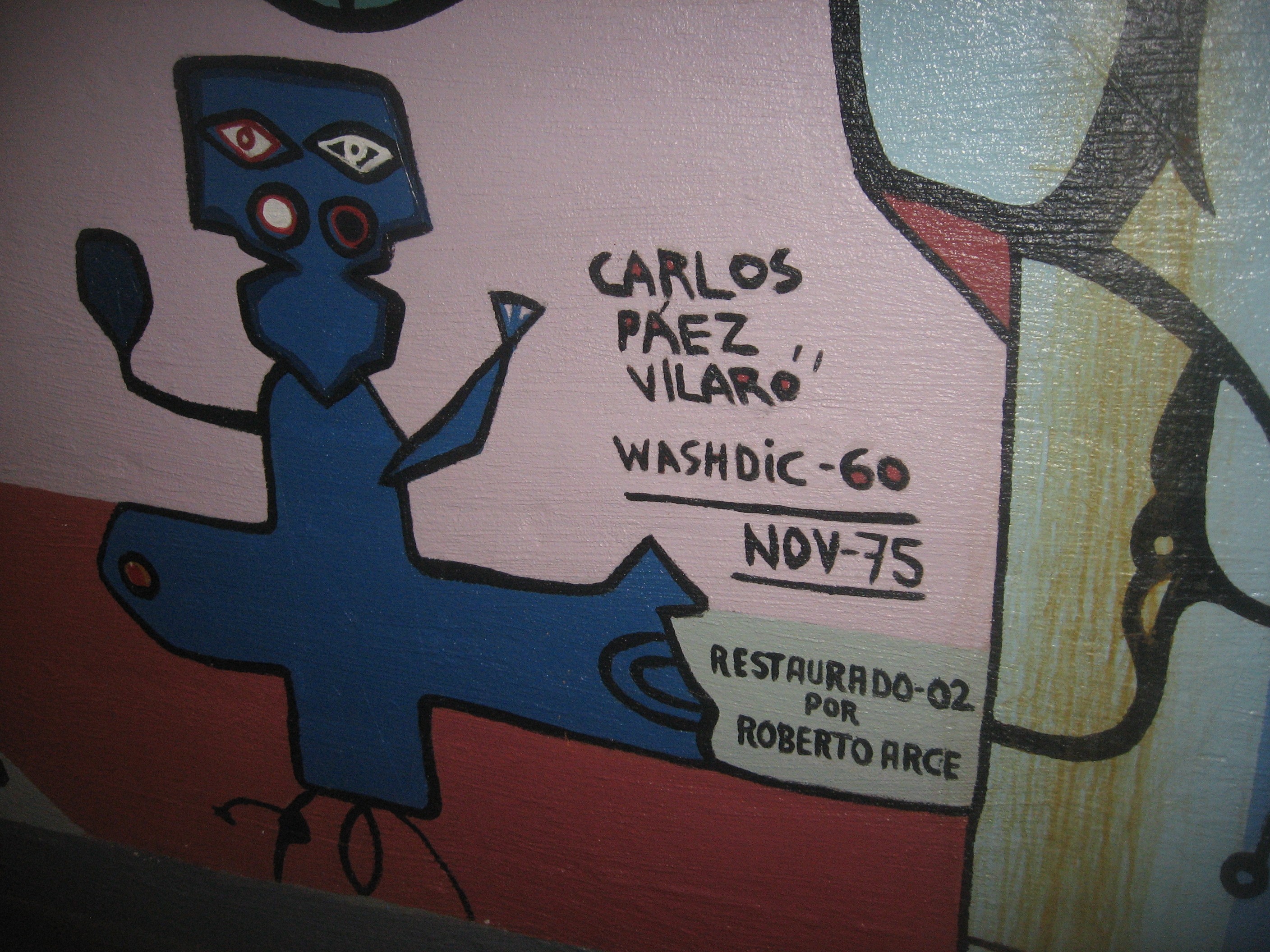
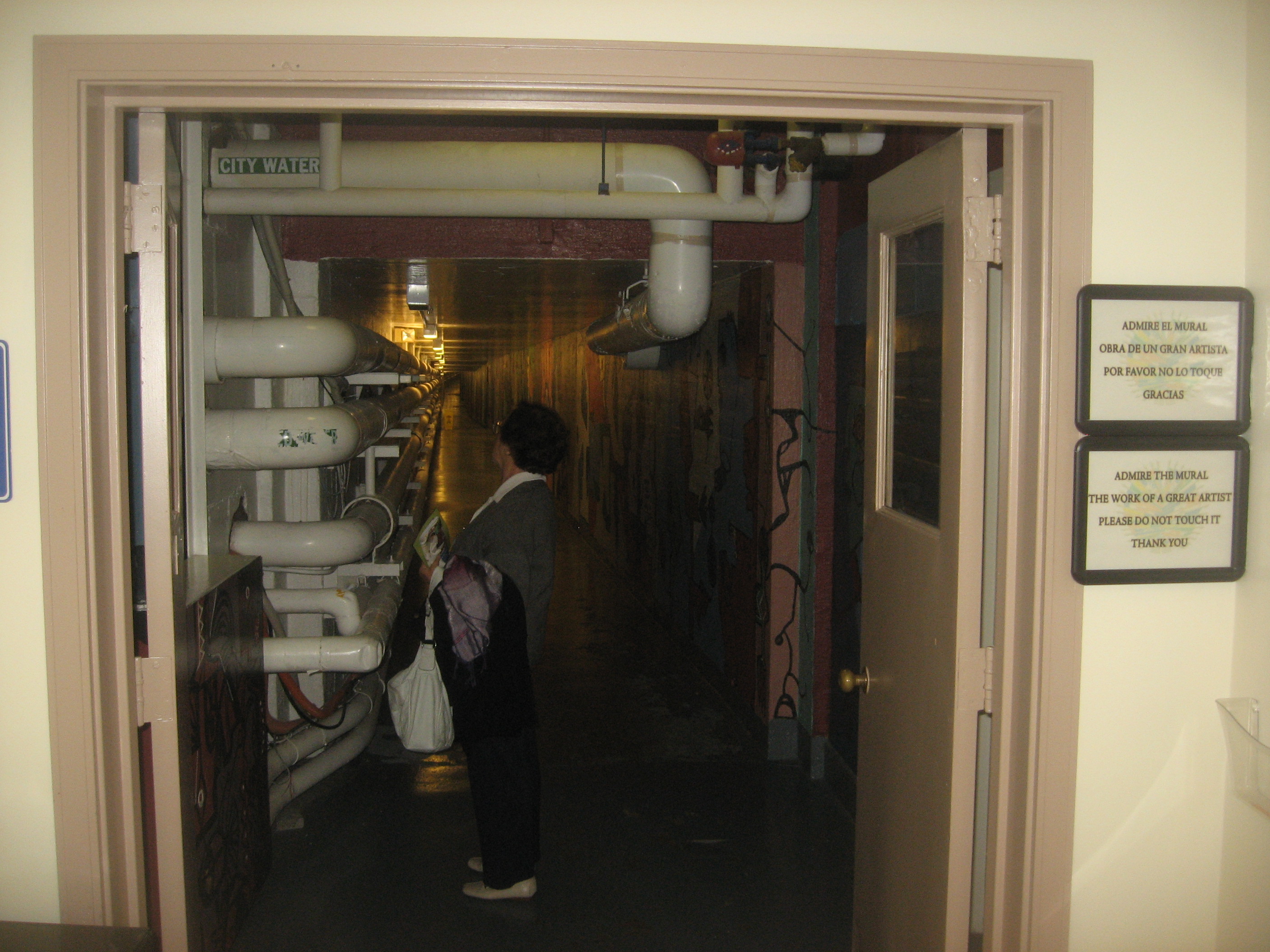
Left-most image is a view from the top of the Washington Monument. The red-roofed buildings are the OAS, with the tunnel running between them. To the right of the OAS is the headquarters of the Daughters of the American Revolution (DAR) incluing Constitution Hall. The biggest buildings in the view are the US Department of the Interior & the US Department of State.
|
US Department of State I worked off and on in this building for 25 years. When I started, tourists could walk unchallenged anywhere inside and hang out in the lounges and cafeterias. Today, an entire street in front of the building is closed, and armed guards are everywhere. /// I talked to an earnest group Iranians camped on on a street corner directly across from the main entrance. They have been there 24/7 for 223 days to protest what they say is Secretary Clinton's broken promise to protect Iranian refugees at Camp Ashraf in Iraq. /// A Museum of American Diplomacy is planned to fill a former driveway at the pre-WWII entrance, but the project is years behind schedule, and there's no visible evidence of the museum on the site.
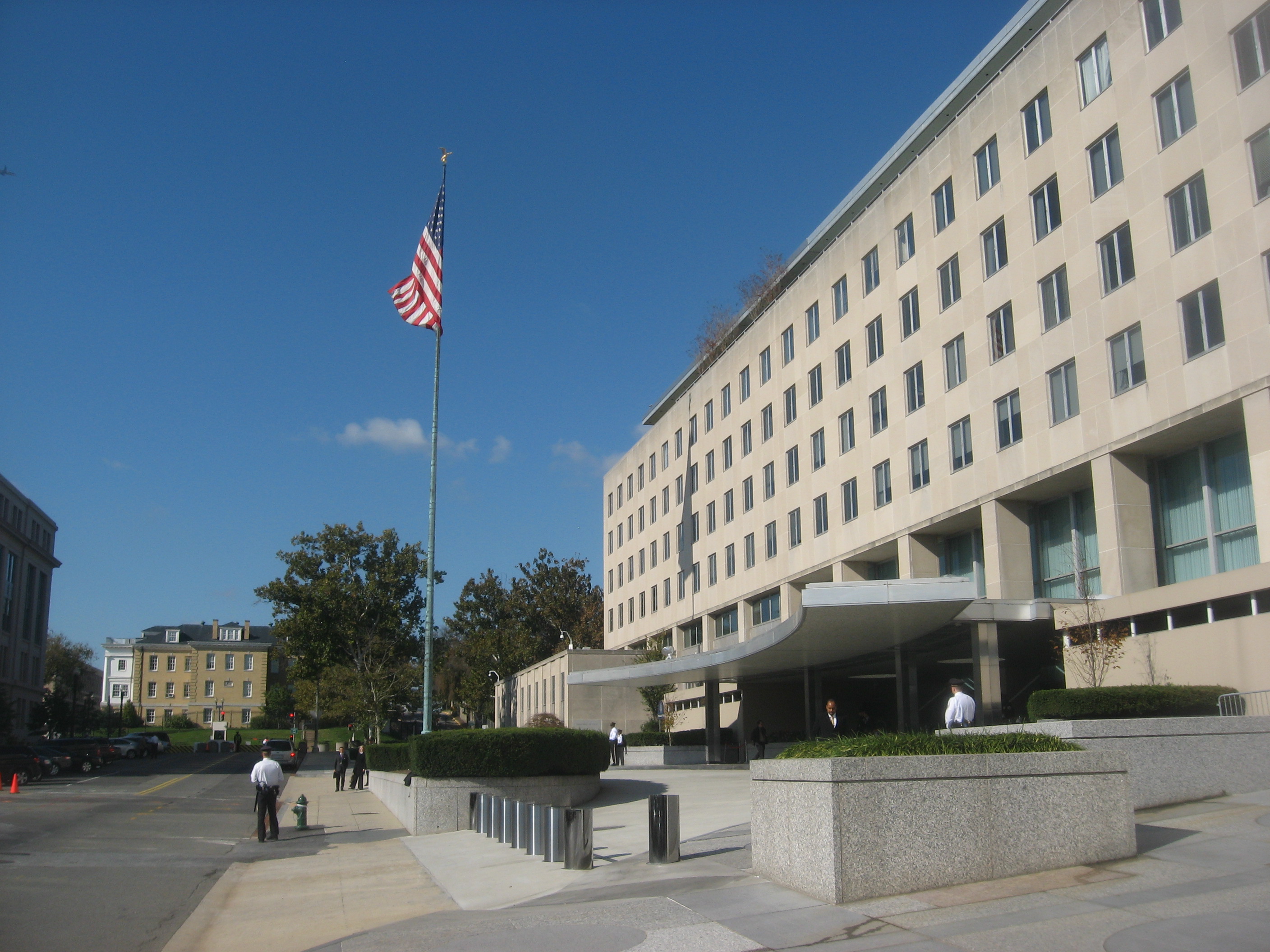
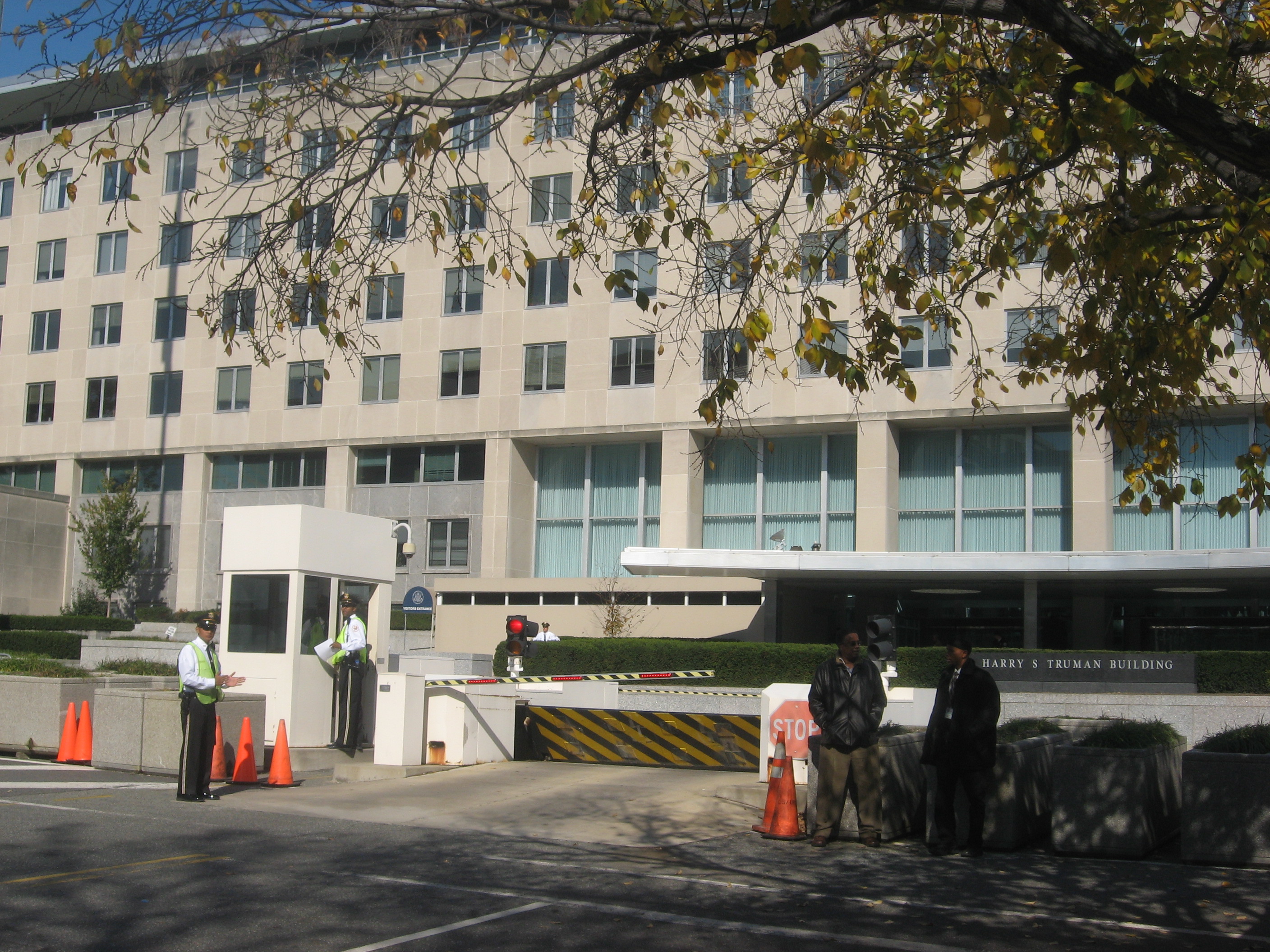
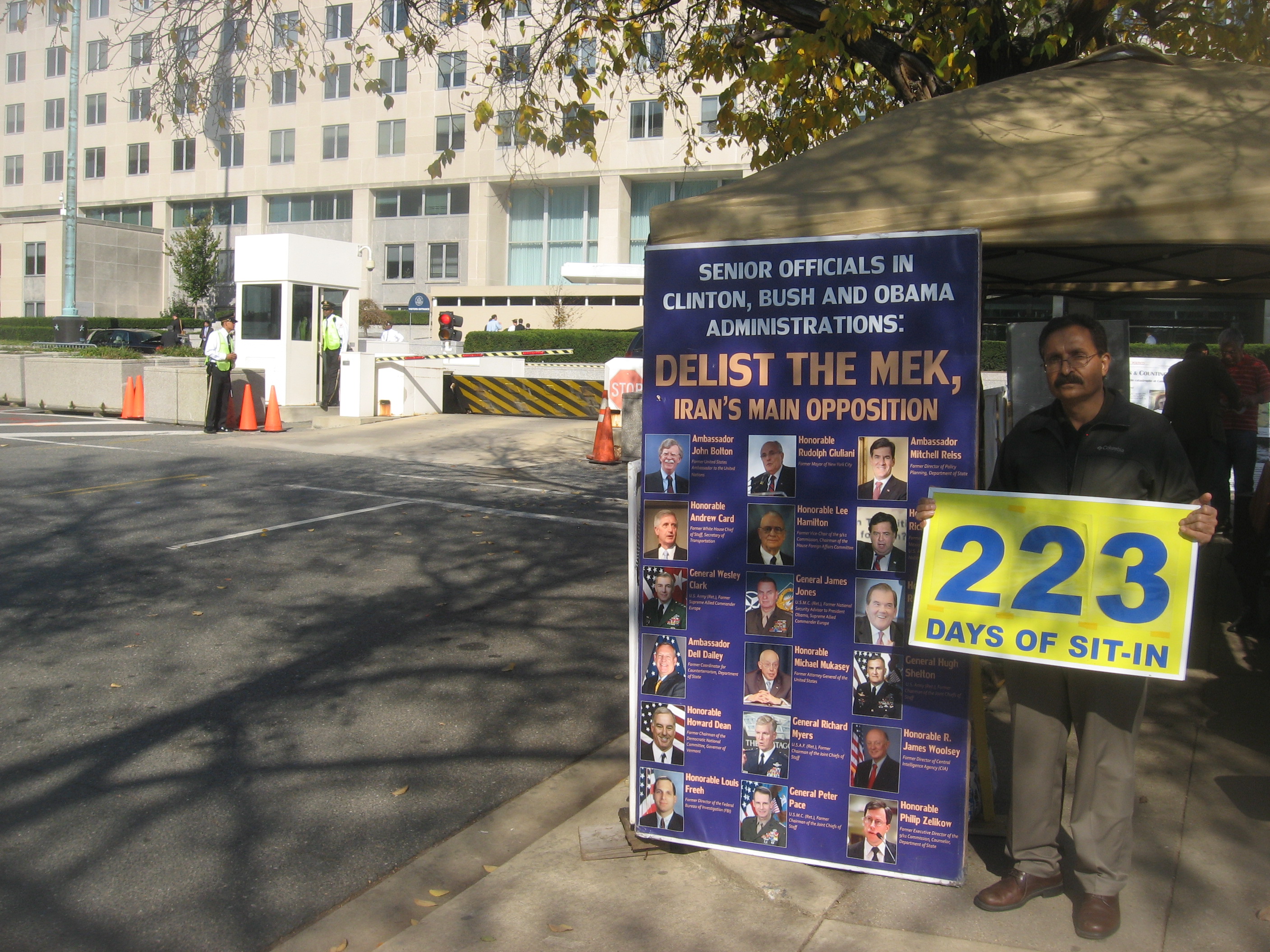
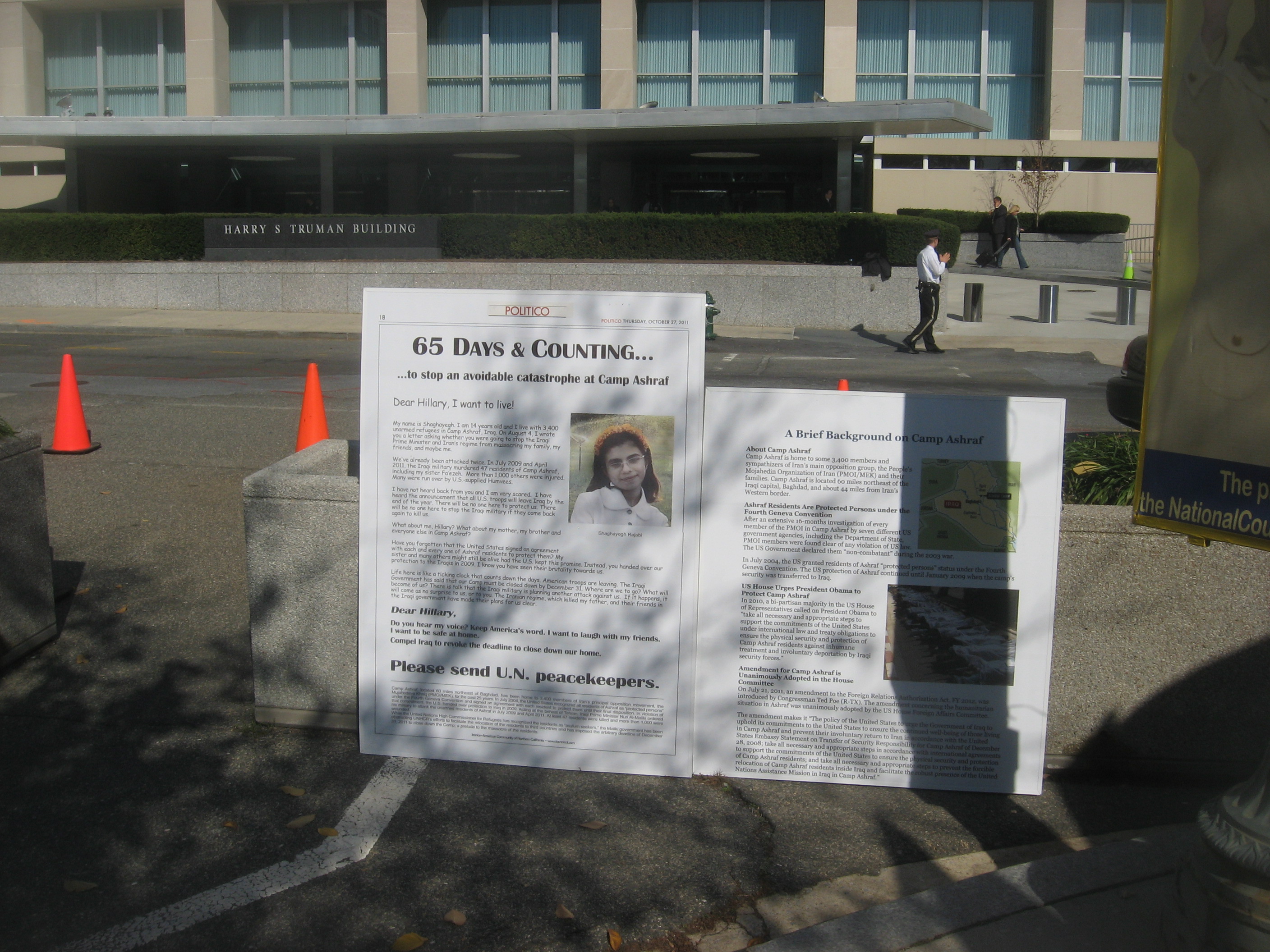
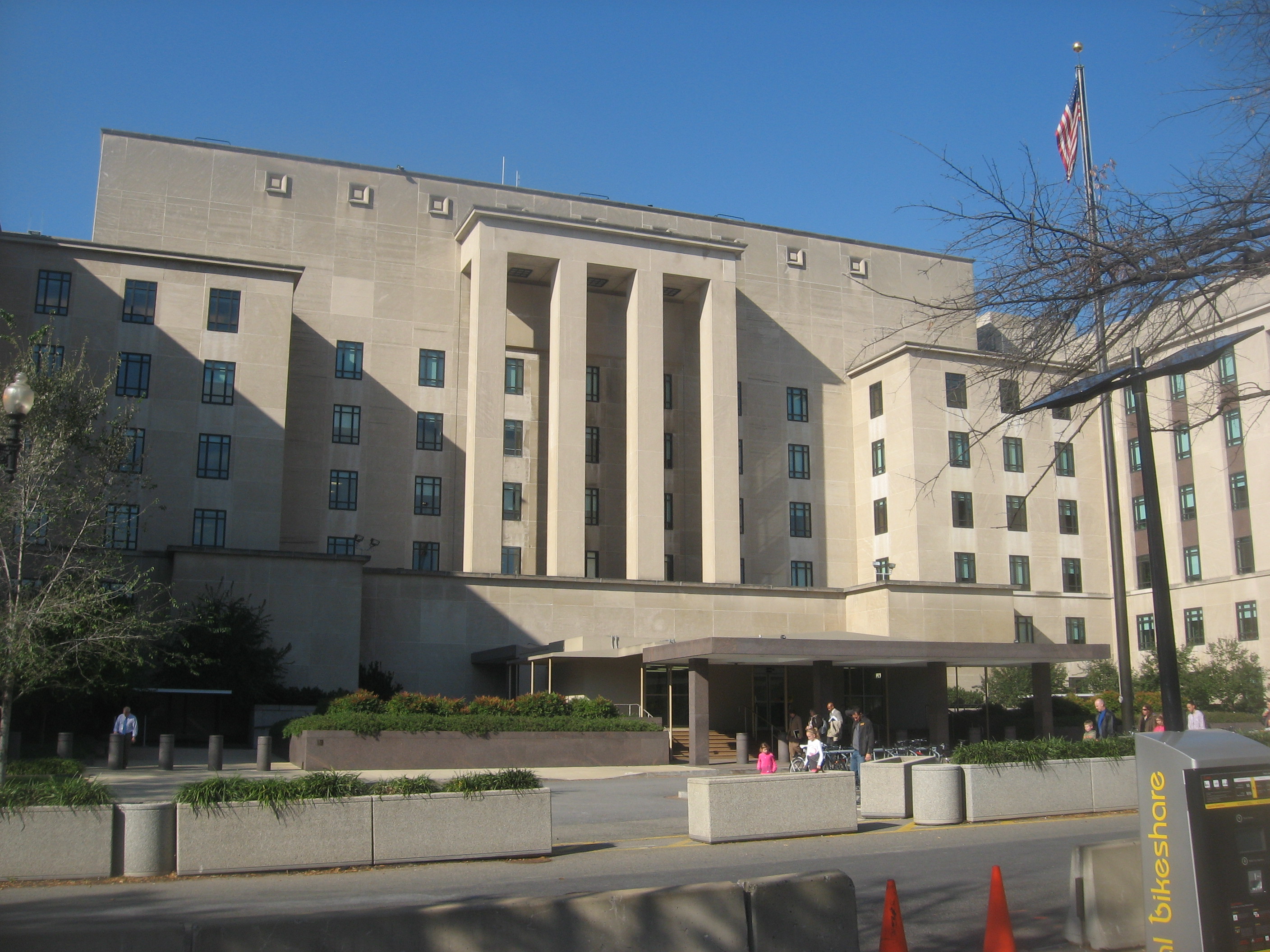
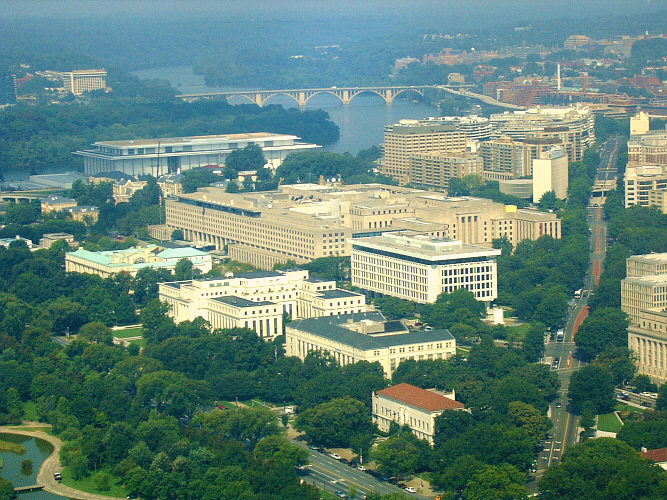
Last image is a view from the top of the Washington Monument. It shows both entrances of the State Department building. It also shows Key Bridge, the Kennedy Center for the Performing Arts, the Watergate complex, the Naval Medical Center, the National Academy of Science (NAS), the Federal Reserve, and (the red roof in the foreground) the annex of the Organization of American States (OAS).
|
US Holocaust Memorial Museum (USHMM) I went here only to visit the bookshop, but museum admission is free, and I wandered around a little.The bookshop was very well stocked. I found and purchased "The Holocaust Sites of Europe" by Martin Winstone (2010, pp. 438) which I first encountered at Yad Vashem in Jerusalem last June. Winstone writes about every country in Europe including the UK (to which he devotes the last half page of the book), summarizing each country's Holocaust history and adding a prose description of its Nazi sites, museums, and monuments. I wish he'd published more photos and made his descriptions more technical, i.e. full name, address, date, etc. for each monument. /// I also purchased "The world must know: The history of the Holocaust as told in the USHMM" by Michael Berenbaum (1993, 2006, pp. 250), seemingly an excellent book for the relatively low price of $19.95. /// I do not recall books about any other genocides at the Yad Vashem bookshop, but USHMM had many, including an entire shelf of books about Rwanda published since its genocide in 1994.
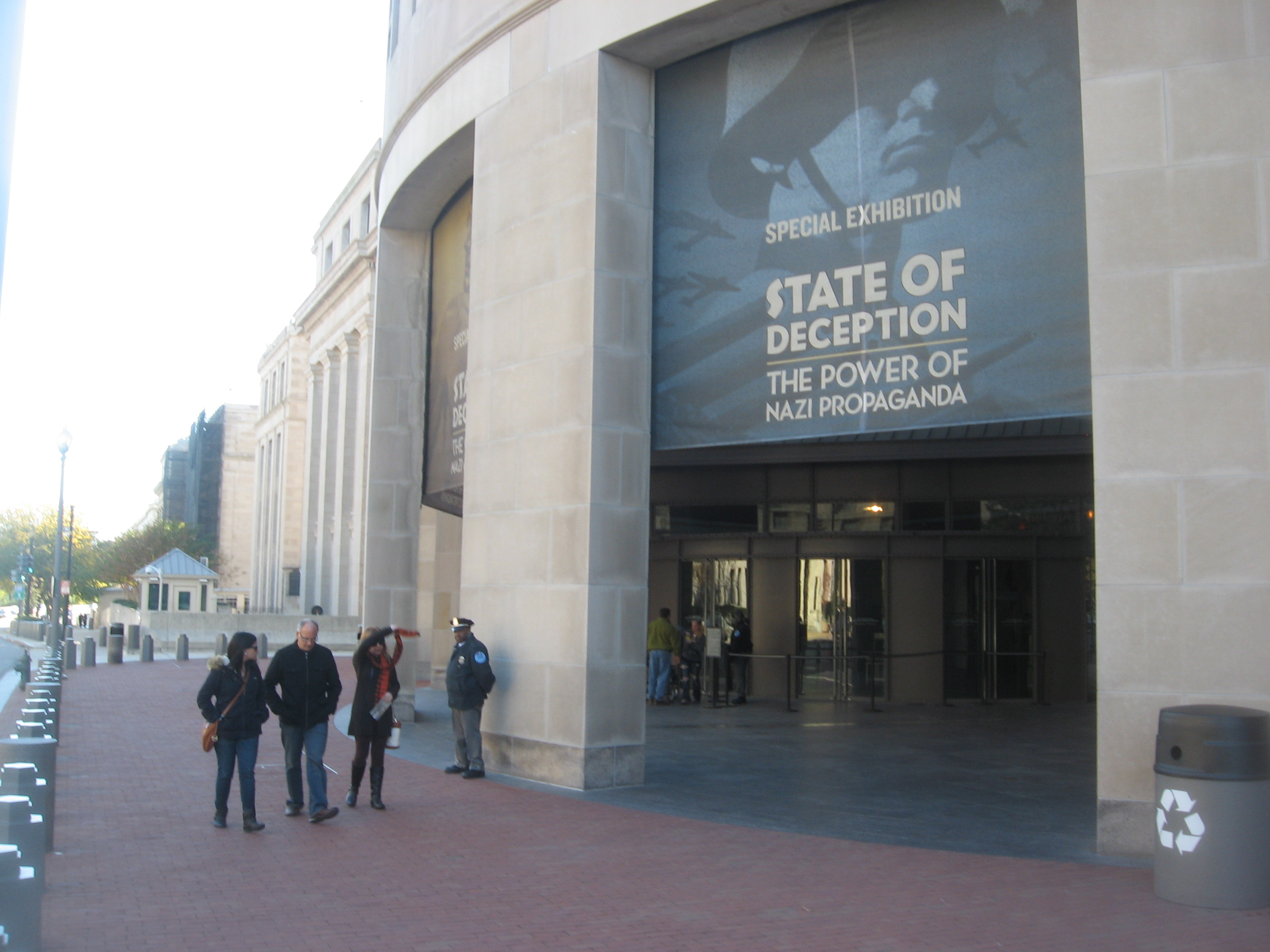
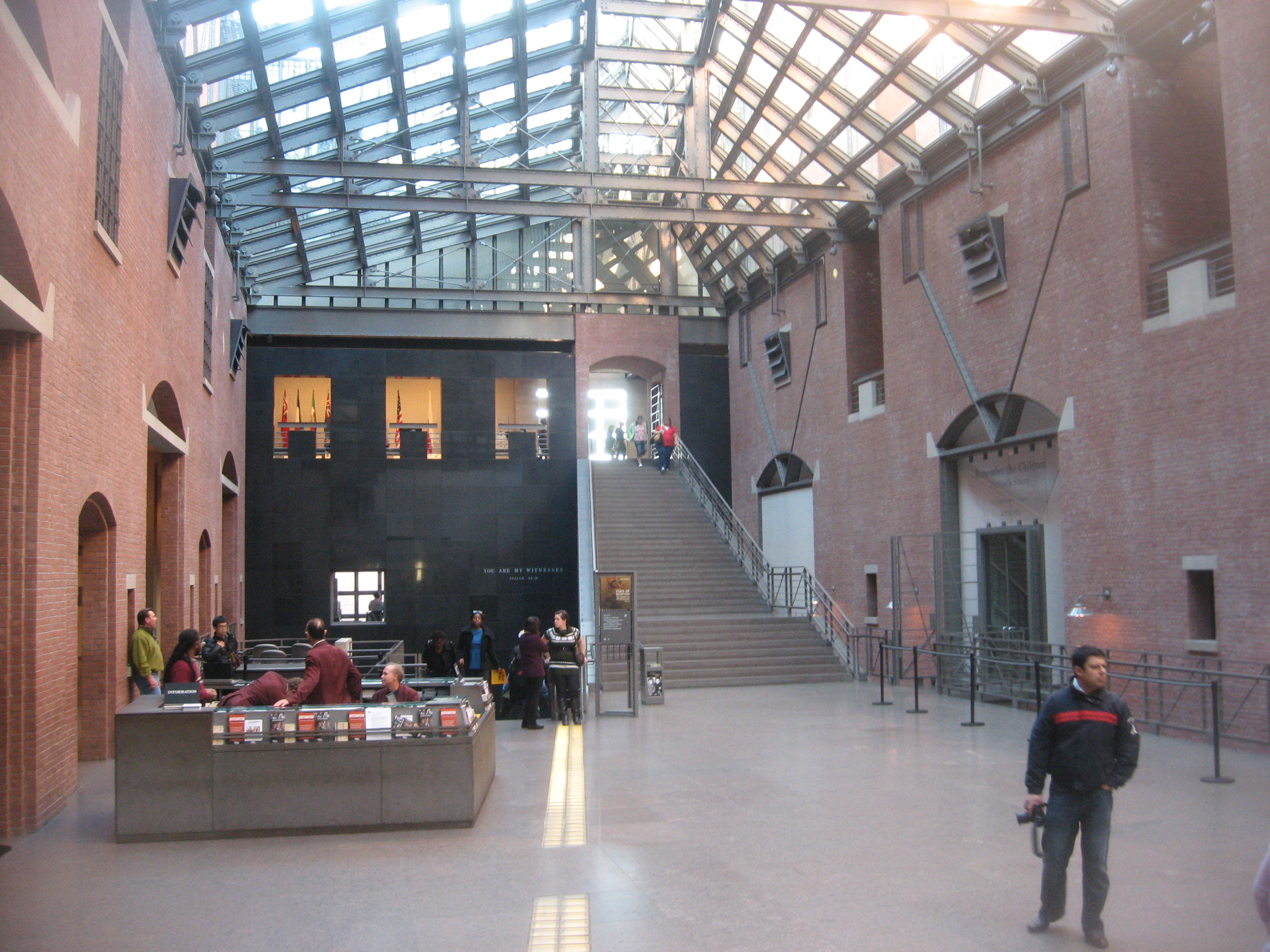


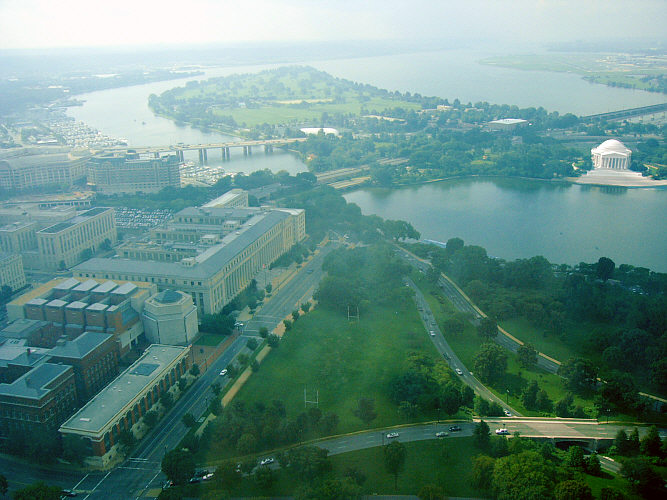
Last image is a view from the top of the Washington Monument. It shows the USHMM crowded between two other building in the left portion of the view. To the right is the Jefferson Memoriall on the Tidal Basin. In the background are the 14th Street Bridges, East Patomac Park, the Patomac River, and Reagan National Airport.
|
US Institute of Peace (USIP)
& Global Peacebuilding Center (GPC) Beautiful new building. Construction is completely finished. The new building was designed by Moshe Safdie, same architect who designed the new Holocaust Museum at Yad Vashem in Jerusalem, a new performing arts center which opened in Kansas City about two weeks ago, and a new art museum which will open in Bentonville, Arkansas, next weekend.
Entire staff is working inside, I suppose, but the only person I saw was a single guard on foot outside the rear (23rd Street) entrance. He stopped me from entering but took time to chat and sent inside for a brochure. Actually, the guard didn't have anybody else to talk to. He said that opening the public, southern half of the building (along the western-most end of Constitution Avenue) -- the Global Peacebuilding Center (GPC) -- had been delayed indefinitely. I asked why -- lack of money, indecision about exhibits, or what -- and he said he didn't know. Then I walked around the south side of the building which is nothing but an immense glass wall five stories high exposing five balconies and an entirely empty floor. There's a good photo of the empty room in the brochure. Seems like building a mansion but running out of money before buying any furniture. One wing of the huge dove on the roof projects over the glass wall. The grounds are beautifully landscaped, and the door is prominently labeled "Global Peacebuilding Center," but absolutely no person is visible inside or out.
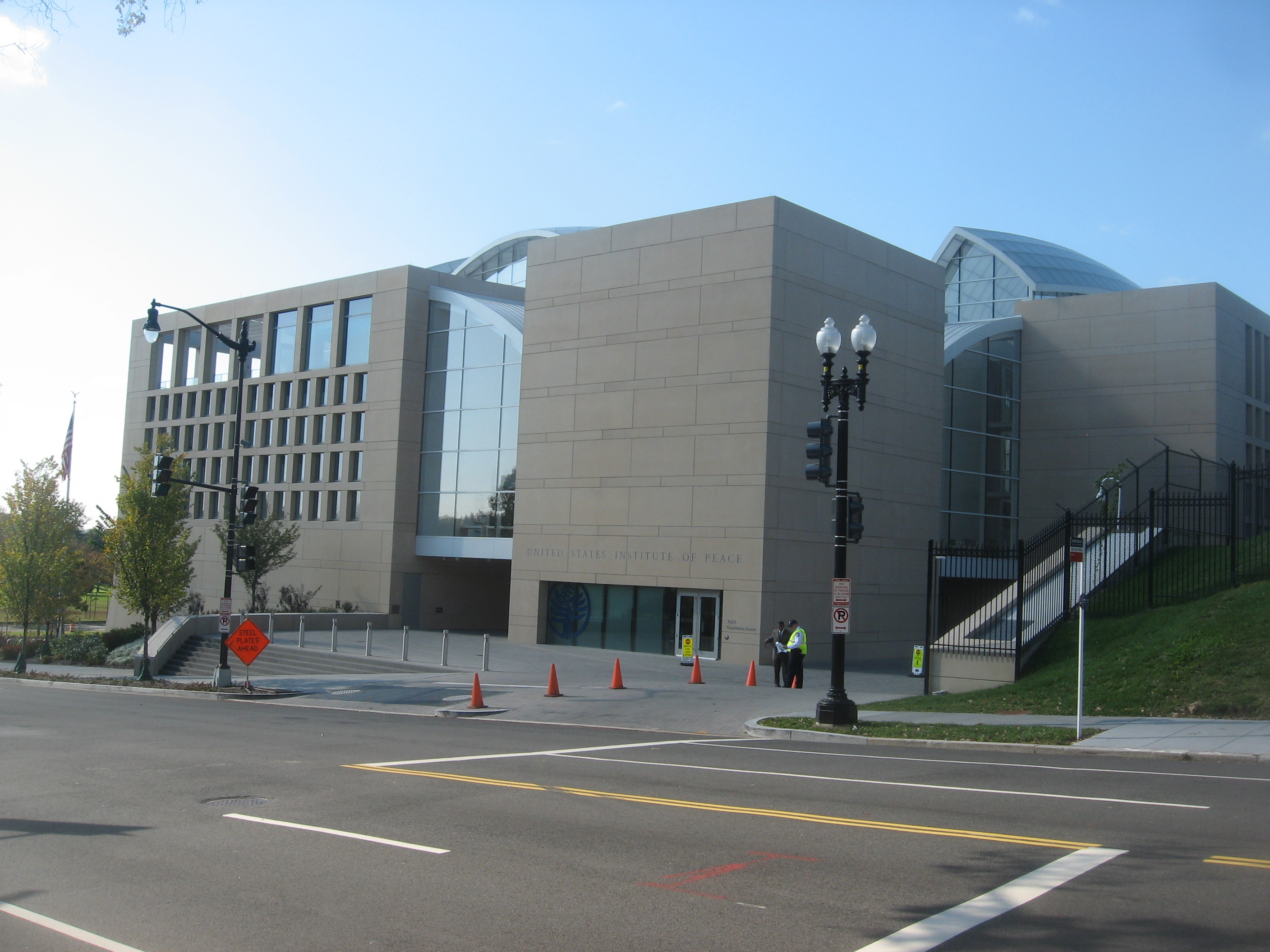
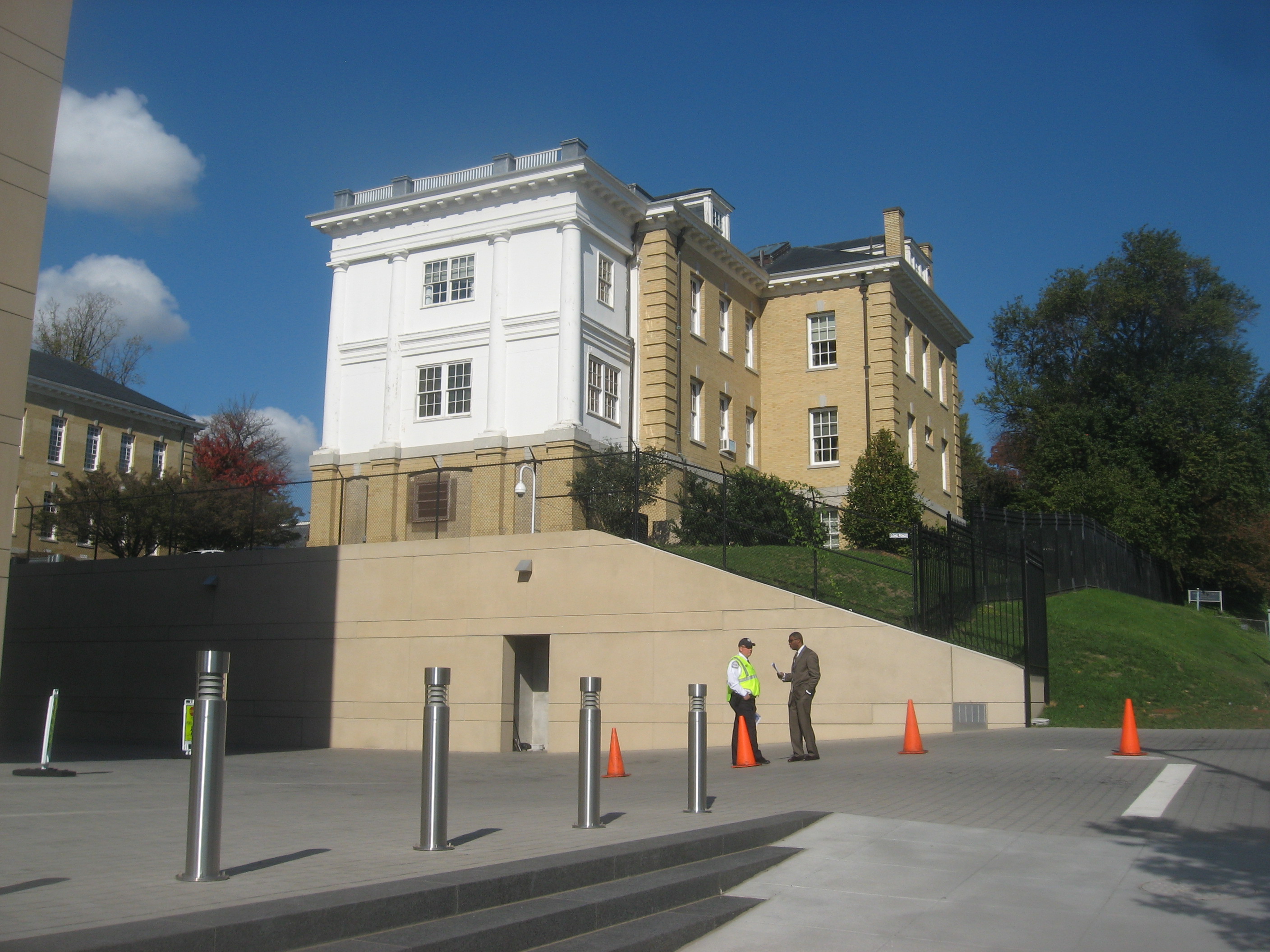
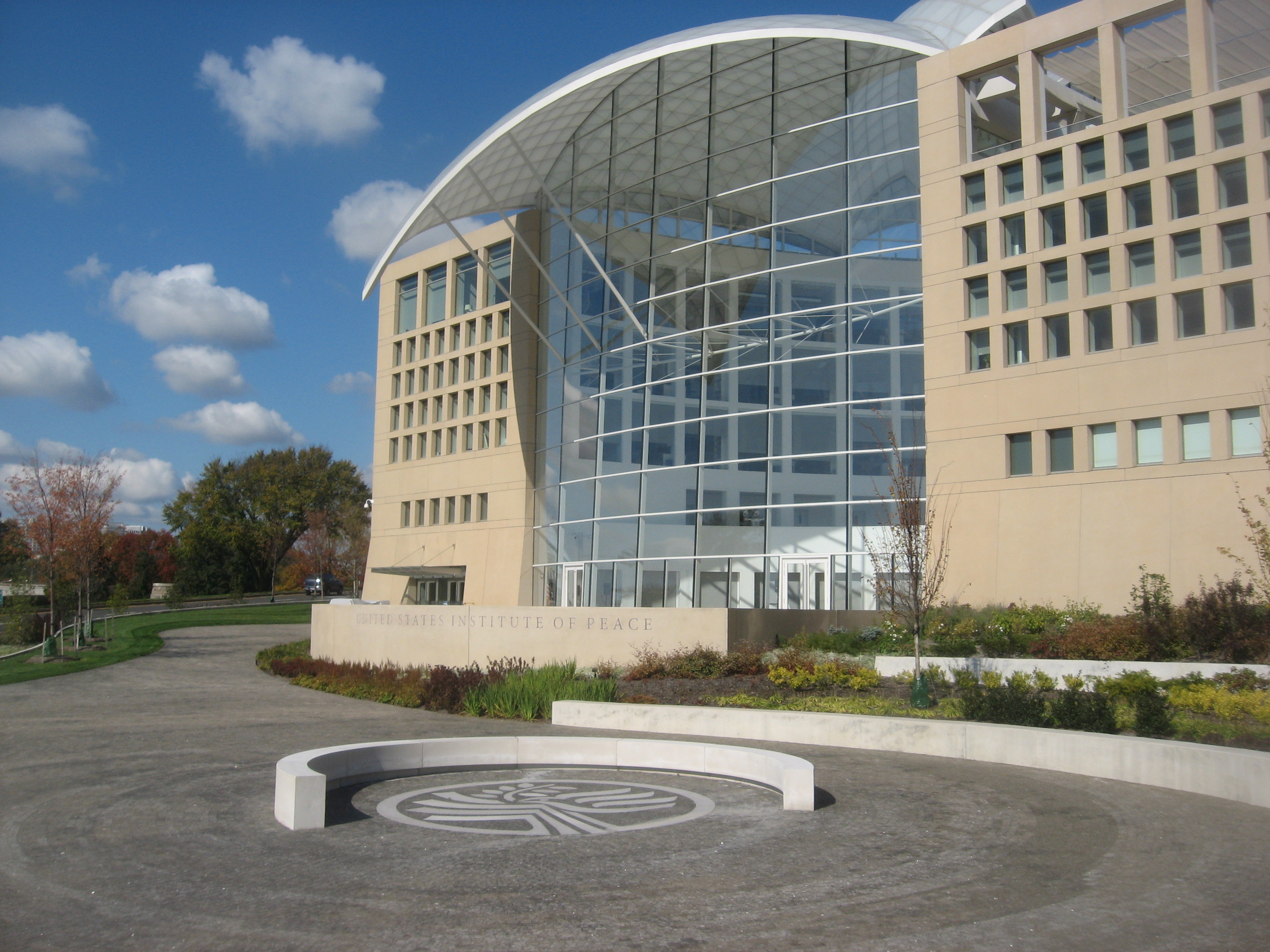
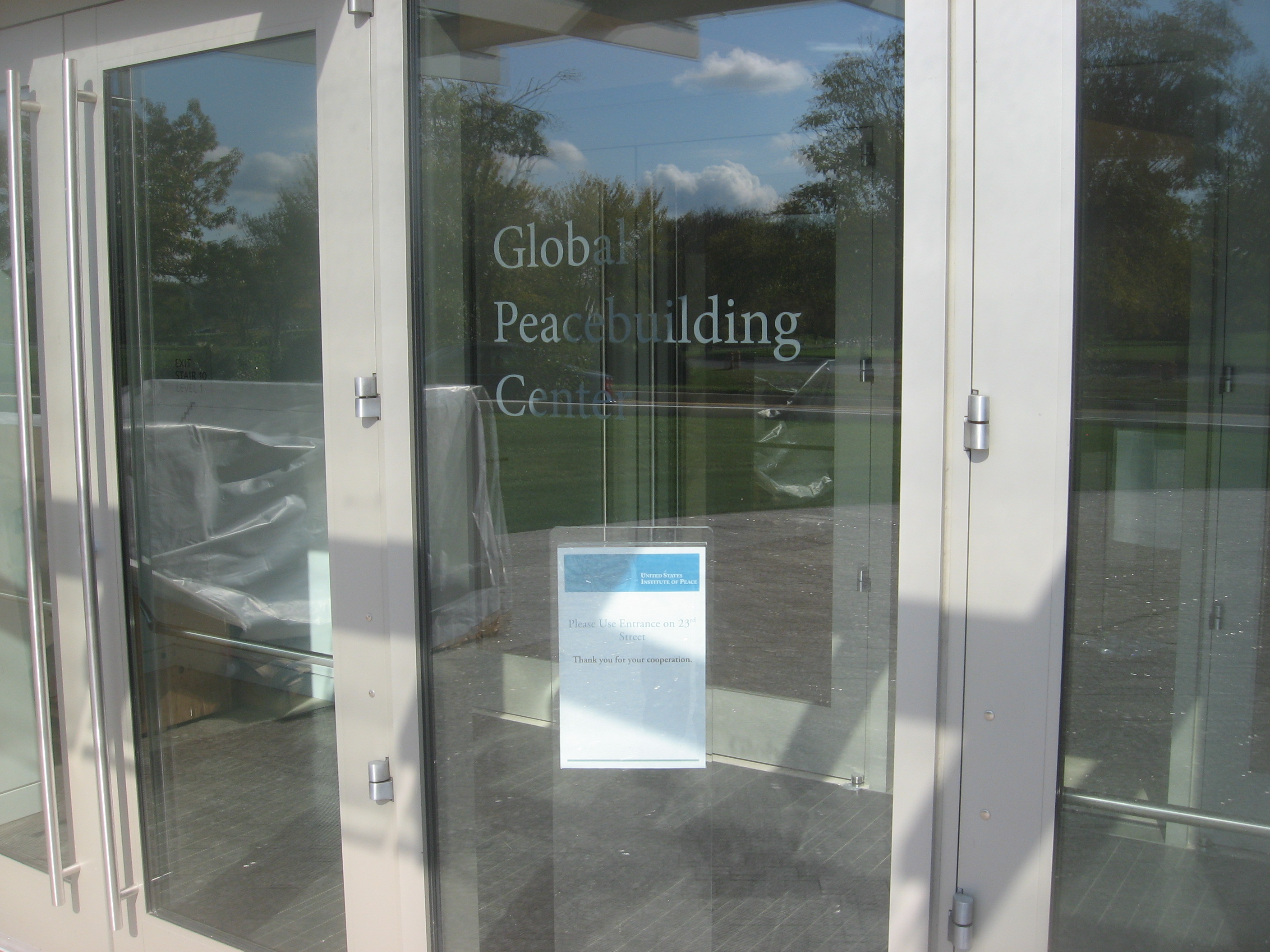
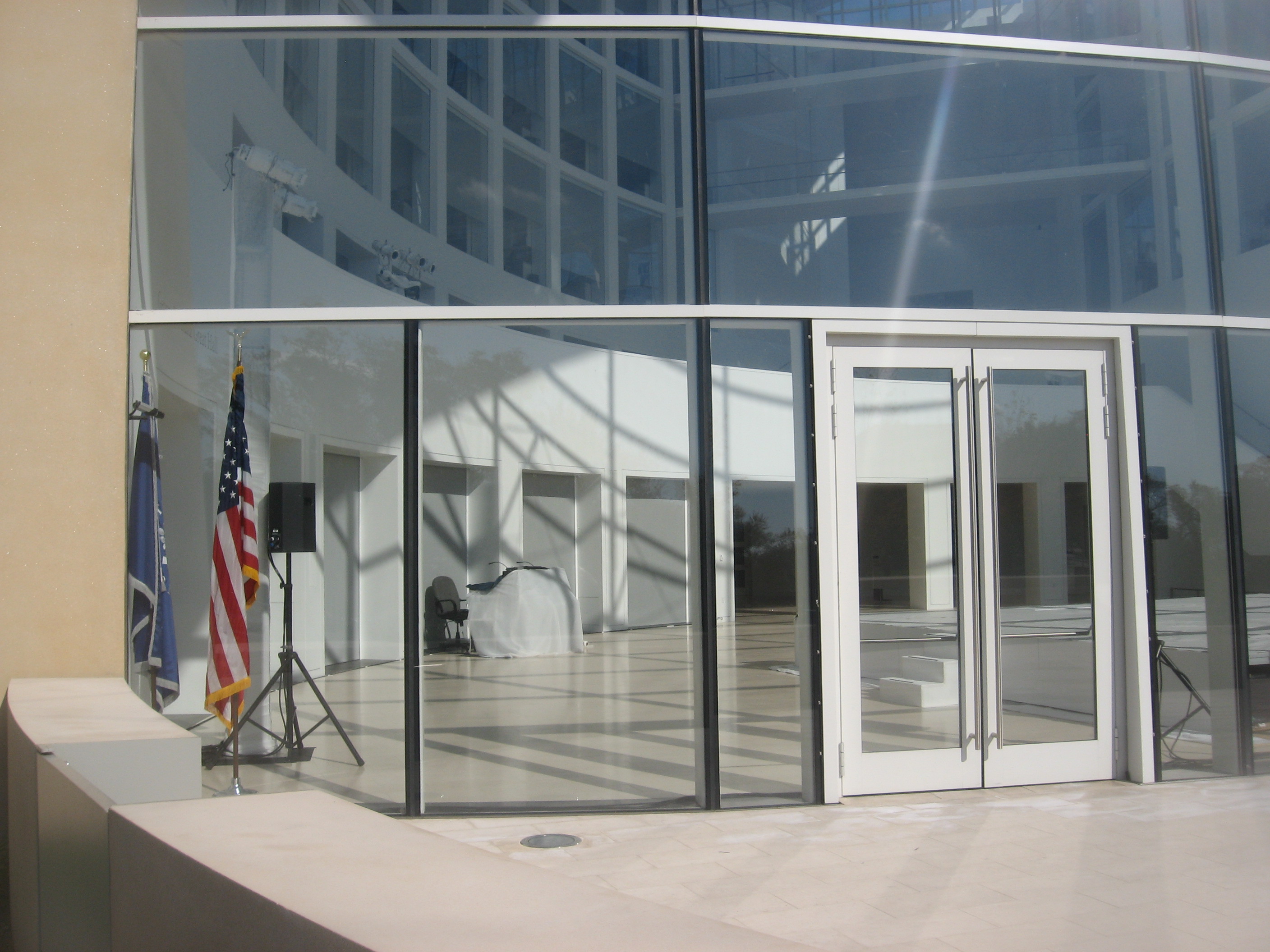
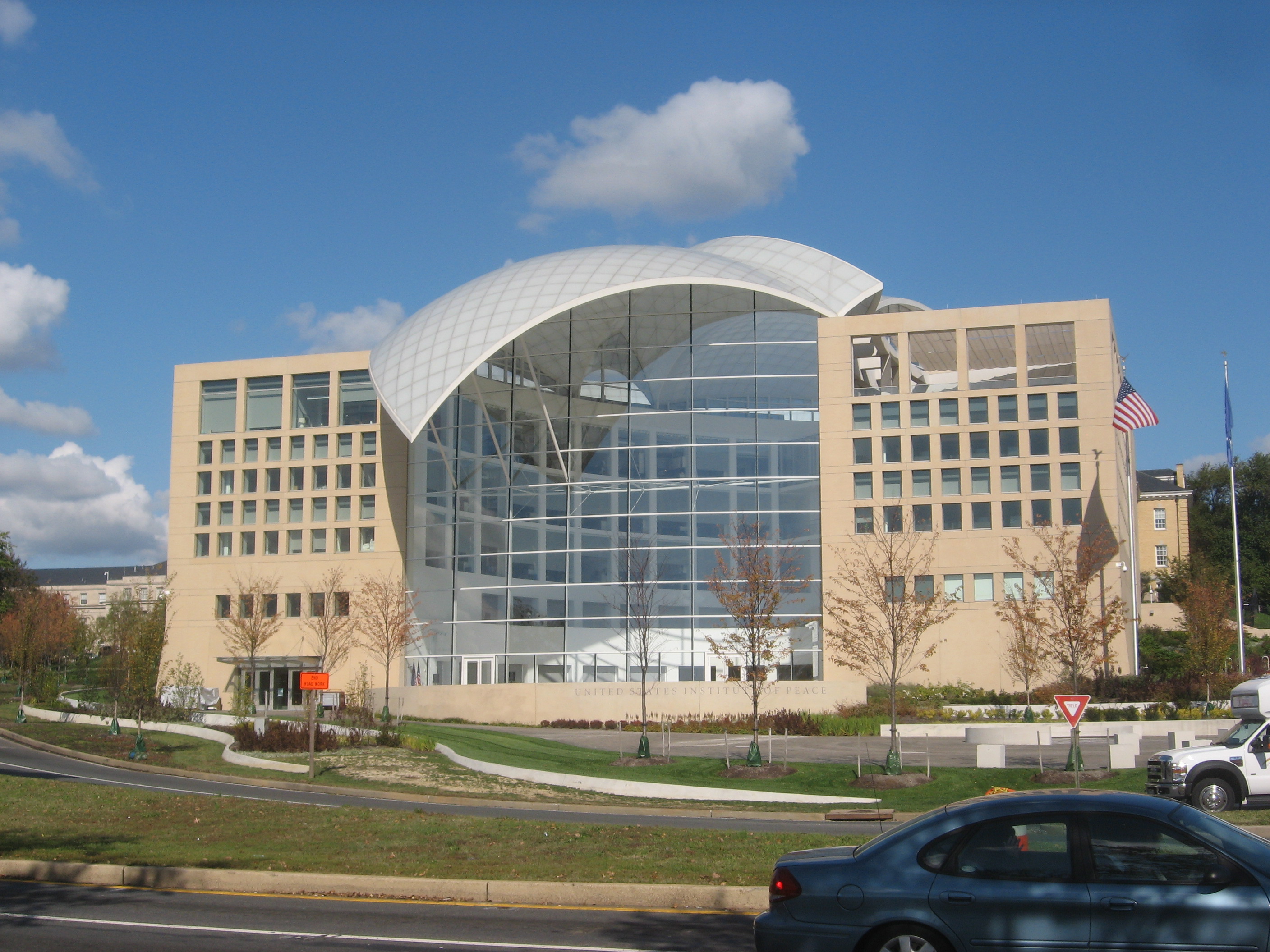 First two images are east side (along 23rd Street, NW). Old building is part of the Naval Medical Center (former US Observatory). Last four images are south side (along Constitution Avenue).
First two images are east side (along 23rd Street, NW). Old building is part of the Naval Medical Center (former US Observatory). Last four images are south side (along Constitution Avenue).
|
Unidentified monumentThere's a busy construction site for a monument of some kind just across Independence Avenue from the MLK Memorial. Does anyone know what this could be? I think it must be near the site chosen by Dr. Michael D. Knox of Tampa, Florida, for his proposed US Peace Memorial.
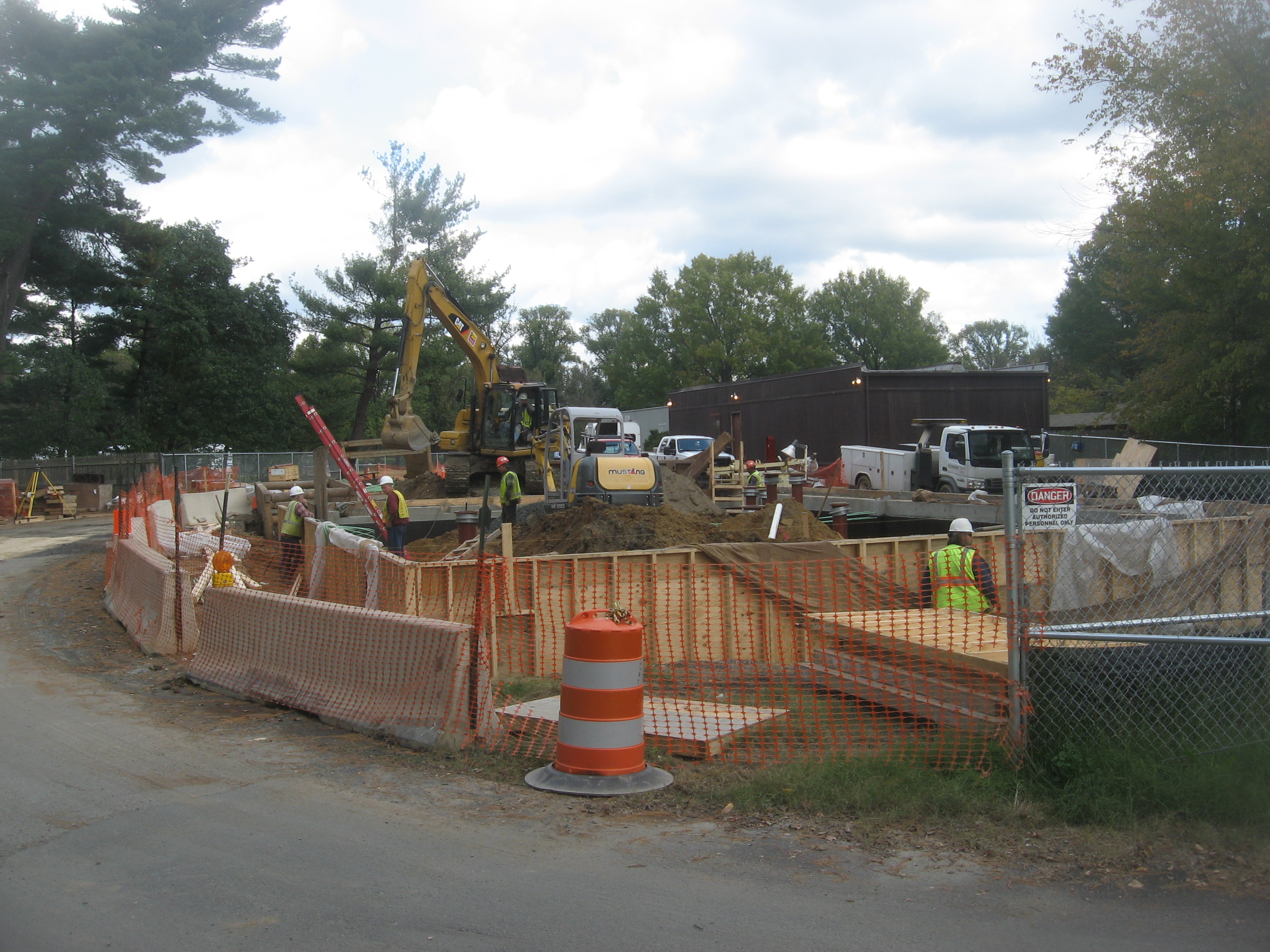
|
Click here to return to 2011.
Please email your comments & questions to geovisual @ comcast.net. Thank you.
Click here to return to Peace Monuments main page.
| 